The Minority Report - Focusing the Leica M - Part 1/5
Index of Thorsten Overgaard's user review pages on Leica M9, Leica M9-P, Leica M-E, Leica M9 Monochrom, Leica M10, Leica M10-P, Leica M10-D, Leica M10-R, Leica M10 Monohcrom, Leica M11, Leica M11-D, Leica M 240, Leica M-D 262, Leica M Monochrom 246, Leica SL, Leica SL2, Leica SL2-S, Leica SL3, Leica SL3-S as well as Leica TL2, Leica CL, Leica Q, Leica Q2, Leica Q2 Monochrom, Leica Q3 and Leica Q3 43:
By: Thorsten Overgaard, March 15, 2016, Last edit August 18, 2023.
Add to Flipboard Magazine.
The Leica M looks strangely small to most people who expect a professional camera to be huge. To new users trying to get into the Leica M, the focusing system is the biggest trouble understanding.
I can "cure" most people in my workshops who can't focus, so I thought I would write about it and see if this can remedy these difficulties. I am dedicating a portion of my article on the Leica M240 to focusing issues. I will be publishing the articles over the next weeks and months (so be patient, please).
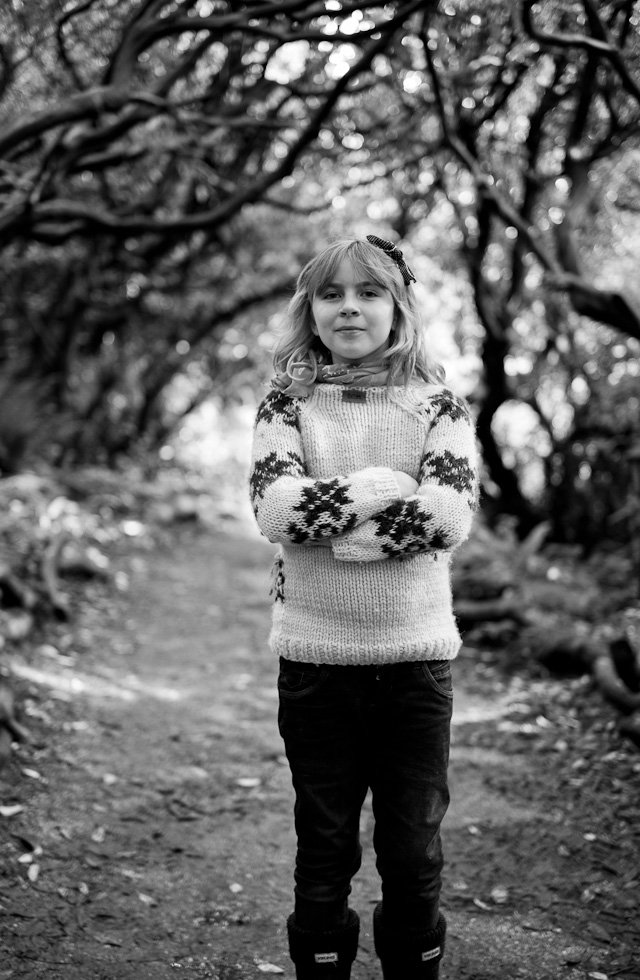
Robin in the UK. Leica M 240 with Leica 50mm APO-Summicron-M ASPH f/2.0. © Thorsten Overgaard (knitwear by Gudrun & Gudrun).
The Minority Report
You are a minority because right now ... you are reading about the Leica M rangefinder camera.
Please, continue.
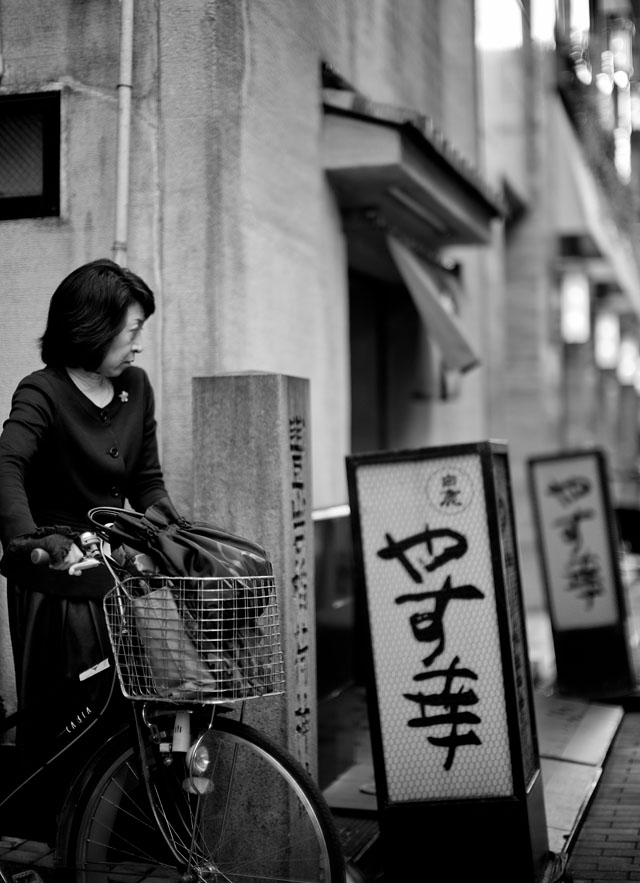
Ginza in Tokyo, 2015. Leica M 240 with Leica 50mm Noctilux-M ASPH f/0.95, 200 ISO, 1/750 sec.
© Thorsten Overgaard.
The focusing trouble
Many existing Leica M users find focusing their weakest point. Some blame the camera. Most blame their eyes, but as it turns out, almost everybody can learn to focus a Leica M. The addition of the Leica EVF-2 (Electronic ViewFinder) offers some advantages any Leica owner should experience.
I think that any type of focusing can be learned if you have to. In the video and movie industry all focusing is manually and in many cases done by a person external to the camera - a "focus puller" - who uses his eyes and a remote control to adjust the focus of the camera.
The Leica M is one of the few camera systems that still offer manual focusing. The M originally stands for the German word "Meßsucher" which means "Rangefinder" or "distance finder". Via an advanced optical system you can measure the distance very accurate.
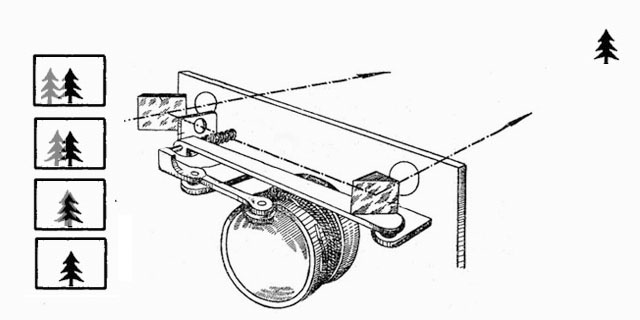
The idea of a rangefinder basically adopts the idea of using two eyes to judge the distance; just like your use your own two eyes. Unlike the eyes, you have to turn the focusing ring to make the two images match into one. In this illustration, the tree in front of the camera (upper right corner) is "double" and then, as you turn the focus ring on the lens, the two images overlap: That is the exact focus distance.
For you as the user, you are matching two overlapping images by trning the focusing ring on the lens, and when they are on top of each other, the image is in focus. More on that, later.

The object is "mirrored" by the optics and placed at the distance you turn the lens' focusing ring to. When the object is placed at the same distance as the object actually is, you see the image in the viewfinder and the overlapping "mirrored" image snap into one.
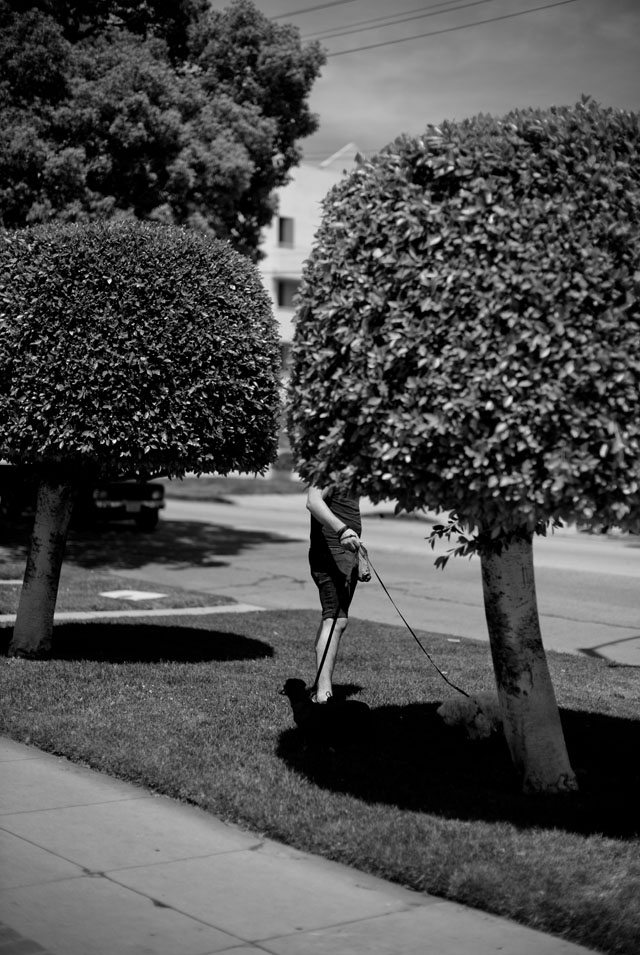
Los Angeles. Leica M 240 with Leica 50mm Noctilux-M ASPH f/0.95, 200 ISO at 1/3000 sec with 3-stop ND filter. © Thorsten Overgaard.
Introduction of autofocus
| |
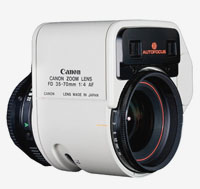 |
| |
In May 1981 Canon introduced their first autofocus lens, the
FD 35-70mm f/4 AF. |
| |
|
When autofocus was introduced on still cameras in the 1980's the main advantage was the speed of focusing. It arrived to the world of cameras at a period where motor winders were offering fast advancing of the film to the next frame. Speed was a big selling point.
For a period the technology of cameras seemed to be concentrated on speed. Always prepared, getting every moment. Professional photographers would go with the system that offered the fastest operation. In a way the decisive moment was dramatized to a degree that photographers seemed frantic to ensure they would never miss such a moment.
The elegant philosophy of Henri Cartier-Bresson who coined the term the decisive moment about that exact moment where the elements in a photo meets in a geometric pleasing composition along with an aesthetic framing and the all-together photo tells a story ... was being replaced with a frantic grabbing of every possible moment and never missing a beat.
It is sort of a degrade, an increasing of speed and quantity on the expense of quality. But that was how the times were. A few very successful sequences of motorized, autofocused events captured in the photojounalistic world those years probably convinced many photographers that a sequence of any devastating event would be too important to miss.

Burning Monk by Malcolm-Browne, 1961.
The next Overgaard Paris Workshop: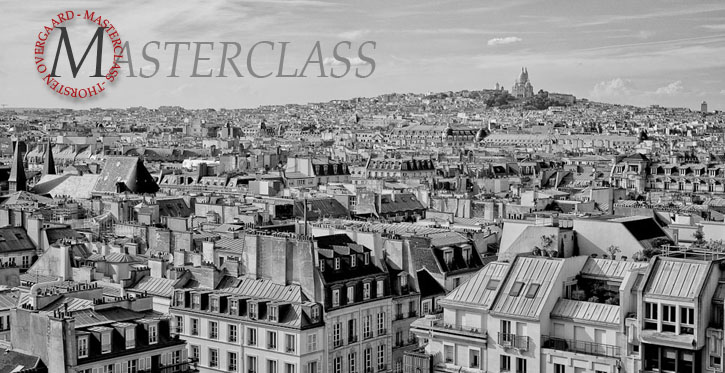
In our time, it's the need for higher ISO speed so that you may never miss a moment, no matter how little light there may be.
The need for speed was why Canon and Nikon for many years had market shares that looks like a sinus curve: Nikon would come out with faster something and all newspapers and magazines bought Nikon for their photojournalists and traded the Canon gear in. A few years later Canon came with something faster and everybody changed to Canon.
Most recently "everybody" changed to Nikon when they came out with faster ISO speeds. Nikon made the decision to go higher ISO on the expense of megapixels. It paid well, along with an aggressive campaign for trade in of Canon gear.
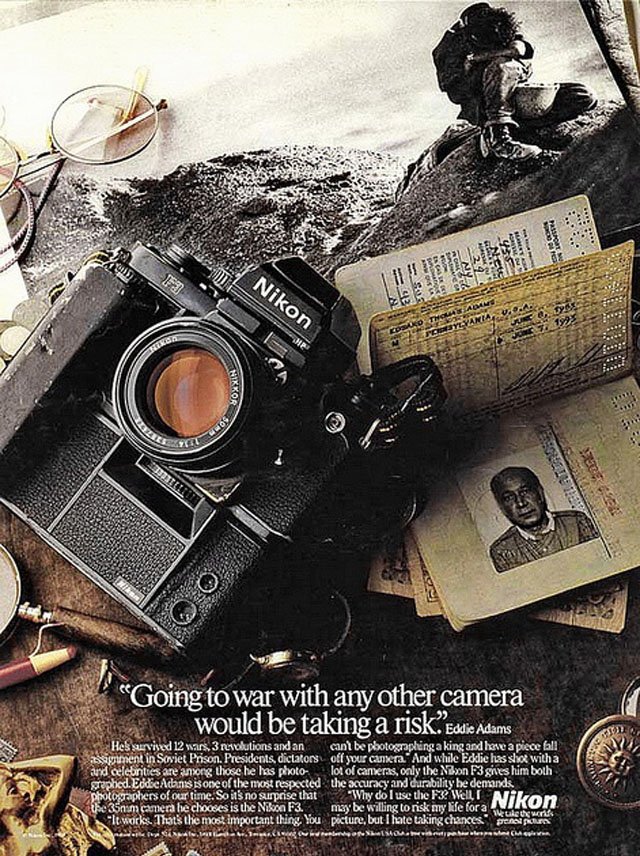
Nikon F3 was all about instant-automatic-fast-everything and was the weapon of choice for many pro's for a long time. I used a Nikon F3 HP for a long time.
Nikon introduced the Nikon F3 AF in April 1983 as the AF version of the de facto press camera model that went for a long while, the Nikon F3. They had tried since 1971 (with a prototype AF Nikkor 80mm f/4.0) to introduce autofocus without much success. But as pressure grew from Canon, both brands found AF to be the new thing to distinguish their camera systems. First for the professional market, then for the mass market in the late 1980's.
Inronically,
Leica invented autofocus
Leica skipped the autofocus entirely and stayed with manual focusing throughout this whole era. Ironically, Leica Camera AG invented the autofocus system in the 1960's and patented a number of autofocus technologies from 1960 to 1973. But Leica judged (quite wrongly) that nobody would be interested in it. They sold the patent to Minolta after two "unsuccessful" presentations at Photokina in 1976 and 1978 and stayed with manual focus lenses on both the Leica M and the Leica R system.
It wasn't an entirely bad decision by Leica Camera AG, but in commercial sense it probably almost killed the brand. Purely photographically speaking, manual focus lenses have some advantages.
The Leica lenses wouldn't be as sturdy and compact as they still are if Leica had made them into autofocus lenses. You can drop a Leica lens on the floor and it will still work. It's not recommended, but I know because I've done it.
With the Live View and electronic viewfinders we now have on the Leica M (and Leica Q2, Leica TL2, Leica CL and Leica SL 601) we can take advantage of the manual focusing lenses and at the same time enjoy the added precision and ease of use the electronic help tools offer.
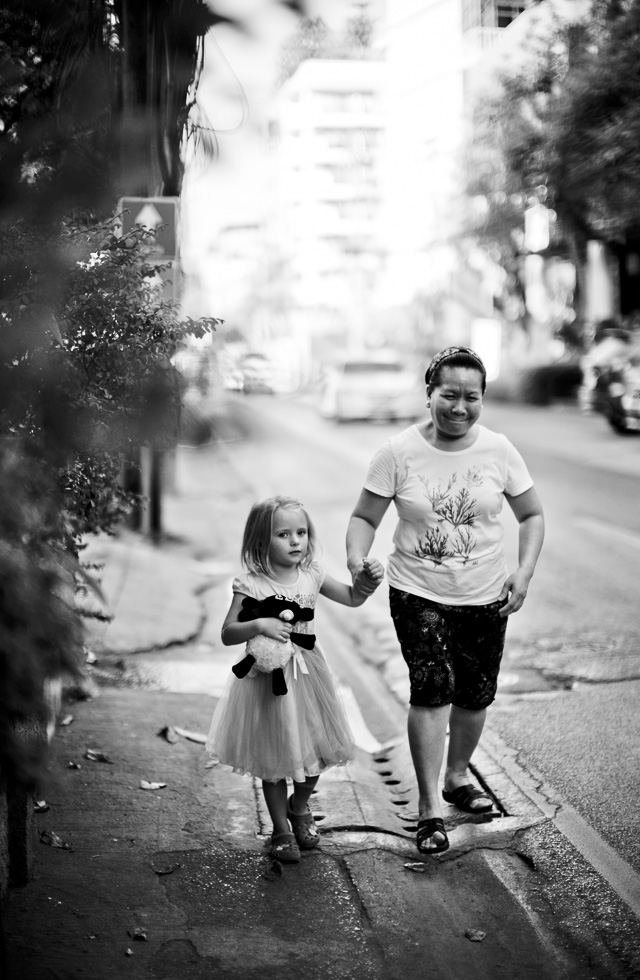
A princess with her nanny and doll in Bangkok, December 2015. Leica M 240 with Leica 50mm Noctilux-M ASPH f/0.95.
© Thorsten Overgaard.
| |
|
|
|
|
| |
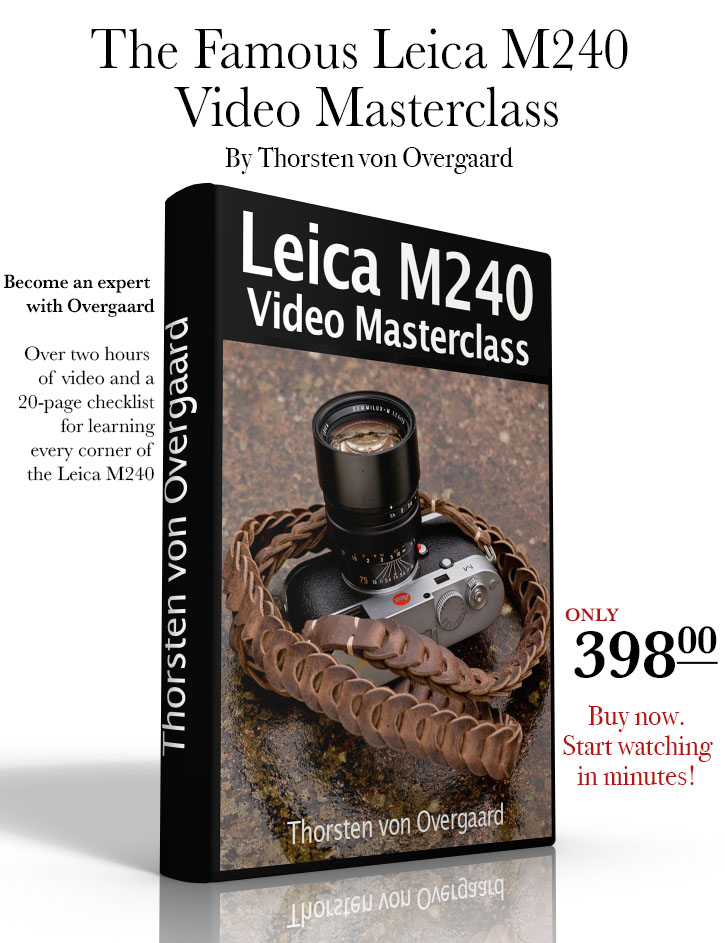 |
|
| |
|
|
|
|
| |
Full Leica M240 Pack:
Video Masterclass
+
Street Photography Masterclass
All about the Leica M240 video instruction masterclass (17 videos)
+ Street photography video masterclass
filmed in New York (11 videos).
+ 8 Bonus videos
+ Styles for Capture One for Leica M240
+ Lightroom Presets. for Leica M240
Normal price $1,192.00
Save 60%
Only $476.00
USE CODE: "ILOVEM240"

Order now. Instant delivery.
100% satisfaction or money back.
Item #1844-1848-0823 |
|
Leica M240
Video Masterclass
Two hours of video class
with Thorsten von Overgaard
+
20-page checklist for learning
every corner of the Leica M240.
For Computer, iPad or smartphone.
More info
Only $398.00

Order now. Instant delivery.
100% satisfaction or money back.
Item #1844-1017 |
|
| |
|
|
|
|
The breakthroughs in photography
The technical improvement of photography that in many cases have degraded the photograph itself (and perhaps made the process less artistic) all together make up a muddy picture. Let me go through the few important of the many inventions in photography, as I see them.
Photography could be summed up to four major breakthroughs: 1) Recording light, 2) Making photography broadly applicable, 3) Improved focusing, 4) Focusing through the lens, and ... 5) A lot of fluff!
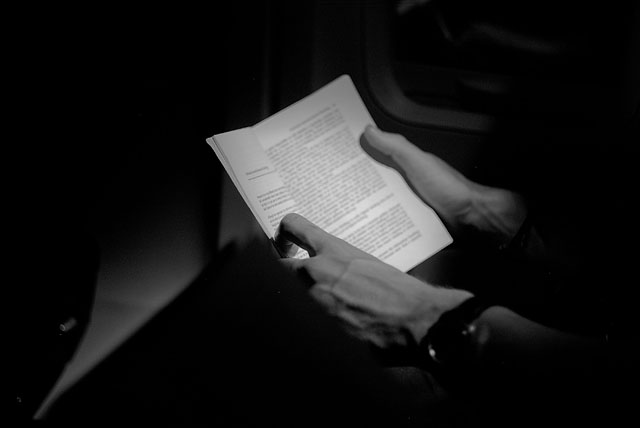 On the airplane. Leica M9 with Leica 50mm Noctilux-M f/1.0 at 800 ISO, 1/60 sec. © Thorsten Overgaard. On the airplane. Leica M9 with Leica 50mm Noctilux-M f/1.0 at 800 ISO, 1/60 sec. © Thorsten Overgaard.
1. Recording Light
The only real major breakthrough was the ability to record light. This is what enabled us to store a vision. In the very beginning it was done on metal-based "daguerreotype" plate (named after Mr. Louis Daguerre), then on paper-based "calotype" negative, and later on a glass plate.
If you think about it for a moment, you may see how this changed everything:
Before it became possible to record light and thus record and store a moment for eternity, we all had - and still have - the natural ability to recall an image of what we have seen. To share it, or simply look at it outside your mind, we had to learn to draw, paint or use word to create an image.
With the recording of light on a plate, you could share your view.
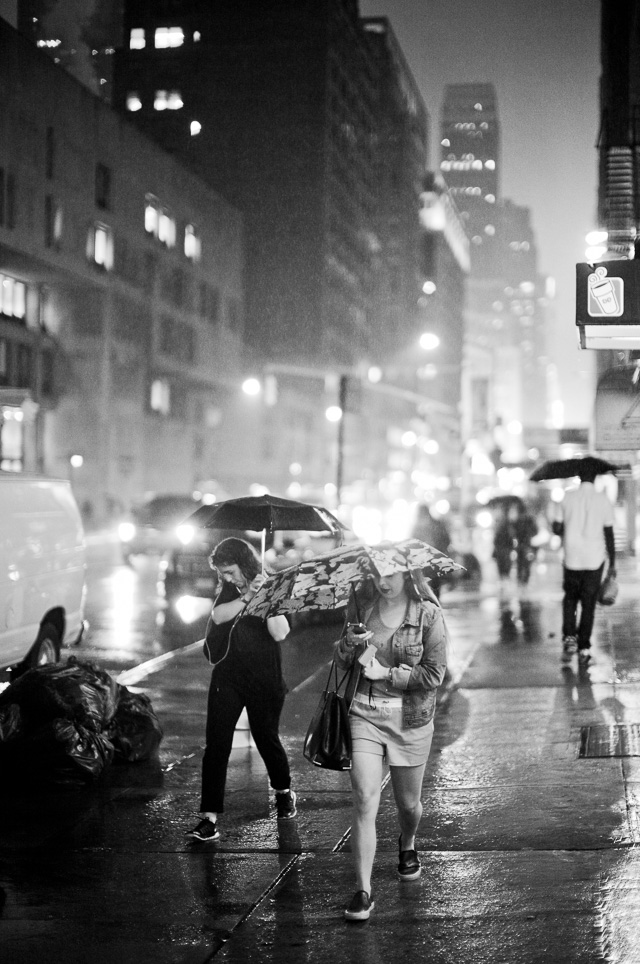
New York, September 2015. Leica M 240 with Leica 50mm Noctilux-M ASPH f/0.95.
© Thorsten Overgaard.
Often the invention of photography focus on the exposure, but it is actually the recording of light that is the new thing. Exposure is something we had to deal with so as to get the amount of light right.
In many ways, photography was thought out the right way from the beginning. Lenses, cameras, light controls, focusing and all were a working technology from very early on. But it wasn't accessible to the people. You had to be an engineer and know about chemistry, not to mention the financial side of the matter.
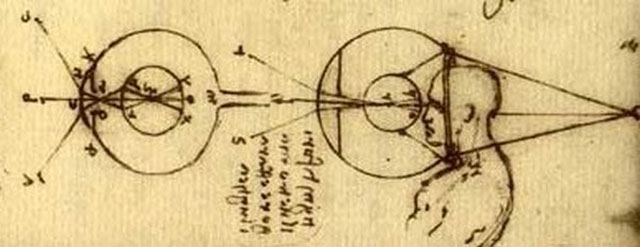
Leonardo da Vinci was all into optics long before it existed. Here he is playing with contact lenses back in 1500.
Optics of course played in, and there was a long period before the first photography where philosophers, inventors and scientists had a lot of fun with optics. It started with a tube filled with water which acted as an optical instrument. Leonardo da Vinci was all into optices before optics existed.
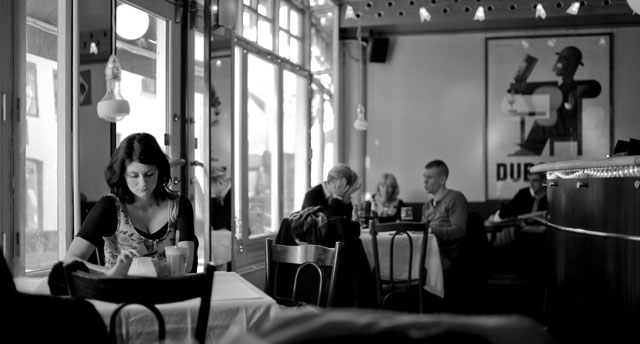
Pregnant woman in Cafe Englen, Denmark.Leica M9 with Leica 35mm Summilux-M ASPH f/1.4 FLE at 160 ISO, 1/180 sec. © Thorsten Overgaard.
Optics (which comes from Latin and means "seen") is essentially how to capture light rays so as to form a picture in the eye or on a surface (such as film or photographic sensor).
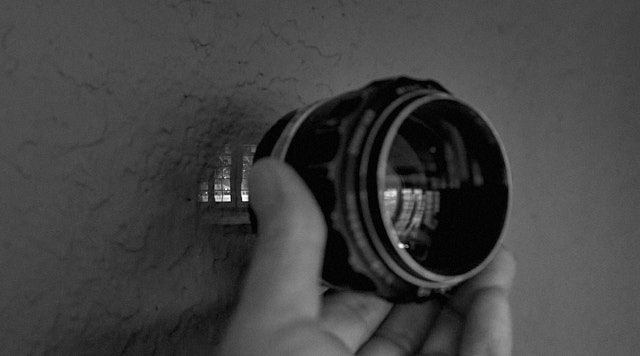
The image of my french doors in my house projected onto the wall via the 58mm Minolta f/1.2 lens. © Thorsten Overgaard.
As glass became the right element to built optics with, they build optics to get closer to the stars and they build optics for microscopes to enlarge the insect and flowers in the nature, not to mention the cells of the human body. Some artists used optics to create reflections of the world so they could make a drawing of it and use it to base a painting on.
Optics was a big thing; no doubt about it, but in terms of photography, the ability to record light was the starting point.
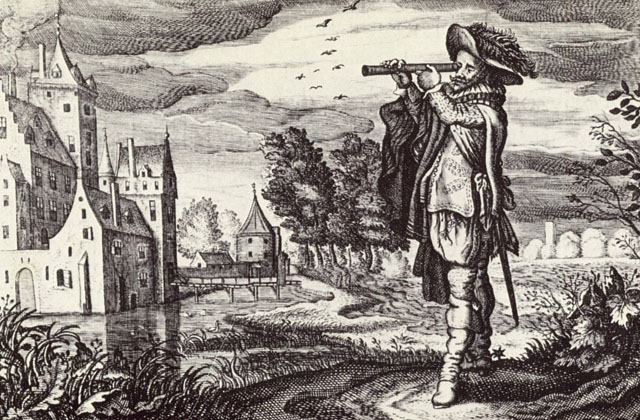
They build optics to get closer to the stars and they build optics for microscopes to enlarge the insect and flowers in the nature, not to mention the cells of the human body. Here a gentleman is playing with a "Dutch Telescope" in 1624.
2. A Camera for the People
| |
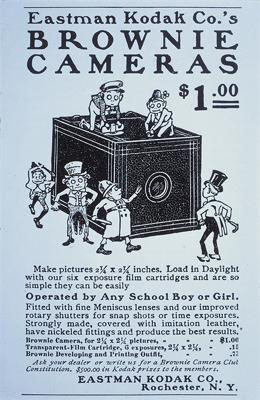 |
| |
Accessible: The Kodak Brownie was promoted as the camera "any school boy or girl" could use and sold for only $1 (equivalent to $29 today) |
| |
|
In my view, the second major breakthrough in photography was to make photography accessible to the people.
It happened when Kodak invented the roll-film that made it possible to record multiple images on a roll of plastic with light--sensitive chemistry.
The Kodak Brownie camera launched in February 1900 (designed by Frank A. Brownell) and with it, practical photography was introduced to the people.
A lot of people!
They invented the roll film earlier than this, as well a box camera, but the Kodak Brownie made it simple, portable and accessible. Inventing something isn't enough. It takes smart user-interface, marketing and all to get it into use.
So far only geeks had known how to use a camera. Now school boys and girls and women (who were seen many times in the ads) could use a camera and make photographs!
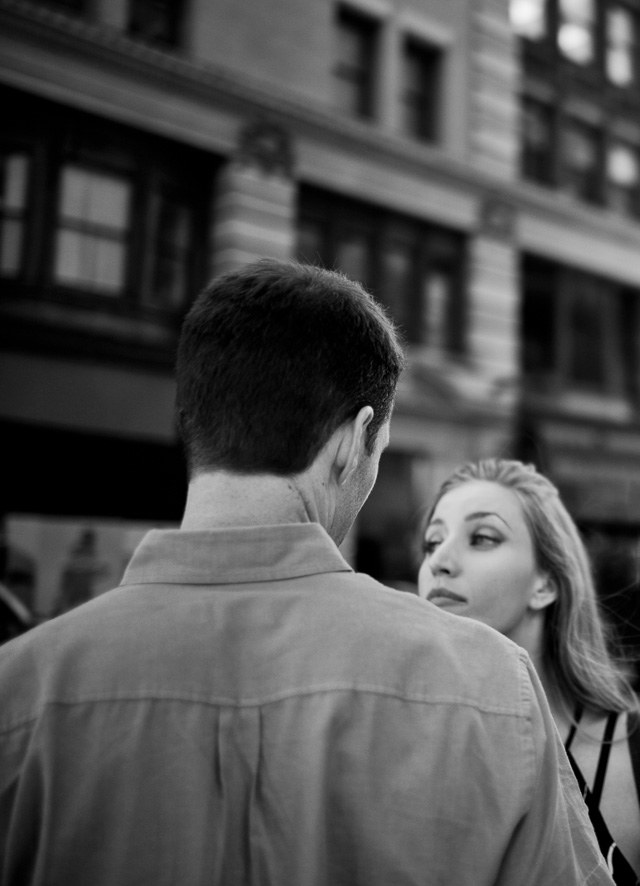
New York, September 2015. Leica M 240 with Leica 50mm Noctilux-M ASPH f/0.95.
© 2horsten Overgaard.
 |
NEW VERSION 11.3 |
 |
| |
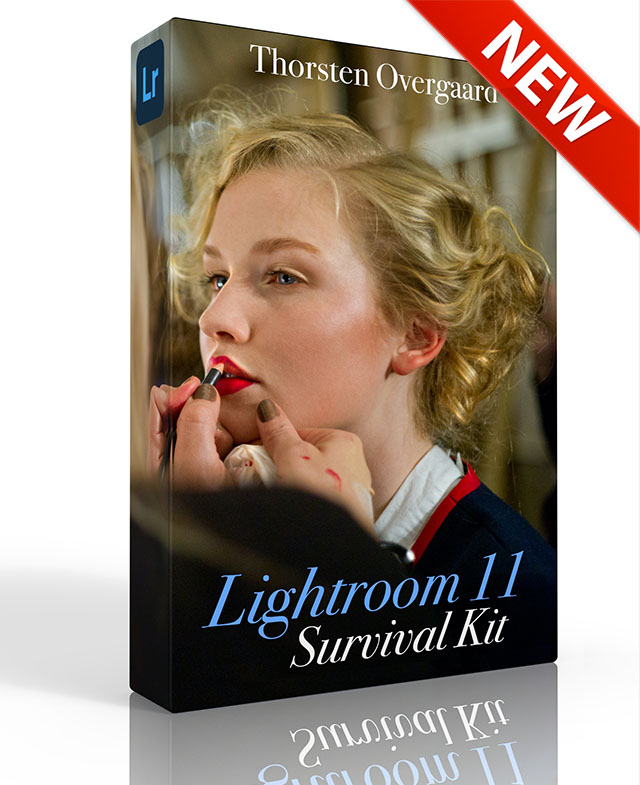 |
|
| |
|
| |
|
|
|
|
| |
|
| |
|
|
| |
Buy Now. Instant delivery.
New Version 11.3
ONLY $698.00

Now includes
4+ hours of
video tutorials.
100% satisfaction
or 100% refund.
More info.
|
|
| |
#2130-1121-3 |
|
| |
|
|
| |
Update to Version 11.3
Apply
code "UPDATE113" on checkout to get this complete version 11.3 update.
$298.00

Updates all previous Surival Kit versions since 2009. |
|
| |
|
|
Buy the complete new
Lightroom Survival Kit 11.3
The Legendary Tutorial for Photographers
Brand-new JUNE 2022-version.
Now with brand-new 4+ hours of video tutorials.
New sections on compostition and storytelling.
How to edit color photos.
How to edit black & white photos.
How to do keywords logical and easy.
The most successful photo editing kit ever
Photographer Thorsten Overgaard first released the Lightroom Survival Kit in 2009 and have honed it with new and fresh updates. This Version 11 is the most radical updated and renewed version ever, four years in the making.
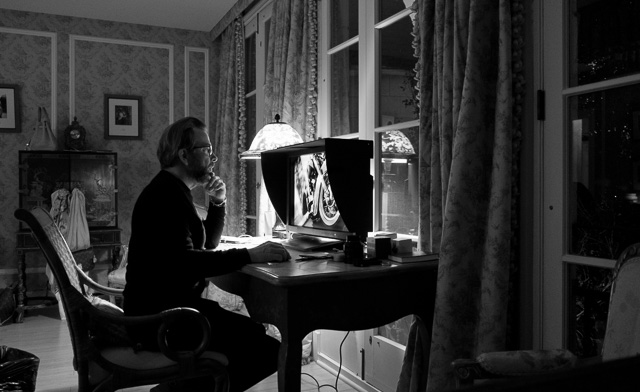
Professional workflow experience made simple, logical and easy to use.
Master editor makes it simple to understand
The Survival Kit is unique and one-of-a-kind being made for photographers for photographers. When someone understands their subject, they can explain it so it is easy to understand. The hallmark of Thorsten Overgaard is to make expert knowledge shown and told in a way so anyone can apply it.
Hands-on advice that works
With a 450 pages workbook and 4+ hours of video, every element of digital photography is touched on, in handy chapters and pre-flight checklists. Editing of color vs black and white photos, keywording, cropping of images, fine-tuning of tones, color balance and color control, export of originals, printing, archiving and backup, and much more.
Comes with the Overgaard Leica Presets (Value $48)
The Lightroom Survival Kit comes with Thorsten Overgaard's special-made Lightroom Presets for all digital cameras and for Leica digital cameras.
Understand all from camera to the final print
Chapters in this version goes over the background for High Dynamic Range (HDR), digital raw files and how to set up a professional photography workflow, from calibrating the screen to editing in Lightroom, and to making a final print. And more ...
10+ years experience in one package
No need to spend years figuring out the smartest way to do things when you can tap into the best way of doing things right here. The workflow of Thorsten Overgaard as been refined through years of field work with more than a thousand workshop attendees.
This method of workflow now used by thousands
The Survival Kit has been taught to thousands in workshops and in this Survival Kit. What does it do? It make you enjoy taking and making photos, and it increases your production considerabely. Most important of all, it'll give you back ownership of your files (which you will understand why is so important, once you have bought the Survival Kit and started applying its methods).
| |
|
|
| |
"Thorsten's methodology is perhaps not what hardware-, software- and cloud-companies want us to do, but as a former IT engineer I can only acknowledge his views about preserving our digital heritage. This workflow explained is for me the best I have ever seen".
★★★★★ |
|
| |
|
|
Video tutorials, image files, presets, checklists, definitions, tutorials of Lightroom, that boils down years of experience to a workflow you can implement in less than one day.
Start working in minutes. |
|
|
| |
|
| |
|
| |
|
| |
|
| |
|
| |
|
|
|
|
 |
|
 |
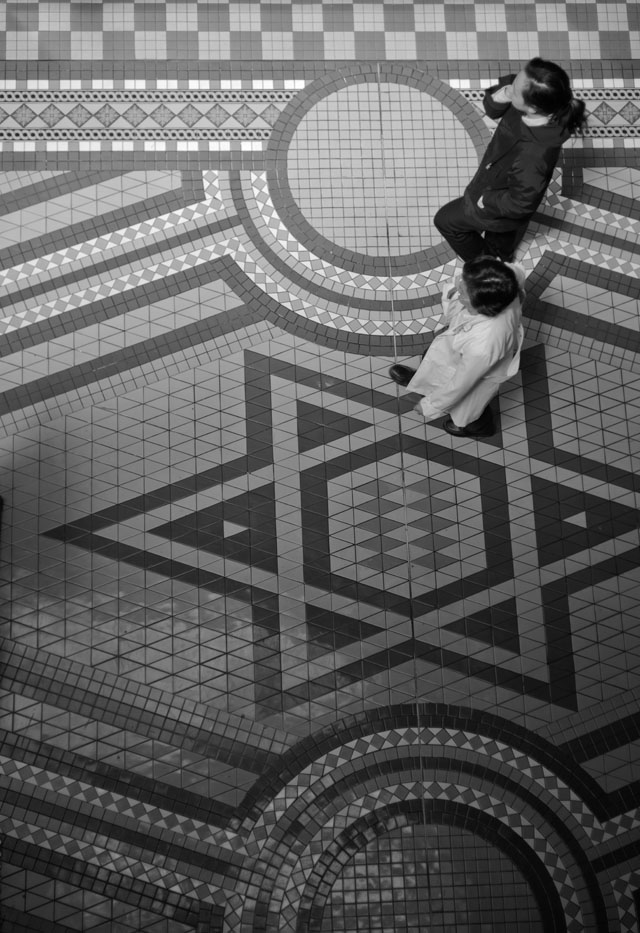
Sydney October 2011. Leica M9 with Leica 50mm Noctilux-M f/1.0 at 160 ISO, 1/360 sec. © Thorsten Overgaard.
An analogy could be when computers went from being a large installation in a room to becoming a personal computer everybody could have and use. The Brownie allowed adults and kids to take photographs and share moments and replaced the need for a large and expensive wooden camera that few would would even consider acquiring, less know how to use.
A cultural breakthrough!
To give an idea, Vivian Maier started her photographic career with that the Kodak Brownie. Henri Cartier-Bresson as well, and so did Ansel Adams who was gifted a Kodak No. 1 Brownie when he was 14 years old on a family holiday to Yosemite (National Park) in 1916 (who would have known back then what that would lead to?!). I have met qute a few Leica photographers who quote the Brownie for sparkling their first interest in photography.
Simply, without a Kodak Brownie, the world would look different.
Many of the biggest inventions have to do with communication: Trains, cars, airplanes, telephones, computers and Internet to name a few.
Photography was from the very beginning a very refined method of communication, much broader in possibilities for expression and emotional impact than the telephone, and (opposite the television) made for you to express your self.
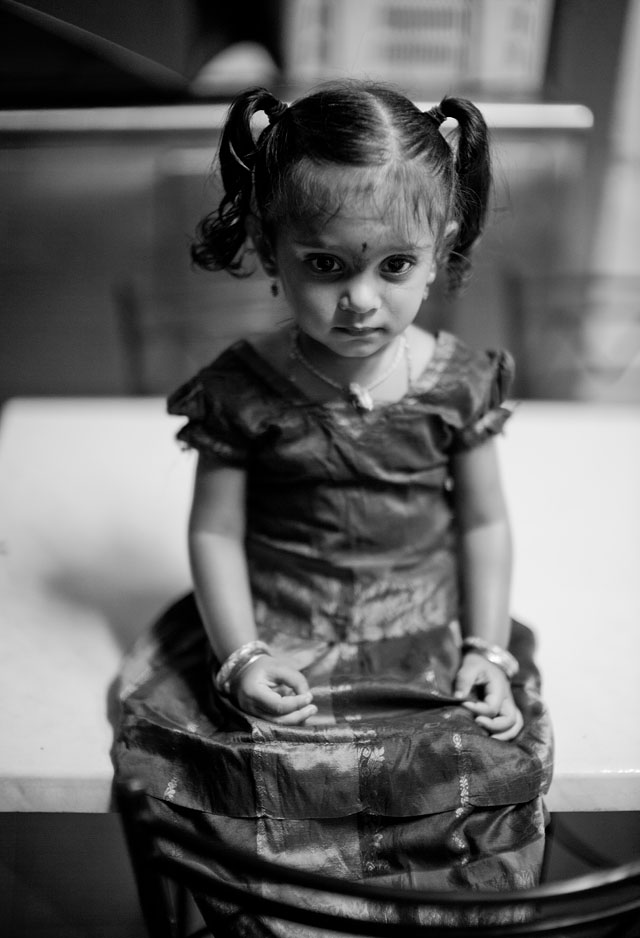
Indian girl in Singapore, December 2015. Leica M 240 with Leica 50mm Noctilux-M ASPH f/0.95, 1000 ISO, 1/180 sec. © Thorsten Overgaard.
| |
|
|
|
|
| |
Buy the new eBook
"The Freedom of Photographic Expression"
by Thorsten Overgaard |
|
| |
|
|
|
|
| |
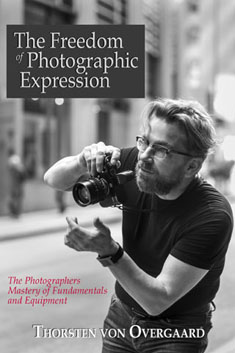
"The Freedom of
Photographic Expression"
eBook for computer, Kindle and iPad
Released March 2024.
First editon: October 2016
Now 303 pages. |
|
In this easy-to-read and easy-to-apply eBook,
Thorsten Overgaard takes beginners and experienced photographers through the basics of controlling the light and the camera.
This book covers the technical side of photography from beginners level to semi-pro, features a number of photographs by Thorsten Overgaard and chapters on his philosophy on photography.
Only $248.00
| |
|
|
| |
Buy Now

Instant Delivery. |
|
| |
|
|

|
|
| |
"I've bought the new book - made a start reading it - it is really interesting.
I know it’s basic at the beginning but it isn't written in a patronizing way. I have been taking photographs for many years and have been lucky enough to be paid to take them for the last seven years; but it's always good to be taken back to the start"
P. S. (UK) |
|
"Really enjoy your writing and teaching"
D. K. (USA)
"I love your insights on photography."
D.B. (USA)
★
★
★
★
★
★ |
|
|
3. Accurate focusing by optical measuring
The third breakthrough - in my opinion - was the rangefinder. Kodak introduced the rangefinder in 1916 in the Kodak Autographic. Leica and Zeiss refined it greatly from 1932.
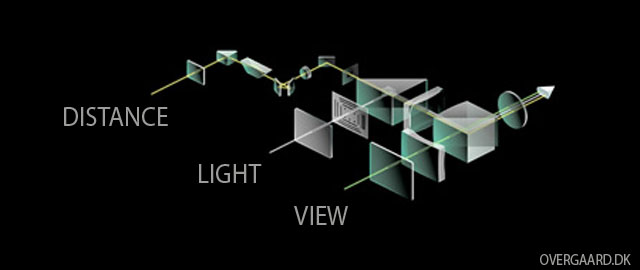
The user has a straight VIEW through viewfinder optics to he subject. Another prism mirrors into the users view the DISTANCE view - which is illuminated with LIGHT by the help of the center vindow on the camera. This middle window is also what lits up the framelines. In the Leica M 240 the middle window has been omitted and replaced with electronically lit up framelines that adjusts for the outdoor light so the framelines are extra strong in sunlight and less strong (dominant) in the dark.

The idea of a rangefinder basically adopts the idea of using two eyes to judge the distance; just like your use your own two eyes. Unlike the eyes, you have to turn the focusing ring to make the two images match into one. In this illustration, the tree in front of the camera (upper right corner) is "double" and then, as you turn the focus ring on the lens, the two images overlap: That is the exact focus distance.
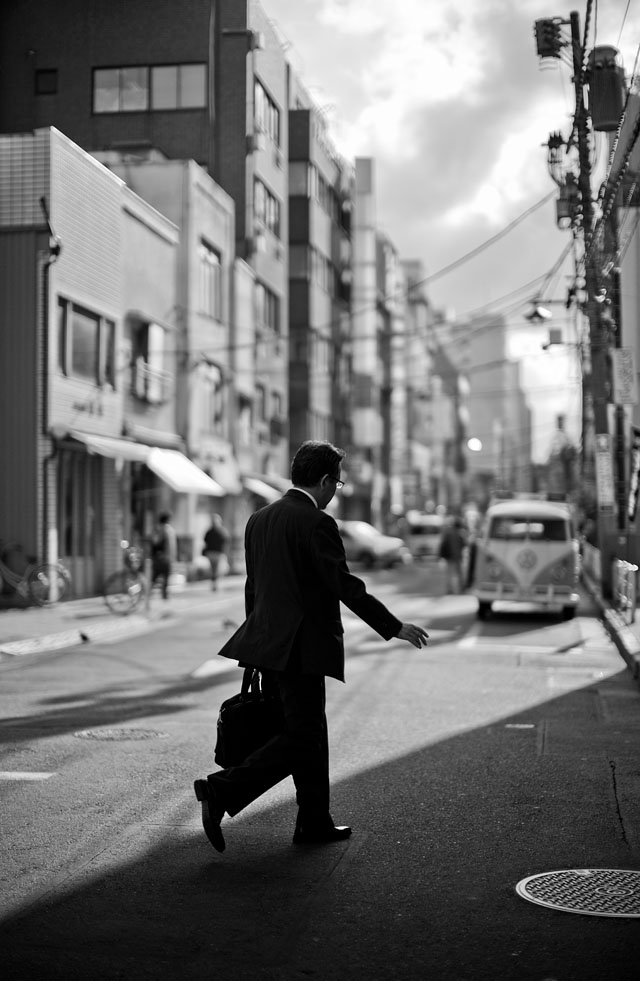
Kayabacho in Tokyo, December 2015. Leica M 240 with Leica 50mm Noctilux-M ASPH f/0.95, 200 ISO, 1/2000 sec. with 3-stop ND-filter. © Thorsten Overgaard.
| |
|
|
|
|
| |
Buy my "New Inspiration Extension Course"
|
|
| |
|
|
|
|
| |
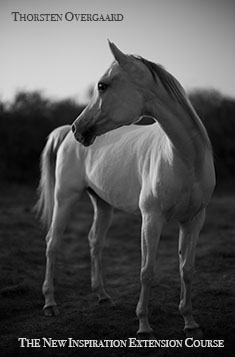
Need more info?
Read this article. |
|
Get inspired and rebooted!
This extension course if made for you! It can be done at home and travel at your own pace. I have taught workshops for years and the Overgaard New Inspiration Extension Course is my experience compressed to a package of training, articles, drills, assignments and video tutorials that will inspire you and take your photography to the next level! For a limited time my course includes something you cannot get anywhere or anytime else:
A portfolio-review by Thorsten Overgaard.
| |
|
|
| |
"The Overgaard
New Inspiration
Extension Course"
For computer and iPad. 181 p eBook. |
|
| |
Only $798 |
|
| |
|
|
| |
 |
|
| |
|
|
| |

|
|
| |
|
|
Order now - Instant delivery. |
|
| |
|
|
|
|
Suddenly focusing was not only a matter of reading a focusing dial with numbers on a lens and guessing the distance you could see with the eyes. You could use the optical viewfinder to focus with a new level of accuracy!
Until the Leica M3 in 1954, the rangefinder, the viewfinder and the lens were three separate optics on a Leica. In the Leica M3, the rangefinder we know today, was introduced:: The preview of the image, the frame lines and focusing coupled diretly to the lens. All in one view.
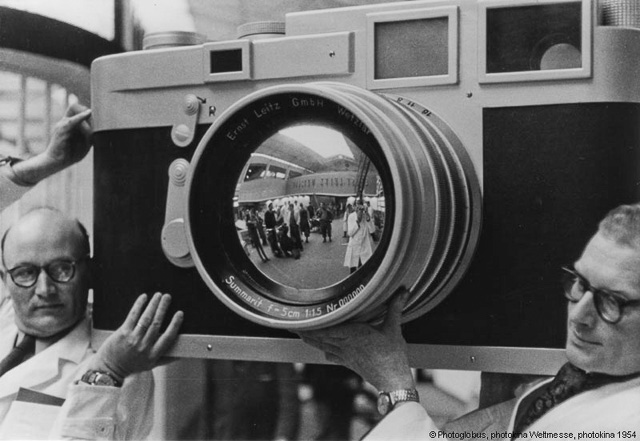
Photokina 1954 where two employees from Ernst Leitz Wetzlar (Leica Camera AG) carries a large Leica M3 camera model to the fair. © 1954 Photoglobus.
4. Focusing Through the Camera Lens
The fourth breakthrough was when someone invented the idea of focusing through the lens and previews the photo on a matte screen (via a mirror).
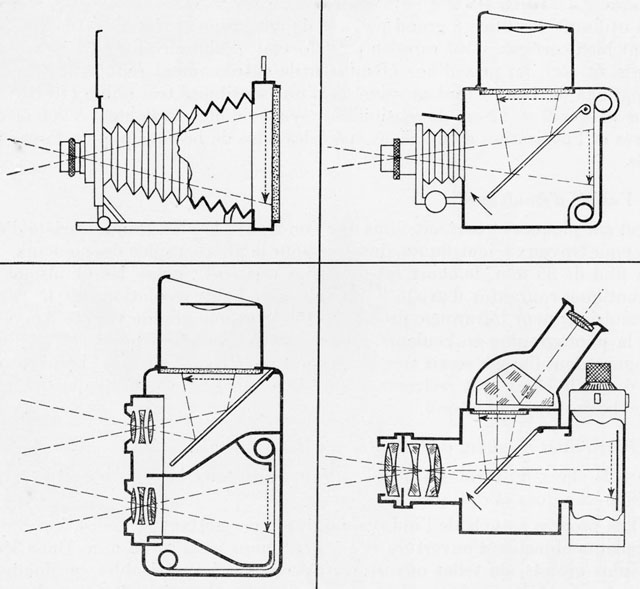
Different cameras focusing on a matte screen. Top left; directly onto the matte screen. Top right: Via a mirror to a matte screen. Bottom left: Via a mirror to a matte screen, but with a twin lens taking the actual picture. Bottom right: Via a mirror to a matte screen; and a prism (often as acessory) enabling the photographer to view the image close and looking at it without outside light interfering. Also the prism would 'unreverse' the image so you didn't have to move the camera to the left to capture more on the right, etc.
It was a known principle from the first days of photography to focus through the lens on a matte screen. The photographer would go under the black cloth and look at a matte screen.
It was made handheld for everybody with the Rollieflex in 1929 with two lenes (one to see the image on a matte screen and another to photogrpah it onto the film) and that principle was later refined with seeing the image through the main lens via a mirror that would move away the moment the shutter release was pressed so as to send the image to the film rather than the eye. Simple and brilliant!
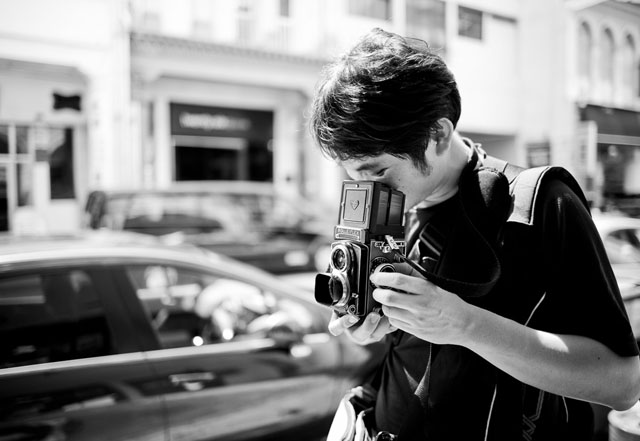
A contemporary tourist in Singapore using his two-eye Rollieflex film camera. Each camera has a fixed set of twin lenses that can't be replaced; you buy a tele camera if you need one and a wide angle if you need that. The similar Mamiya C330 system offered the same two-lens design, but with interchangeable lenses.
© Thorsten Overgaard . Leica M 240 with Leica 28mm Summilux-M ASPH f/1.4
5. All the Other Fluff
On top of these essential inventions, the history of photography is filled, smacked and packed with small and big inventions and refinements that did something to complicate, refine or change photography ... or often simply to distinguish one model from another in marketing.
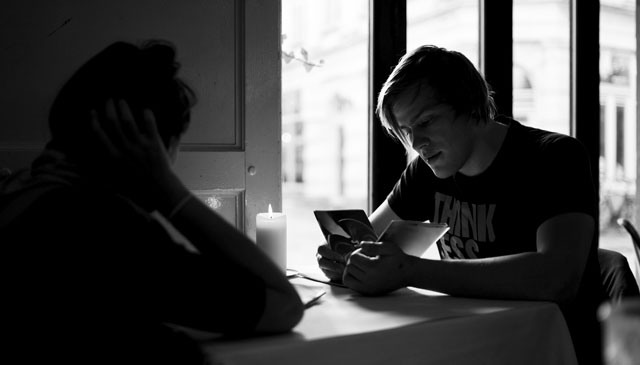
Leica M9 with Leica 35mm Summilux-M ASPH f/1.4 FLE at 160 ISO, 1/500 sec. © Thorsten Overgaard.
Digital sensors not to forget. It was a major breakthrough, but in terms of the photography basics it didn't change anything. Photography is still about capturing light. With digital sensors the light was recorded and stored digitally instead of chemically.
Digital has made photography way more accessible and is one of the reasons photography is one of the most popular subjects in the world today. The smartphone has become the Kodak Brownie of our time. Any school boy or girl can use a smartphone camera.
The Freedom of Photographic Expression
In my view the important steps in the development of photography was the ones that made the freedom of photographic expression more accessible. A technology is only valuable if it is of use.
The technology of chemistry to record images (now largely replaced by electronics to record images) and lenses is mind-boggling. But apart from that underlying technology that you don't have to know to master the art of taking a photograph, photography was very simple from the beginning.
It still is, fundamentally, except that the subject has become unnecessarily complicated.
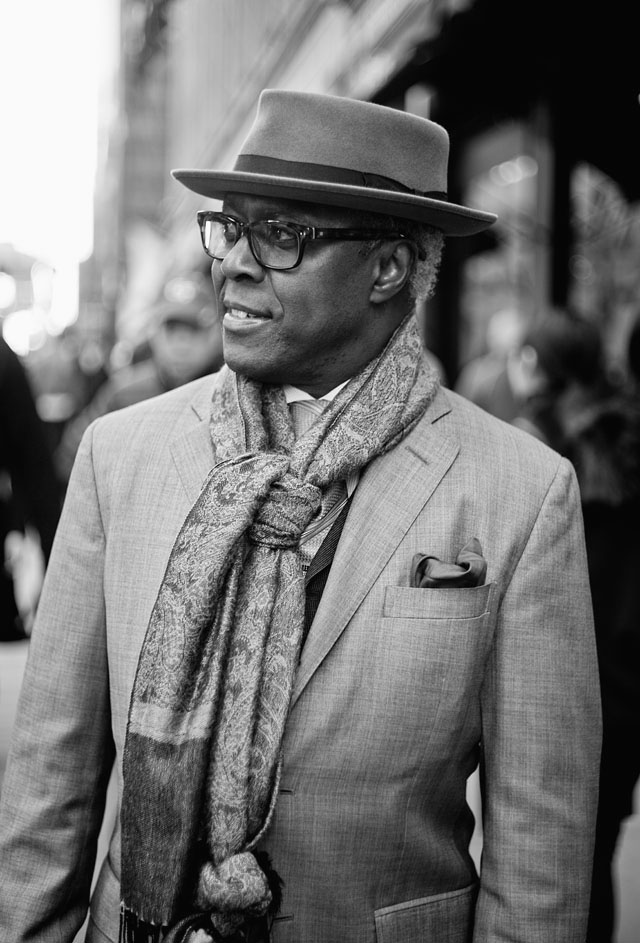
5th Avenue in New York.
Leica M 240 with Leica 50mm Summicron-M f/2.0, 200 ISO, 1/1250 sec.
© Thorsten Overgaard.
Complicating Something Elementary
When I walk through a department store and see an "Electric Tie Rack with LED light" I get a slight headache.
Some times a subject becomes complicated to make it exclusive. Some times things just get complicated because some people have too much time on their hands and too few brilliant ideas to invent something useful.
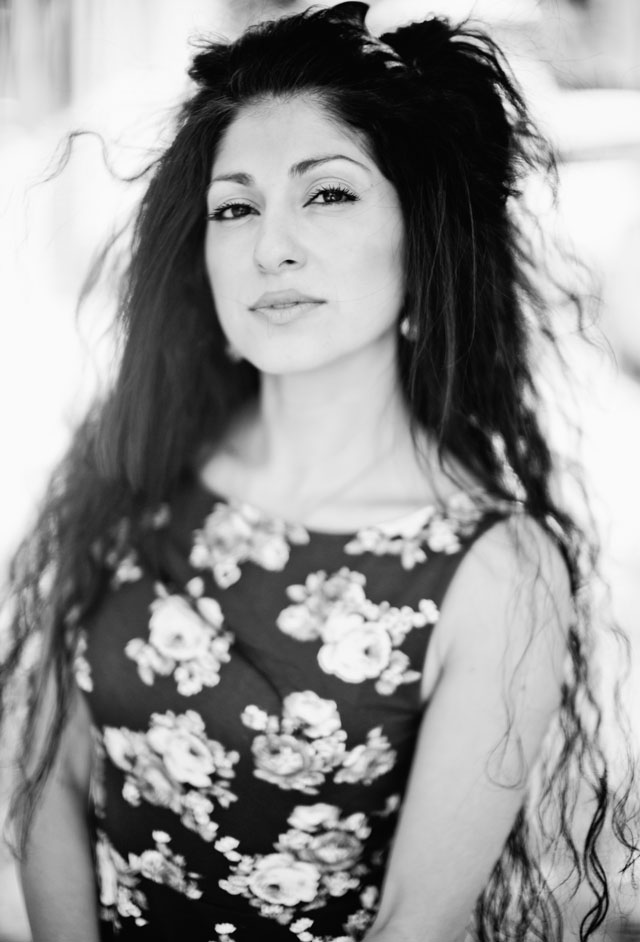
Recording artist Re-Arna Constantine. Leica M 240 with Leica 50mm Noctilux-M ASPH f/0.95. © 2Thorsten Overgaard.
So we get consumer goods and consumer features to "help" us that complicate things. But what else are we to do with our time and money in a consumer society? Cameras are full of crap features and many photo stores are full of gadgets that will improve your photography by giving you more to understand and more to carry.
... when all you need is a simple Kodak Brownie camera.
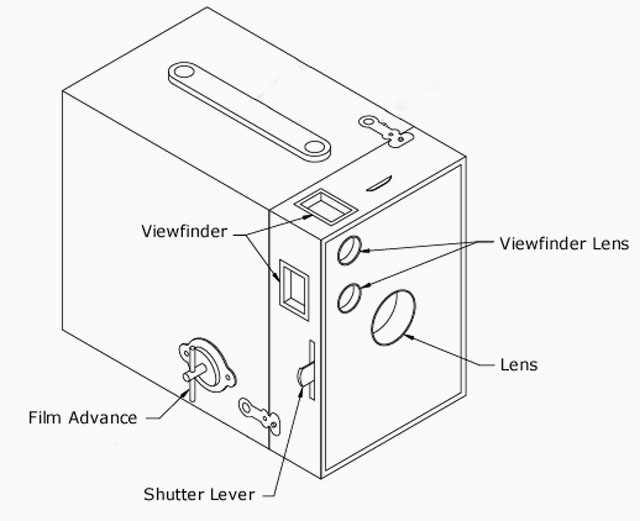
The Kodak Brownie in al it's simplicity. Yet it contains all the features you need to make a photograph.
Consumer-society meets a simple idea
You want to express yourself, and photography is perfect. This is what you face in photography and many other aspects of life: Somebody wants you to get the next thing, some accessories and sign up for something.
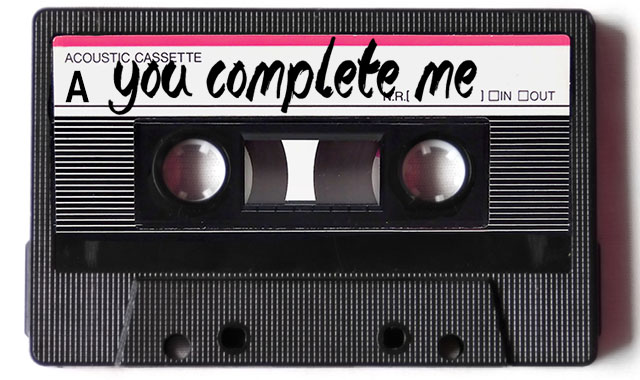
A few years back, all you needed to make life pleasurable and to seduce a woman was a mixtape.
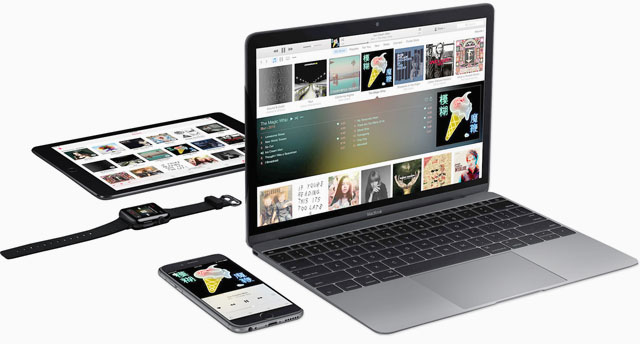
Today, if you want music, sign up for $9.95 a month and have it all, everywhere. Did that make us happier than when we rotated the same mixtape for months or years?
The Power of Simplicity
In an age where many people hope to be in a position where they can send their kids to schools and universities for a lot of years to learn to be successful in life, it might be hard to agree with me that the easier it is to do a thing, the better. The mind and spirit is far superior to any technology invented, so the more we rely on our self rather than a hard-learned skill, the more brilliant the result can be.
Give the mind some simple tools to work with.
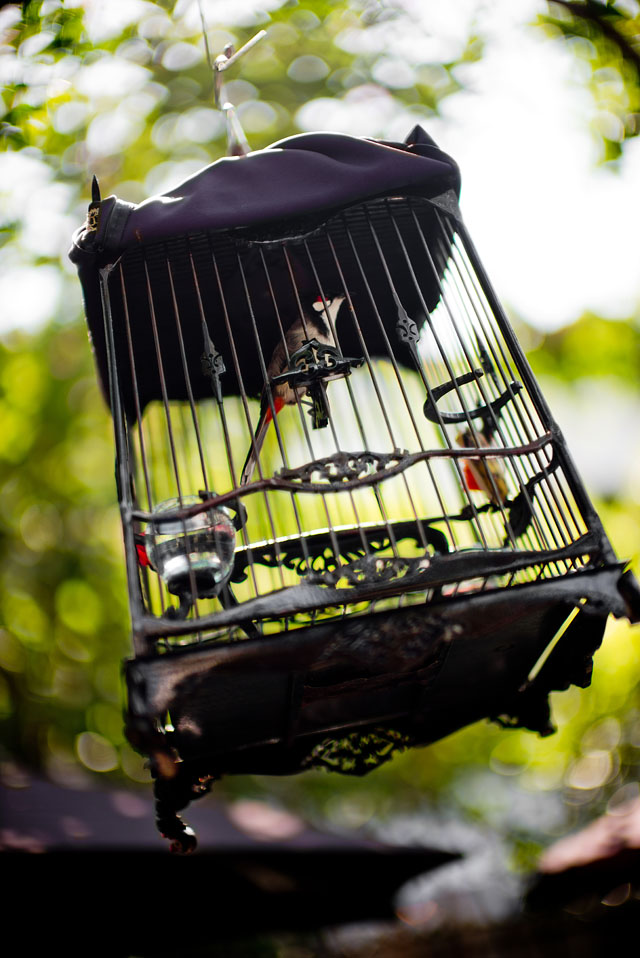
Bird in a cage. Bangkok, December 2015. Leica M 240 with Leica 50mm Noctilux-M ASPH f/0.95, 200 ISO, 1/250 sec. with 3-stop ND filter. © Thorsten Overgaard.
Wise men like Einstein, Stephen Hawking and Steve Jobs had their breakthroughs when they were young and filled with ideas and asked questions like "Why not?".
It is interesting that with a strong intention and little education you can accomplish anything, but with a lot of education and no intention, not much really happens. I find it much more interesting discussing a young persons passion, rather than what books to read or which schools would provide the best papers.
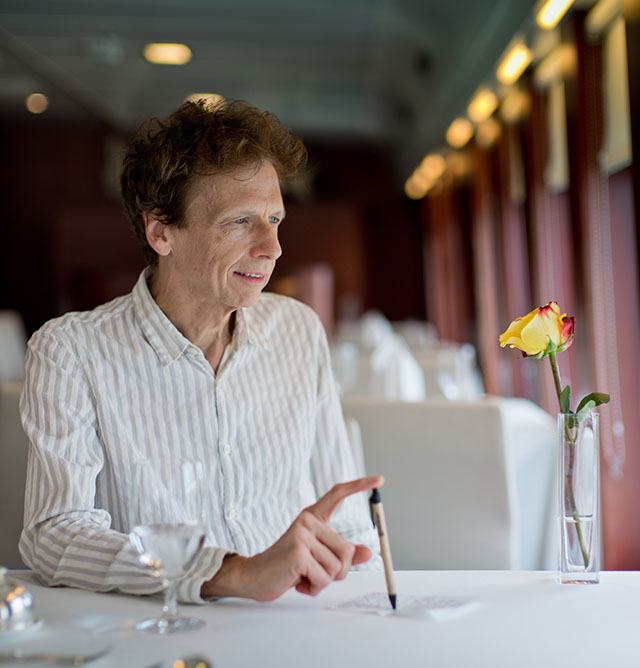
American composer and arrranger David Campbell. Leica M 240 with Leica 50mm Noctilux-M ASPH f/0.95. © Thorsten Overgaard.
Clarity and distribution of my message
In my opinion, the simple Kodak Brownie is the ideal to look at for a fully functional, portable, economical camera. From that standpoint ask yourself, "How can I improve my freedom of photographic expression further from this?"
For me, the answer to that question is, "How can I enable myself to improve the clarity of my communication and make it easier to share my photographs?"
The answer that many rely on is "automatic" which - sounds like bliss but - in reality is the route to the most mediocre results. You cannot become a great writer with an "automatic" writing program. It's not that it has to be complicated. On the contrary it has to be so simple that it removes complications between your ideas and the written word.
A pen and paper.
Or a typewriter.
A camera is essentially a portable darkroom with two dials to controls how much light comes into the box.
And a lens to control the light rays.
That's all.
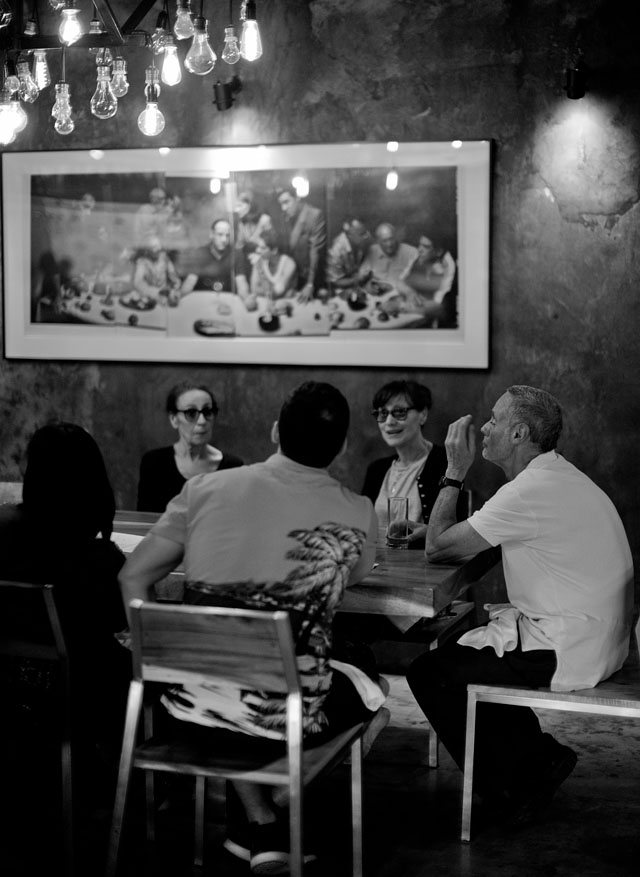
Bangkok family dinner, December 2015 (Restaurant Peppina). Leica M 240 with Leica 50mm Noctilux-M ASPH f/0.95, 1600 ISO, 1/90 sec. © Thorsten Overgaard.
That was the Kodak Brownie. It made photography accessible. What to improve from there? The short answer would be improved optics, improved focusing, as well as enabling me faster ways to handle the image files and ways to share my photographs with those who I would want to see them.
Considering how simple photography was to begin with, and how all the fundamental elements were in place to take a photo back then, the task today is to cut through the bullshit and keep the path simple.
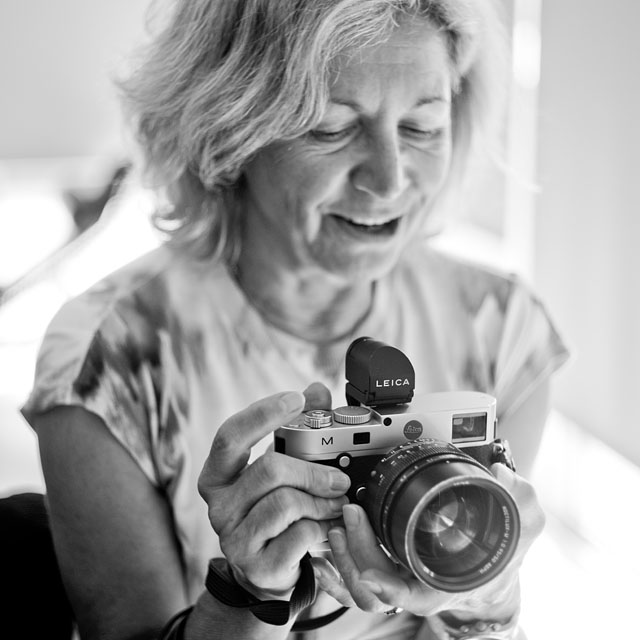
Love at first sight, Sydney 2015. Leica M 240 withLeica 50mm Summicron-M f/2.0, 200 ISO, 1/125 sec. © Thorsten Overgaard.
In my personal view, the Leica M is the most simple camera existing. It is so simple that it's almost the same camera as the prototype Oskar Barnack made in 1914.
The only major departure in the principle between the Kodak Brownie and the Leica M is that the price is not as acessible. You have to be passionate to afford a Leica, you won't get one by just by being curious.
Your role as photographer
Your role is - as far as the technical skills are concerned - simply to get the exposure right. And the focus.
Despite your job description didn't take up more than a line of text above, I'll now be spending several pages on how to get the focus right.
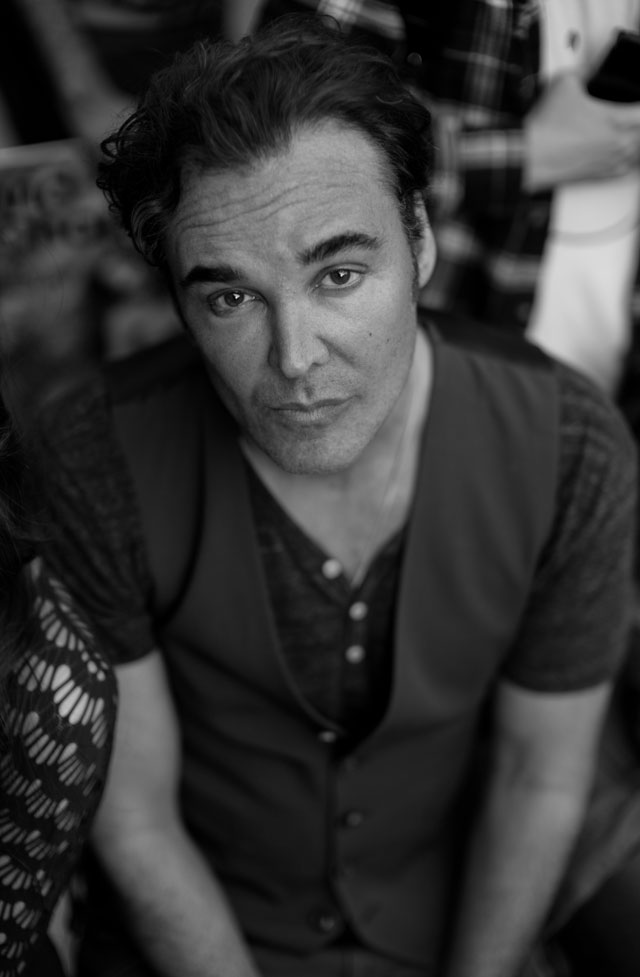
David LaChapelle. Leica M 240 with Leica 50mm Noctilux-M ASPH f/0.95. © Thorsten Overgaard.
The different focusing systems
I've made this overview of five focusing systems: The Leica M rangefinder focusing, the EVF-2 Electronic Viewfinder (Live View) and traditional SLR focusing systems so as to explain the differences.

1. Manual focusing with the Leica M Rangefinder
Manual focusing is quick and intuitive as soon as you have gotten the hang of it. It triggers your imagination and creative freedom - it is you who make the picture and give you all control of the focus of the image. But even if you have used it for 30 years you will some times go completely wrong because the only indicator of focus is what you perceive in the center split field.
When you master it, it is extremely precise.
|
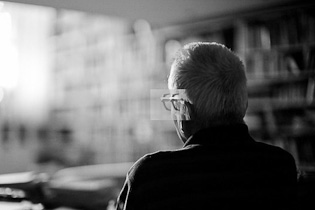 |
|
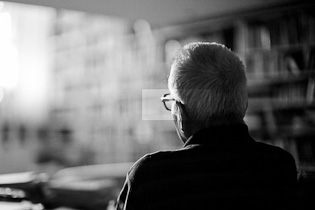 |
| Out of focus with the two unmatched overlays in the center of the image. |
|
Focused with the overlay in place in the center of the image. |
Pros:
- You decide where the focus is.
- The focus range stays where you set it; which useful and fast for series of photos.
- You can make an image out of focus.
- Very fast and intuitive when you get the hang of it.
-
You see outside the actual frame, not just what is in the image.
- Bright and very clear view of colors and details.
- You don't preview the photo. The creation is in your mind, but the image you see is normal and all sharp.
- No battery needed.
- Incredible superior engineering and optics.
- The Leica M 240 focusing mechanism has been improved in the rebuild of the Leica M camera and is much more stabe than the one of M9 and MM (once adjusted the M 240 stays adjusted much longer than the M9 and MM used to).
|
|
Cons:
- Takes getting used to.
- Some times you misjudge and it's all a blur.
- You don't preview the photo. Everything is sharp.
- The cameras focus mechanism can go out of adjustment and needs re-calibrating.
- Can be hard to see the focus center in dark.
- The longer tele, the smaller the part of the image you get; The image size you see is always 24-28mm and the frame lines tell which part of the image you capture (hence the tolerance of sharpness increases even the focus area is much larger relatively to the image).
- For wider lenses than 28mm you need an additional viewfinder to see the full frame. |
| |
|
|
2. Manual focusing with the Leica EVF-2 Electronic Viewfinder
The EVF-2 shows what the sensor sees. It's called Live View because you see live and real-time what the sensor sees. It's a very precise live preview of the actual exposure, sharpness and depth of field.
|
 |
|
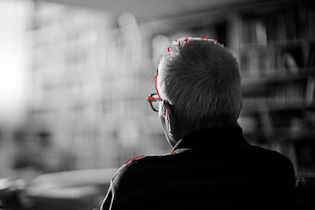 |
| Out of focus |
|
Focused with red outlines |
Pros:
- You preview the photo with bokeh, focus, exposure and framing. You see the final photo as the sensor sees it. It's like a Polaroid.
- Independent of the cameras focus mechanism that may go out of adjustment and needs re-calibration (you see what the sensor sees so it is real "wysiwy"g (What You See Is What You Get).
- Focusing in low light is easy as the preview you see is in "daylight".
- Built-in diopter adjustment.
- You see an image like in a cinema, filling up most of your viewing field and thus easy to see details and judge sharpness.
- Small red outlines help tell where the focus is; though the red outlines are only there when there is high contrast. With little contrast edges thre are no red outlines (so don't wait for them; look at the image instead. When it looks sharp, it is sharp).
- You can preview the photo you took, right after when it is shown in the EVF; without having to move your eye to the review screen on the back of the camera; and you can adjust and shoot again without moving your ey from the EVF.
- You decide where the focus is.
- The focus range stays where you set it; useful and fast for series of photos.
- You can make an image out of focus.
- The EVF-2 can be taken off for use with rangefinder.
- The EVF-2 may or may not be improved with new models and new firmware.
- This is the new technology of Leica M. My postulate is that future Leica M models will be offered also in a model with the rangefinder built-in.
|
|
Cons:
- Takes getting used to.
- The 1 second preview after a photo or series of photos has been taken, blocks the view.*
- Slow operation at 1600 ISO and up.*
- Shutter release delay.*
- Heats up the camera and may cause the camera to freeze.*
- Alien design added to the top of the camera.**
- The EVF-2 is made by Epson and is the least sturdy made part of a camera. If you drop the camera so it lands on the EVF you most likely have to buy a new EVF.
* = May be fixed with future firmware adjustment.
** = Can be fixed with a future M with built-in EVF.
|
3. Manual focusing with SLR matte screen with center split
Anyone who used a SLR in the 1970's and 1980's will be very familiar with this type of screen that had a center circle that was divided in two. When the two half circles matched in the middle, the subject was in focus.
|
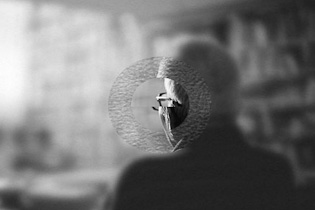 |
|
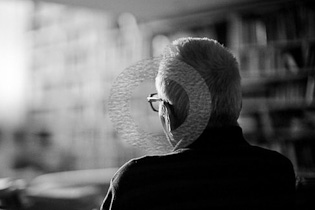 |
Out of focus |
|
In focus
|
Pros:
- Easy to use.
- You can usually see preview the depth of field and approximate bokeh pressing a preview button (that will stop the lens down).
|
|
Cons:
- Not as precise as it appears.
- Focus screen or mirror can go out of adjustments.
- The matte screen doesn't represent the accurate preview of the depth of field. |
| |
|
|
4. Manual focusing with traditional SLR full matte screen
Some will have used the complete matte screen with or without a center circle of a different kind. If you did, you will probably agree with me that not having the divided circle in the center (as above) make it easier and more precise to focus. This is by the way the Leica S digital medium format camera works, along with an AF assistant so you can mix manual and autofocus after your liking.
|
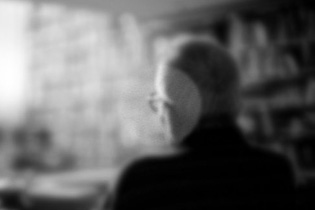 |
|
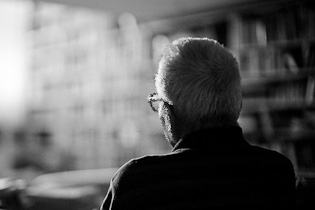 |
| Out of focus |
|
In focus |
Pros:
- Easy to tell when the image is in focus (as the viewfinder of this type is usually very bright and contrasty. The Leica S has a viewfinder like this).
- Great for composition without any disturbing light, lines or other.
- Puts the photographer in control.
|
|
Cons:
- Takes some getting used to, as well as confidence that what you see is what is real.
- Focus screen or mirror can go out of adjustment.
- The matte screen doesn't represent the accurate preview of the depth of field. |
| |
|
|
5. Modern dSLR autofocus
Modern cameras often offer several focusing points and some times face recognition in the expectation that you want faces to be in focus. It doesn't require a lot of focusing skills other than that you have to "tell the camea" where to focus. In continuous focusing the camera might take over and change the focus for you, which are good if it is an Olympic runner you are photographing, but less desirable if you have decided for a flower in the foreground and the AF changes the focus to a face in the background!
|
 |
|
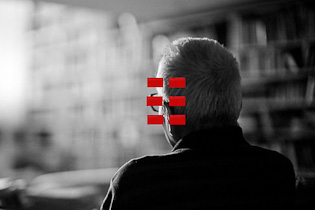 |
| dSLR when out of focus |
|
Modern dSLR when in focus |
Pros:
- Easy to use.
- Fast.
- High hitrate on focusing.
|
|
Cons:
- You may have to wait for focus.
- Not reliable in rain, fog and darkness.
- Extra ligh tsource on camera may be necessary to light up the scene to help the AF (which will alert everyone that you are taking pictures).
- Not good for manual focus (the camera viewfinder is not as clear and precise built as previous SLR models).
- You have to "tell the camera" where to focus each time when working with narrow focus or where your focus is not where the camera would expect focus to be.
- One more thing to help the camera do.
|
| |
|
|

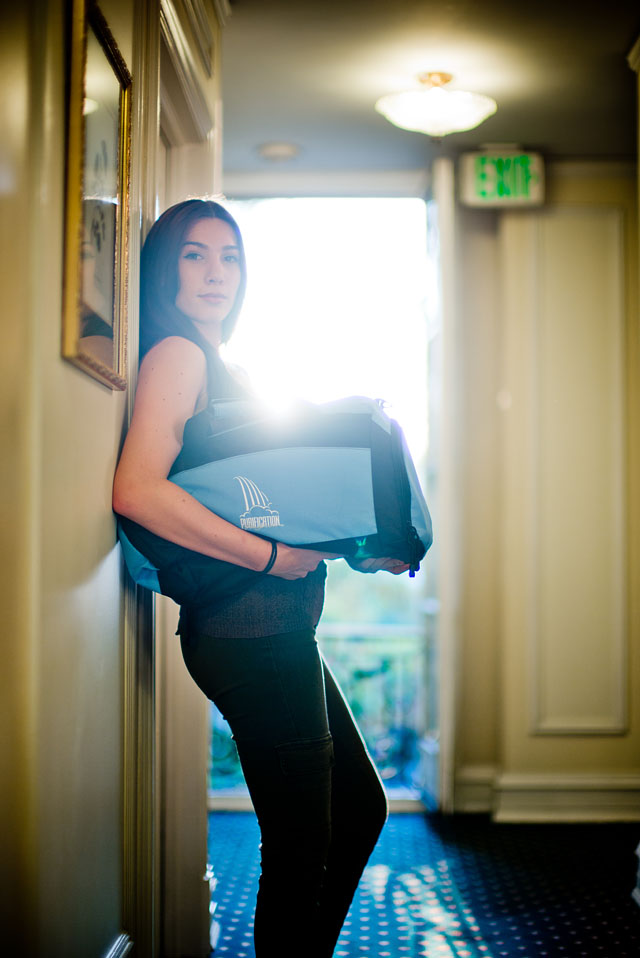
Madeleine in Los Angeles. Leica M 240 with Leica 50mm Noctilux-M ASPH f/0.95.
200 ISO, 1/60 sec. with 3-stop ND-filter. © Thorsten Overgaard.
"Come with me if you want to ... not die"
This is where I offer you to come over to the rangefinder world. It's not that I have always been for rangefinder cameras, and actually I wouldn't say that I prefer rangefinders over other systems ... Which all in all might make me the perfect person to talk about the virtues of the rangefinder system.
I happen to have used Leica M almost exclusive since 2010. The rangefinder focusing wasn't the selling point for me.
The simplicity and quality of Leica was.
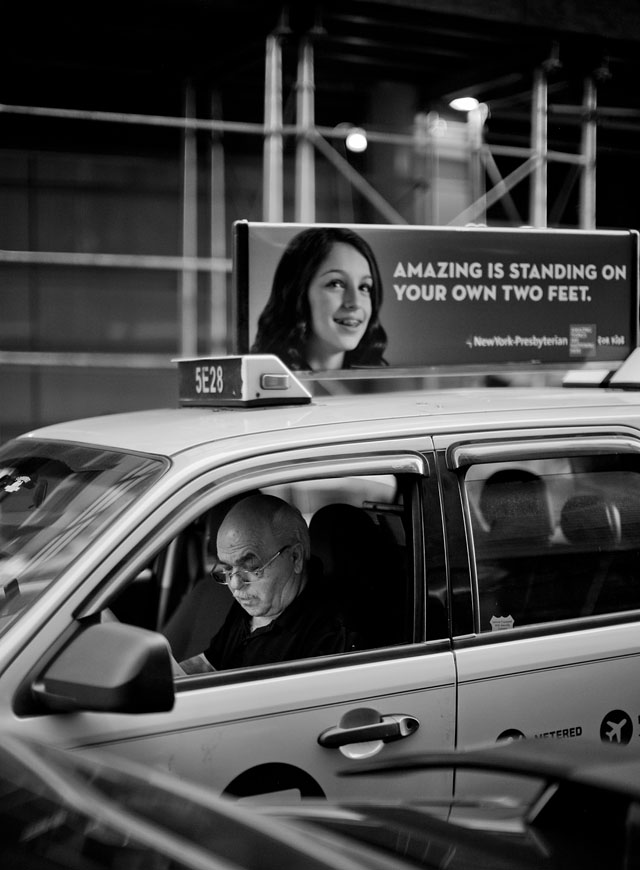
New York, September 2015. Leica M 240 with Leica 50mm Noctilux-M ASPH f/0.95, 640 ISO, 1/160 sec.
© Thorsten Overgaard.
The rangefinder focusing is something that comes with it and something we have to make work for us. I will try to explain it all so it makes sense for us who has the Leica M, as well as those who read this in an attempt to understand this vintage vinyl handmade espresso concept and what the big fuzz is about.
I'm not at all protective of the rangefinder and the almost holy word "Messsucher". Some are and can't phantom the idea of ever removing the rangefinder mechanism from the Leica M with something more modern. For all I could care, any system that gives me 100% control and simplicity ... I'm for that.
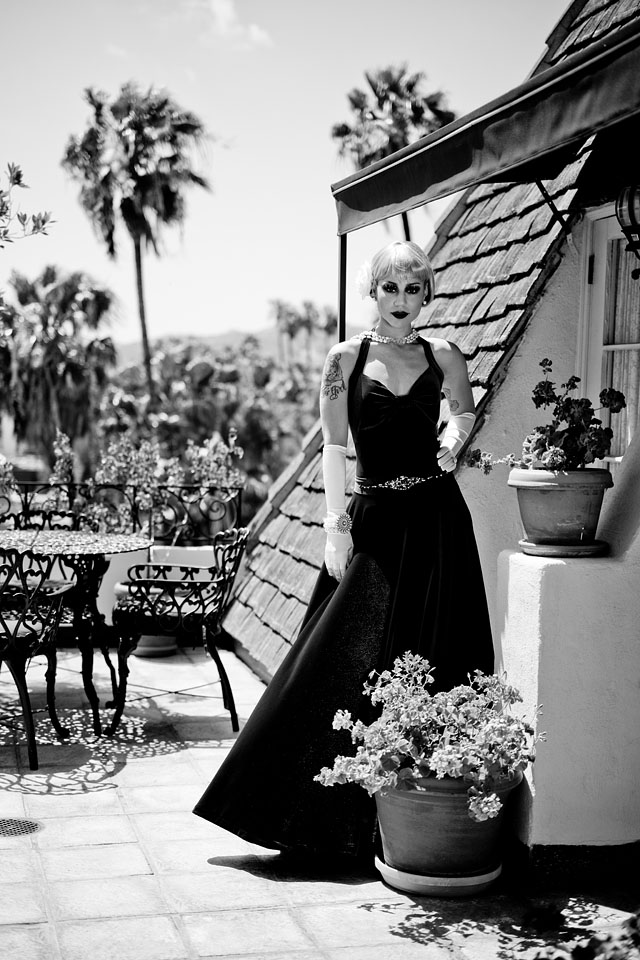
Fashion shoot for Nathanaelle. Leica M 240 with Leica 50mm APO-Summicron-M ASPH f/2.0, 200 ISO, 1/1000 sec. with 2-stop ND-filter. © Thorsten Overgaard.
The secret rangefinder cult
Rangefinders is like a secret world or a secret society. When you first stumble upon a rangefinder, you may rightfully think, "What is so great about this?" realizing you just traveled back to a time where trains were driven by steam and a lady at the telephone central was directing all your calls and listening in on them.
The rangefinder technology is almost as old as photography, the first advanced way to get "preview" of focus.
The odd thing is that now, 90 years later, Leica still uses it. Nobody else offers something like this anymore. I think some people in their enthusiasm for the great feel of the Leica camera overlook the fact that it isn't autofocus like other cameras. I've met a few Leica users who were so enthusiastic about the feel of the Leica that they bought one, just to find out hours later that it didn't focus by itself.
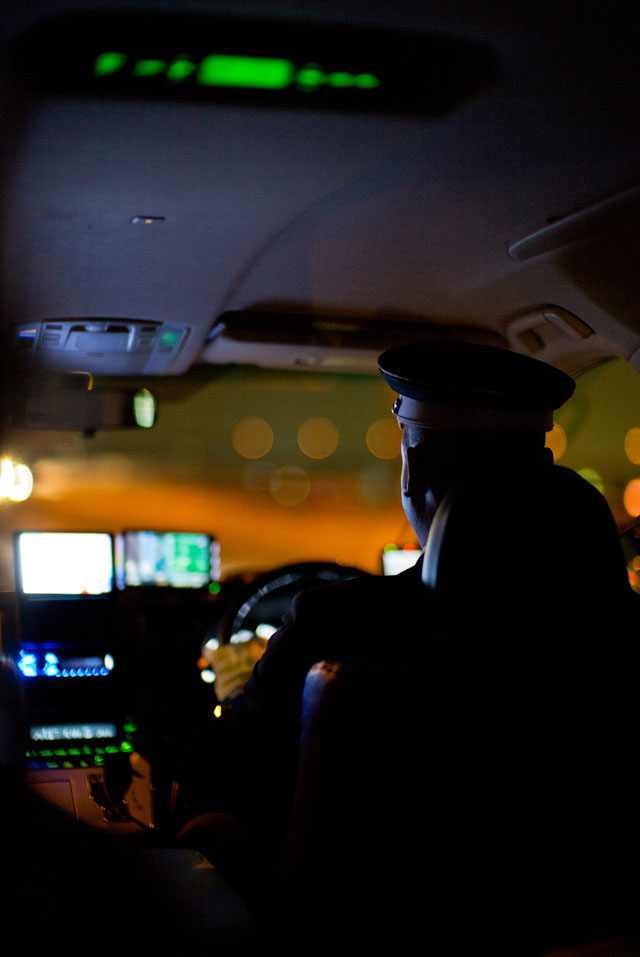
Driving to Tokyo from the airport. Leica M 240 with Leica 50mm Noctilux-M ASPH f/0.95, 3200 ISO, 1/90 sec.
© Thorsten Overgaard.
If you wonder why this is, you are not alone. Why pay premium price to not have autofocus?
I rememeber when I was first introduced to the Leica M rangefinder system by an enthusiastic dealer who presented it somewhat like "really manual and hard work".
What was so absolutely fascinating about doing something the old way, and even make it difficult? I didn't get the point. Moreover I didn't agree. That is not how I see the Leica M rangefinder system myself. So let's yet again talk about why it is so great.
I believe things should be simple and accessible. Not difficult and exclusive. I don't even think it is great that something is expensive, thought I recognize that well-made things often are.
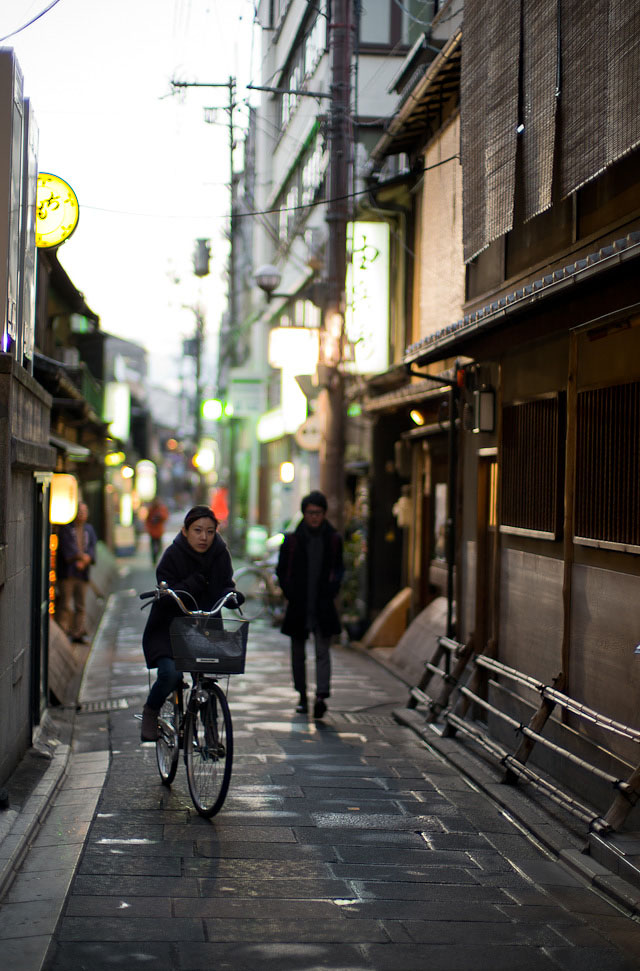
Kyoto, December 2014. Leica M 240 with Leica 50mm Noctilux-M ASPH f/0.95, 200 ISO, 1/90 sec.
© Thorsten Overgaard.
Buying into that great feeling of well-made sophistication
I am not completely wrong if I say that most who decide to buy a Leica M rangefinder really don't know what they are doing. We are mainly guided by a inner feeling that this is what we have been looking for.
I some times I joke that one go to a camera store and ask to hold a Leica M for a few minutes, then go home and sleep on it. If you wake up the next morning and the first thought in your mind is that sensation of holding a Leica, there is no way back!
On the other hand, if you never thought of that moment in the camera store again, you're not infected. It's as simple as that.
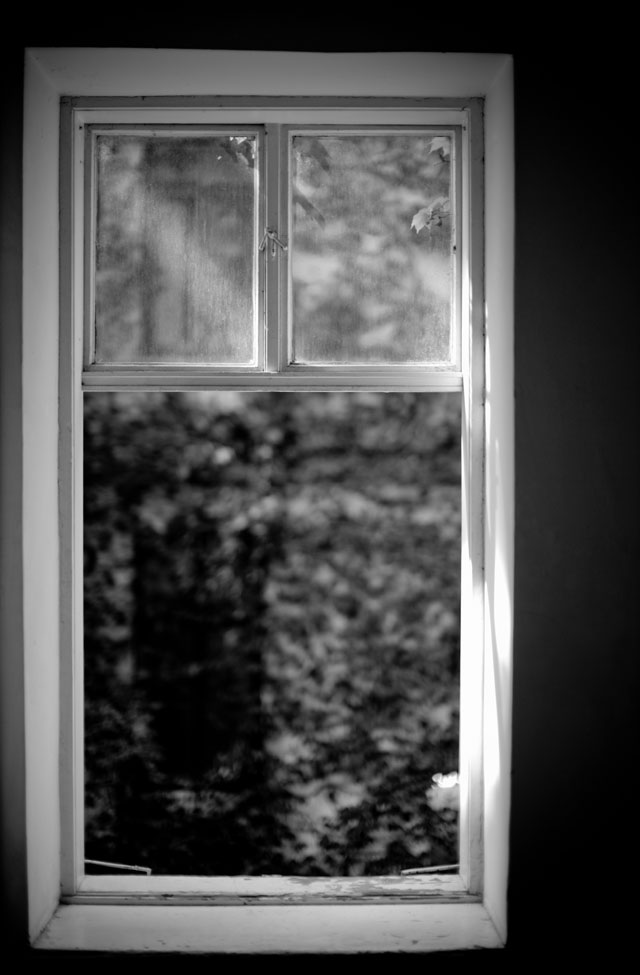
Vienna window, 2013. Leica M 240 with Leica 50mm Noctilux-M ASPH f/0.95 at 200 ISO, 1/125 sec. © Thorsten Overgaard.
Either you feel the connection to the 100 years of German engineering and the ultimate in precision and lens technology ... or you don't. The initial choice is as simple as that.
Don't force yourself to use a Leica if you don't feel like it. In fact, a great deal of what is so great about Leica is the feeling that it is great. The idea that this is the optimum tool.
I don't believe that anyone who uses a Leica M bought it for the brand name. Nor did they buy a Leica to feel like Henri Cartier-Bresson or some National Geographic reporter in a dusty village in Africa.
It helps that it is a great brand and has been used by many masters. I believe most who uses a Leica bought it because it feels right, it feels like the tool that will enable me to live out the passion of making photographs.
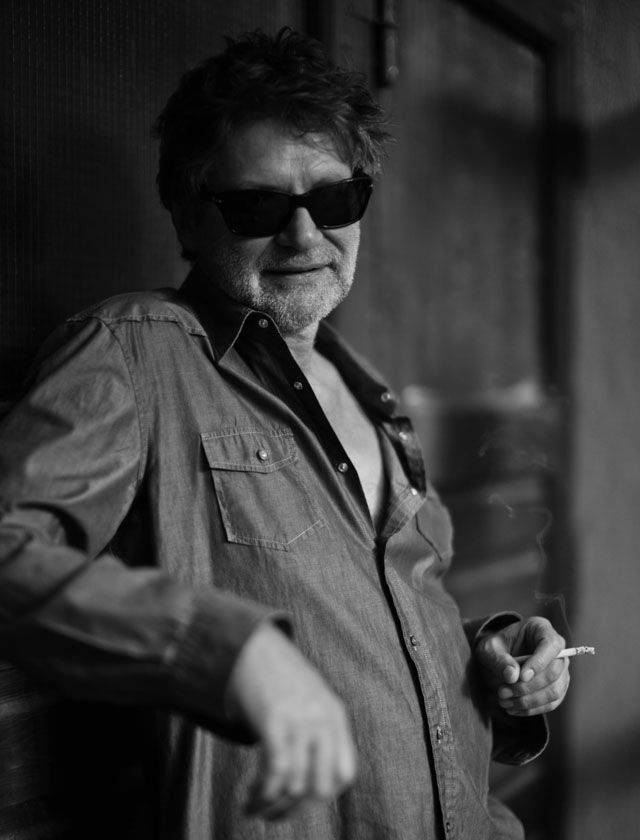
Peter Coeln of Coeln Cameras in Vienna. Leica M 240 with Leica 50mm Noctilux-M ASPH f/0.95 at 200 ISO, 1/125 sec. © Thorsten Overgaard.
| |
|
|
|
|
| |
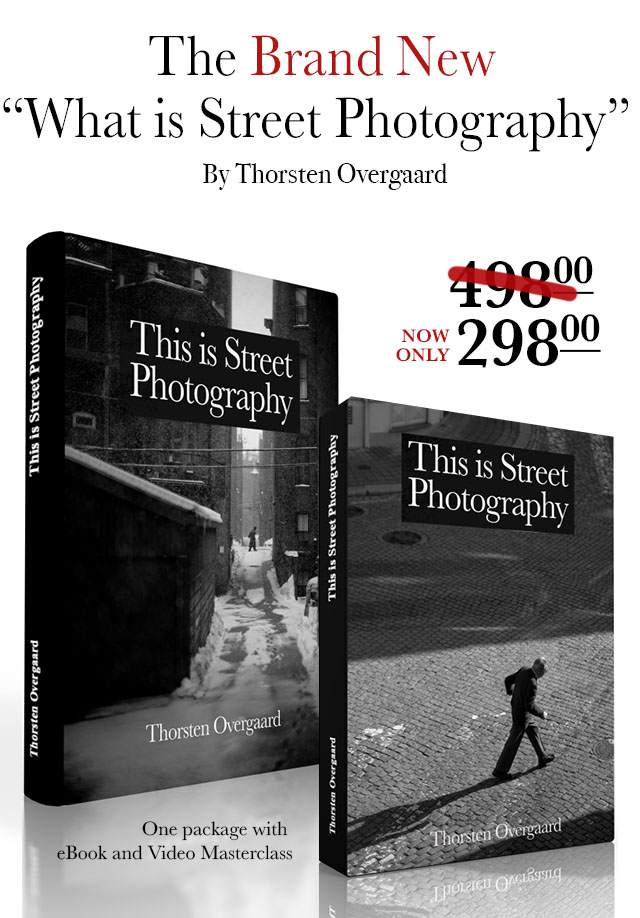 |
|
| |
|
|
|
|
| |
The Full
Street Photography
Bundle
(The three items illustrated below)
"Street Photography Masterclass" $698.00
"This is Street Photography" $298.00
18 video classes with PDF work book
and illustrated eBook,
Normal price $1,296.00
More info
Normal price $1,296.00
Save 65%
| |
|
|
| |
Only $448.00

|
|
| |
|
|
Buy Now. Instant delivery.
100% satisfaction or money back.
Item #2148-0522 |
|
"This is Street Photography" Illustrated eBook
+
Video Masterclass
(The two items illustrated above)
For Computer, Kindle,
iPad or smartphone.
Code applied: "ILOVESTREET"
Was 498.00
Today only $298.00

Buy now. Instant delivery.
100% satisfaction or money back.
Item #2148-0422 |
|
| |
|
|
|
|
| |
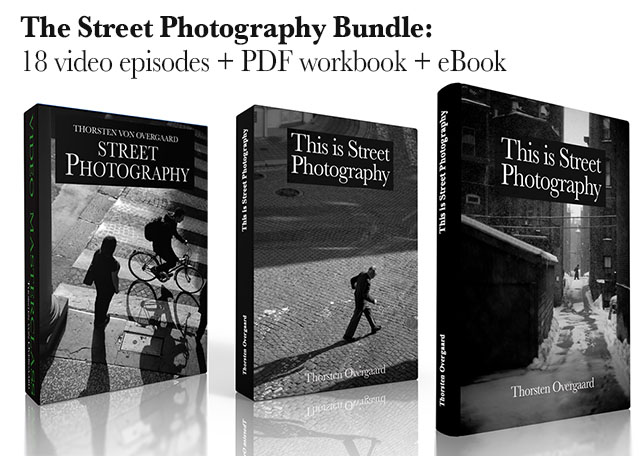 |
|
| |
|
|
|
|
"You had me at Hello"
The force is so strong that I have met single mothers who bought a Leica M and one or two lenses on the spot, simply out of love for the wonder they saw in a shop window ... and lack of ability to resist. And I have met quite a few men who was certain they had read all available reviews of all cameras and could quote every important feature a modern camera must have ... and yet their credit card mysteriously surfaced on the counter and paid for a Leica that didn't have any of those important features.
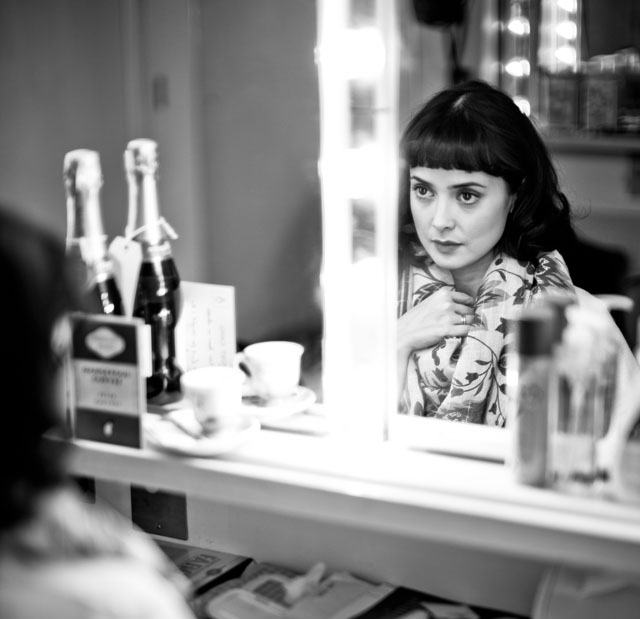
Actress Rebecca Grant in the dressing room in London. Leica M 240 with Leica 50mm Noctilux-M ASPH f/0.95 at 200 ISO, 1/125 sec. © Thorsten Overgaard.
And I've met countless people from photography novices to professional photographers who really can't explain exactly what it is. Just that it felt right.
The Leica brings out the lust for creating by the mere touching the camera.
An engineer in Norway that I taught for some days in Oslo, and whom I was sure had studied every inside detail of the camera, told me that he had in fact never removed as much as a single screw: He just knew when he held the camera that it was "the best engineering".
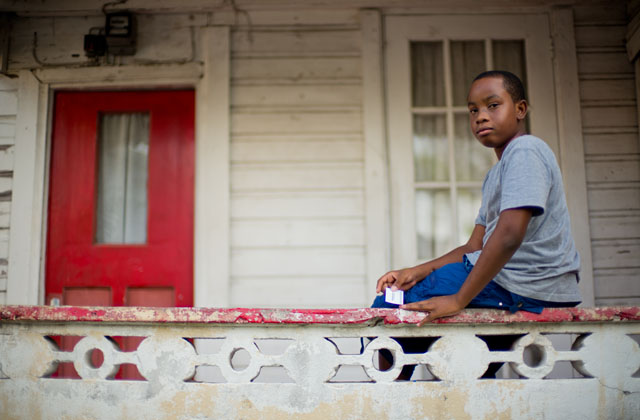
Boy in Saint Kitts. Leica M 240 with Leica 50mm Noctilux-M ASPH f/0.95 at 200 ISO, 1/1000 sec. © Thorsten Overgaard.
| |
|
|
| |
"Just the other day I held at Leica in my hand for the very first time and it was a very odd experience. I felt as if I was back in 1960 and really felt amazing while holding the camera".
|
|
| |
- S. B. (USA)) |
|
Everything is Awesome
It is the simplicity and the perfection, which has been fulfilled down to the last bit of simplicity. It's a how a camera was supposed to be!
Not a big mystery if you know your camera history. Leica Camera AG is the grandfather of 35mm format because they invented the 35mm format. Not much has changed since then. The reason roll film is 36 pictures is because that's how far out the inventor of the Leica could stretch his arms. So if you think "this feels like a real camera" when you hold one, you are more right than you actually thought.
It was a company philosophy from the very beginning that there should be a minimum of things. Each element had to be perfect enough that no other supporting parts or features were needed.
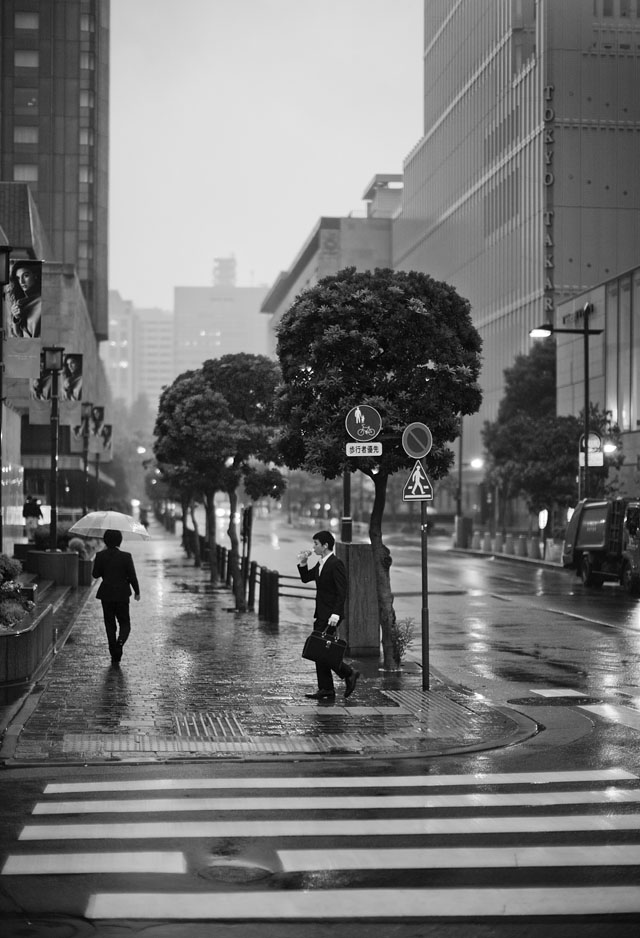
Ginza in Tokyo, November 2015. Leica M 240 with Leica 50mm Noctilux-M ASPH f/0.95, 400 ISO, 1/350 sec.
© Thorsten Overgaard.
The ones I meet always carry a smile and a Leica. Many will testify that it is not just a camera but that it actually improves their life quality.
"You complete me," as another famous movie quote goes; and which is what most Leica users tell their camera when nobody is listening.
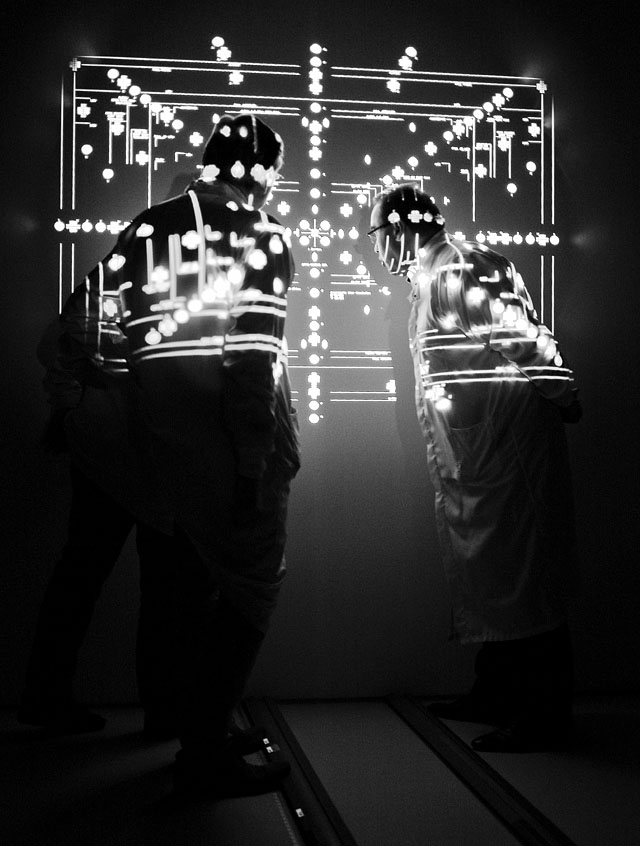
Leica geniuses studying lens quality in Wetzlar, October 2015. Leica M 240 with Leica 28mm Summilux-M ASPH f/1.4, 800 ISO, 1/15 sec. © Thorsten Overgaard.
What's with that Leica?
Unlike what you may or may not expect, the traditional user of Leica does not experience his or her camera as a materialistic goal accomplished. You meet a lot of people who don't have a Leica who think of it as an (unattainable) materialistic goal.
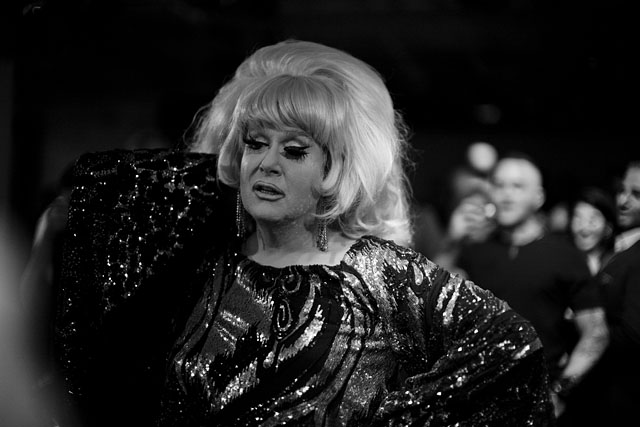 The Blondes fashion show in New York, September 2015. Leica M 240 with Leica 50mm Noctilux-M ASPH f/0.95, 1600 ISO, 1/250 sec. © Thorsten Overgaard. The Blondes fashion show in New York, September 2015. Leica M 240 with Leica 50mm Noctilux-M ASPH f/0.95, 1600 ISO, 1/250 sec. © Thorsten Overgaard.
You don't find other 35mm cameras or lenses as expensive as the Leica, so by all standards the Leica should be anybodys goal in a society where materialistic wealth equals success.
(As a side note, studies show that Man is most happy when he or she reaches the level of almost survival; when one reach above and beyond that goal it goes downhill in happiness and the usual solution to that is to get even more; which doesn't work either. That's when you start drinking and replacing the wife in search for happiness).
The Leica is beyond materialism in the sense that when you get a Leica, you are freed from all the whistles and bellows that is usually associated with success in a materialistic society and especially in the camera world.
What you get is less. You get simplicity. You get to a point of barely enough to make a photograph.
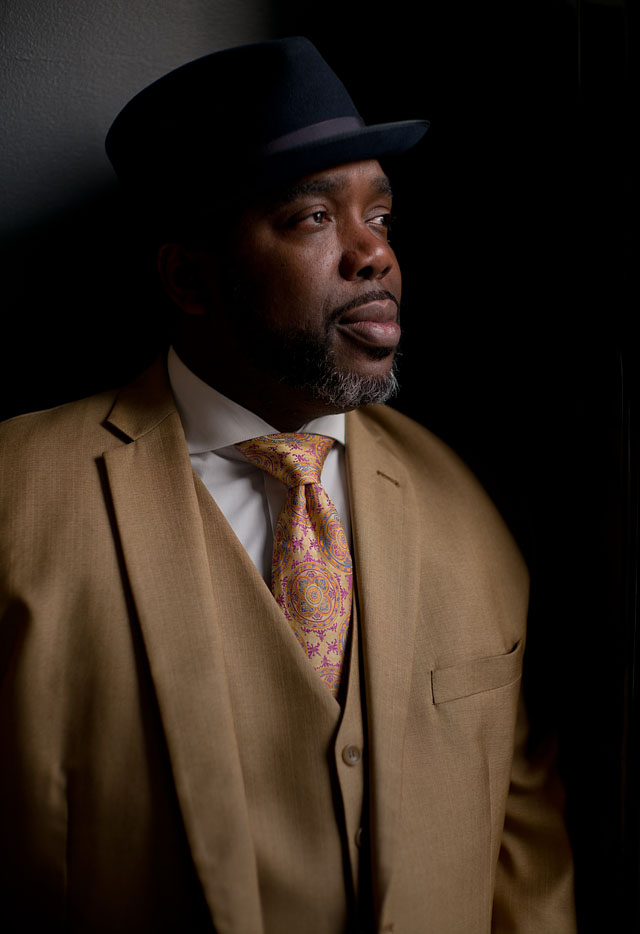
American gospel singer Jesse Stevenson, New York 2016. Leica M 240 with Leica 50mm Noctilux-M ASPH f/0.95 @ f/2.0. 200 ISO, 1/1000 sec. © Thorsten Overgaard (hat from JJ Hat Center on 5th Ave).
This instrument that the uninformed would expect that you hold up as the prize to show how great you are doing materialistic, works in a different way in the hands of most Leica owners: It allow them to see and communicate with other people.
When I did a survey on my Leica M 240 Facebook User Group amongst 11,000 members, of what features the next Leica should have, "Simplicity" came up as the number one feature.
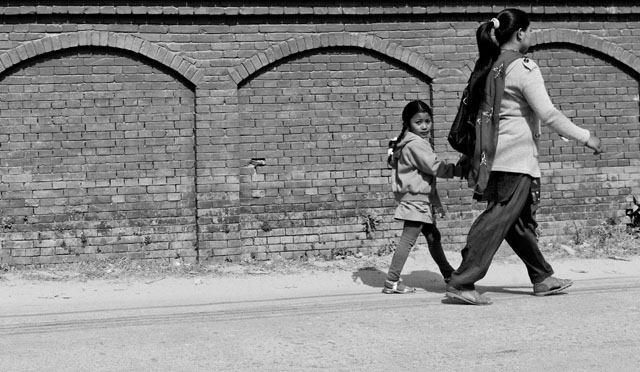
Pakistan 2012. Leica M9 with Leica 35mm Summicron-M ASPH f/2.0 at 160 ISO, 1/350 sec with 3-stop ND filter. © Thorsten Overgaard.
| |
|
|
|
|
| |
Buy my "New Inspiration Extension Course"
|
|
| |
|
|
|
|
| |

Need more info?
Read this article. |
|
Get inspired and rebooted!
This extension course if made for you! It can be done at home and travel at your own pace. I have taught workshops for years and the Overgaard New Inspiration Extension Course is my experience compressed to a package of training, articles, drills, assignments and video tutorials that will inspire you and take your photography to the next level! For a limited time my course includes something you cannot get anywhere or anytime else:
A portfolio-review by Thorsten Overgaard.
| |
|
|
| |
"The Overgaard
New Inspiration
Extension Course"
For computer and iPad. 181 p eBook. |
|
| |
Only $798 |
|
| |
|
|
| |
 |
|
| |
|
|
| |

|
|
| |
|
|
Order now - Instant delivery. |
|
| |
|
|
|
|
The Freedom Tool
The Leica camera is traditionally a tool of freedom. It was created as such by the Leitz family and Oskar Barnack who believed in freedom of speech and respected people of all religions, political observation, different sex and race in a period of German history where such viewpoints were hard - not so say deadly - to maintain.

A sign in USA from 1942. In Germany they didn't just separate them but gassed them (except the dogs).
© Thorsten Overgaard.
The Leica camera has been instrumental in many great deeds in history, to enlighten, spread truth and free the people behind and in front of the camera. It has qualities that people of all religions, races, political observations and sex recognize as a tool to communicate and create.
| |
|
|
The famous photo of the "Napalm girl" by Huynh Cong 'Nick' Ut of Associated Press was taken on June 8, 1972 with his Leica M2 and Leica Summicron 35/2 on a Kodak 400 ISO B&W film.
The photo very much changed the view on the Vietnam war, though President Nixon doubted its authenticity - he thought it might have been 'fixed'.
The 9-year old girl in the photo, Phan Thi Kim Phúc, survived her burnings from the napalm bombing after 14 months in the hospital. The photographer took her to the hospital before he delivered the film to AP. She later founded an organization to help children of war.
The image won the Pulitzer Price. |
|
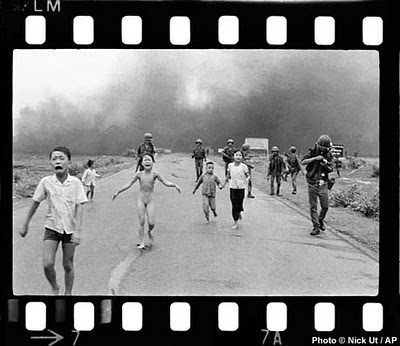 |
| |
|
|
It's a tool of freedom in more than one sense. Freedom from complications and restrictions, as well as freedom to communicate.
The more you pay, the less you get. Isn't that beautiful? And it may explain why so many who could get so much, becomes really truly happy with a Leica.
"Simplicity is the ultimate sophistication," as Leonardo da Vinci said.
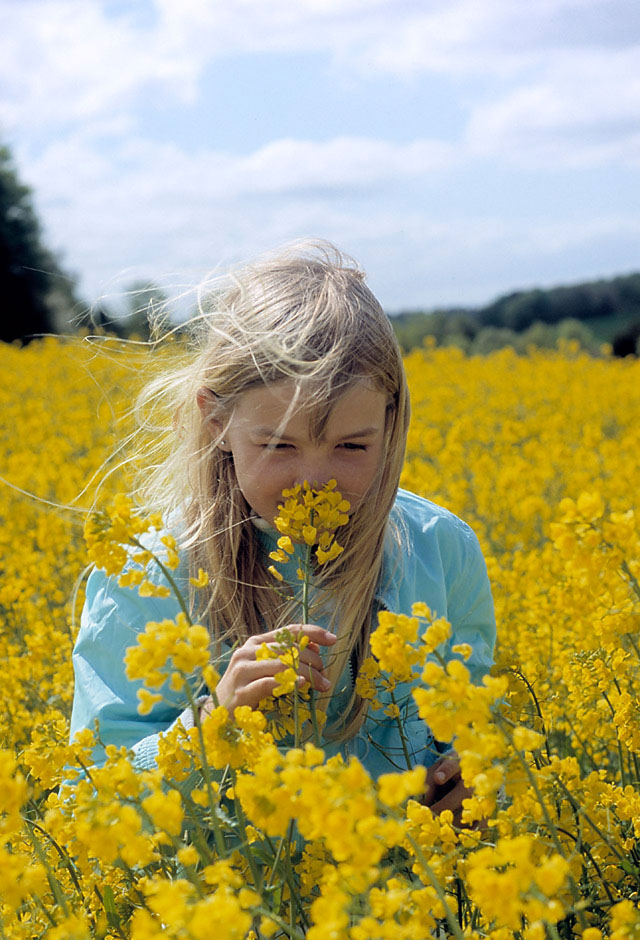 My daughter Caroline, May 2005. Leitz Leicaflex SLmot with Leica 80mm Summilux-R f1.4 @ f5.6, 100 ISO Fuji Astia, Imacon/Hasselblad Flextight Photo scanner. The face is lit by a 100cm Ø silver reflector to the right. © Thorsten Overgaard. My daughter Caroline, May 2005. Leitz Leicaflex SLmot with Leica 80mm Summilux-R f1.4 @ f5.6, 100 ISO Fuji Astia, Imacon/Hasselblad Flextight Photo scanner. The face is lit by a 100cm Ø silver reflector to the right. © Thorsten Overgaard.
Me and my Leica
I used to use a Leica SLR, and in a previous life long before that I used to use a Nikon. I changed to Leica when I wanted to do real portraits where you could sense the soul.
I wanted the precision of the Leica lenses. That was my in on Leica. I dreamed of a style of medium format portraits with eyes in clear focus and selective focus even in the face details. That's how and why I started out with Leica.
| |
|
|
Tina Maria, 1981
From my first years of photography. I was 16 and the girl was 17 and we did a series of photos for her model agency. Nikon EM with Nikon E 50mm f/1.8. The film was developed for three hours in a paper developer which resulted in very dark negatives that had to be exposed on photo paper for a very long time to get the special dreamy tones and large grains. Back then I rolled my own film and shot more than 100 meters a year. |
|
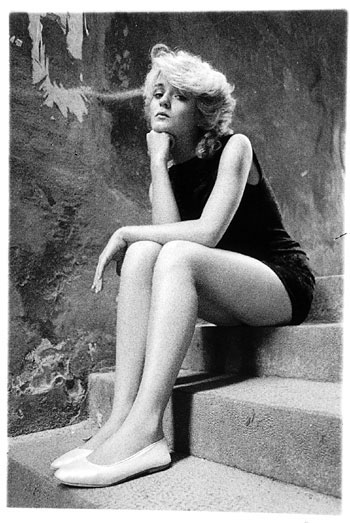 |
| |
|
|
A Pentax 4x5 medium format camera with wooden handle was on my mind, but the Leica was closer to what I was used to.
In the beginning my hunt for technical perfection would some times - often actually - overshadow the actual portrait: After a portrait session I would select the most sharp and technical best photos of a series, and only amongst those perfect sharp photographs would I look for the best expression.
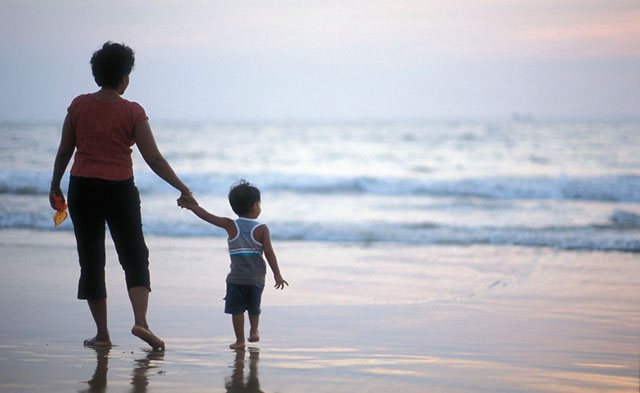
Sri Lanka, 2006. Leica SL with Leica 80mm Summilux-R f/1.4.
Slowly I moved towards appreciating the atmosphere and honesty in a portrait rather than exact sharpness. But it wasn't easy, and I didn't move to that freedom of choice very fast. Years of reading camera brochures, photo magazines and photography websites had installed an almost unbeatable trust in that a sharp image is the nirvana of photography.
I wasn't strong enough then to realize that few of the worlds best photographs was actually - not even remotely - razor sharp. Had I seen and noticed, I would immediately have known that I should look beyond the sharpness and at the emotion of the photograph instead.
My preferred lens to begin with, when first using the Leica R and Fuji Astia slide color film, was the Leica 50mm Summicron-R f/2.0. Maybe because it's a technical very good lens and I somehow always have been using 50mm lenses also on the Nikon. As time went by, the Leica 80mm Summilux-R f/1.4 became my preferred lens and stayed on even when the Leica digital back was added and the crop factor made my trusted 80mm into a 105mm. I just stepped further back to keep the same frame.
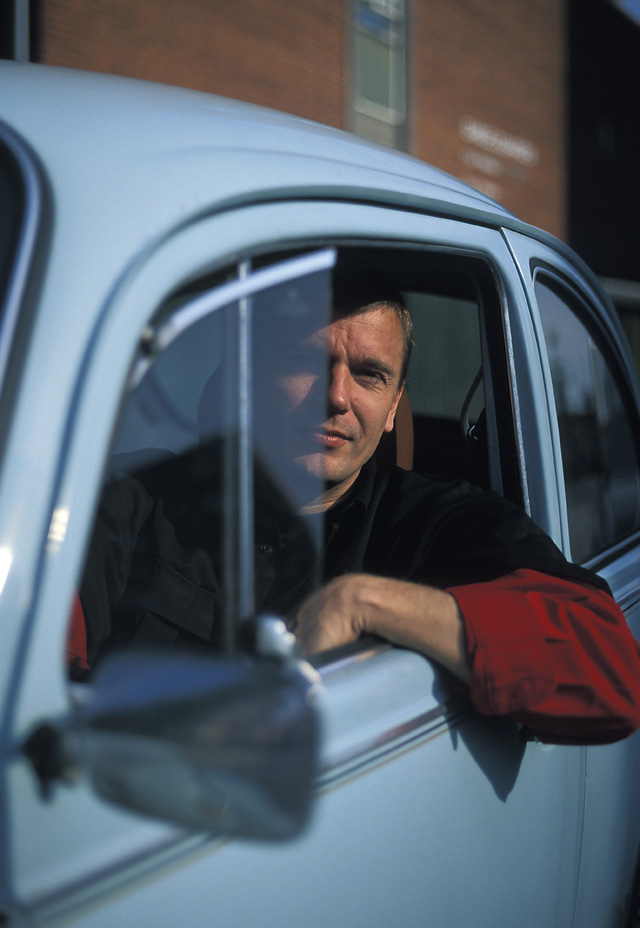
Singer/songwriter Ole Boskov photographed in Copenhagen for the Another World Magazine, October 2003.
Leica R4 with Leica 50mm Summicron-R f/2.0 @ f. 2.4, Fuji Velvia 50 (scanned on Nikon Coolscan IV).
At some point I think I became less focused on which lens but more focused on the expression. In the face and the overall photograph.
I started seeing the light as an important element to beauty, expression of life and overall aesthetic. So I became interested in lenses and techniques that would accentuate the light.
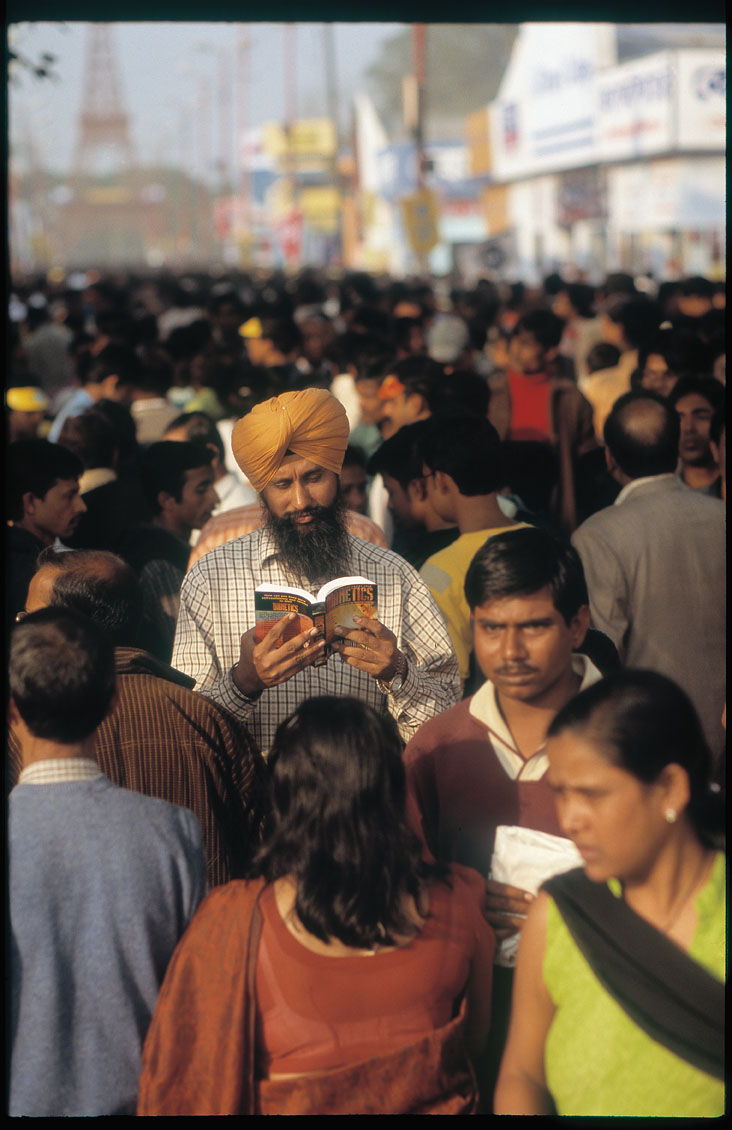
Kolkata Book Fair, India, February 2005. Leica 80mm Summilux-R@ f.1.4 on Leica SL Mot using 100 ISO Fuji Astia @ 200 ISO. Scanned on Imacon/Hasselblad Flextight Photo scanner. © Thorsten Overgaard.
When the Leica M9 was released in September 2009, I had already decided months in advance that I wanted whatever the next Leica M would be, no matter what it was and how faulty it might be. At that point the Leica M8 had a crop factor of 1.3X and some minor flaws in the black reproduction.
I had the bug.
I had touched a Leica M. I knew I would love to use it, that I almost had to have it to be happy. But I also knew I couldn't use it for any serious work.
My Leica R9 SLR with digital back was the way to get things done with precision. You plan a photo, you set things up and you get it. No surprises. Pure quality.
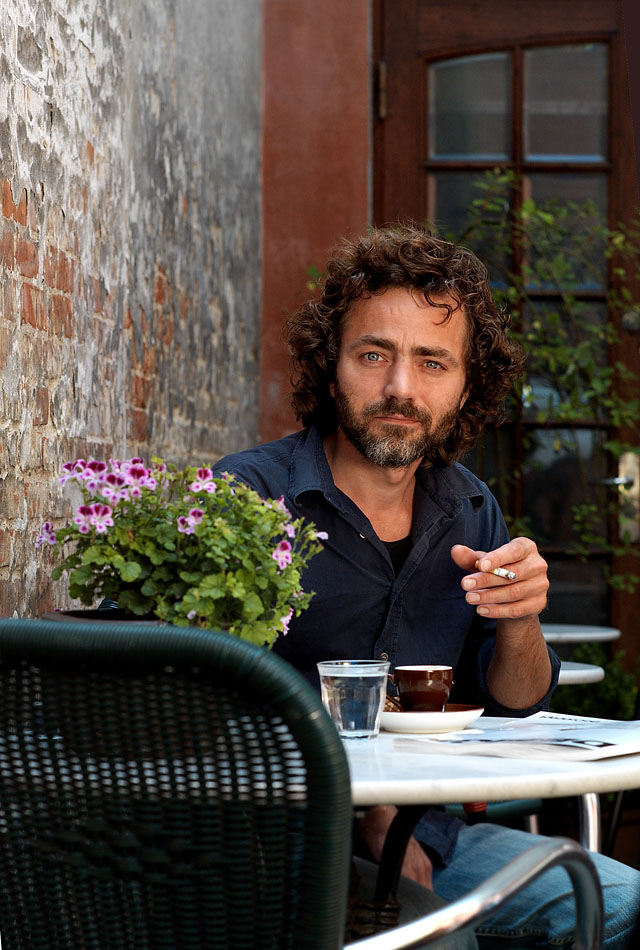
Thomas Sigfred, master barista and owner of Sigfred's Coffee Bar in Denmark. For magazine article 2009. Leica R9 with Leica DMR, 80mm f/1.4. Summilux-R @ f/5.6, 200 ISO. The DNG-file converted using Imacon/Hasselblad Flexcolor 4.8.6. 100cm (3ft) gold reflector from the right.
The Leica M9 would be my toy camera, I had decided, some sort of reward for myself. That was my plan and I was perfectly okay with throwing some thousands in that direction.
As it turned out, it took about four months till I realized that the toy camera I had brought along with me and used as spare camera did better photos than what I did with the stable, trustworthy Leica SLR system.
| |
|
|
|
|
| |
Buy the new eBook
"A Little Book on Photography"
by Thorsten von Overgaard |
|
| |
|
|
|
|
| |
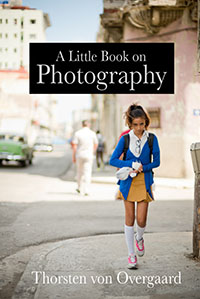
Order now - Instant delivery.
More info
★
★
★
★
★
★ |
|
It's a humorous understatement to call this
new eBook by Thorsten Overgaard for
"A Little Book on Photography".
It's a grand book, a history lesson, life experience, a biography and poetry book and brilliant photo book!
All in one beautiful package of 180 pages
to fire you up and get you to love
photography ... unconditionally!
"A Little Book on Photography"
eBook for computer, Kindle and iPad.
New release March 2017.
Intro price only $47 - 180 pages.
| |
|
|
| |
Buy Now

Instant Delivery |
|
| |
|
|

|
|
| |
|
|
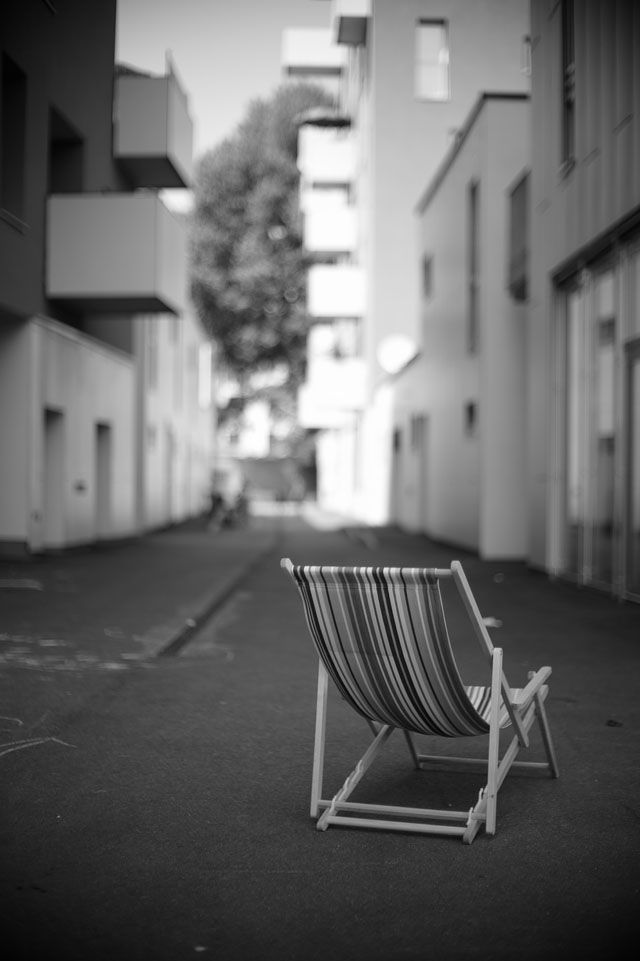
Salzburg, June 2012. Leica M9 with Leica 50mm Summicron-M f/2.0.
It actually didn't do better photos. I just happened to realize that editors and clients liked those photos made with the small Leica M9 better than the SLR photos which were often more precise and had better control of everything.
I perhaps wasn't sleepless over it, but I did wonder a great deal why this was so. I also remember that I considered if the subjects I photographed would have the same respect for me with a small "grandpa" camera as they did for a large, impressive SLR. I looked at the photographs and tried to remember how people had reacted.
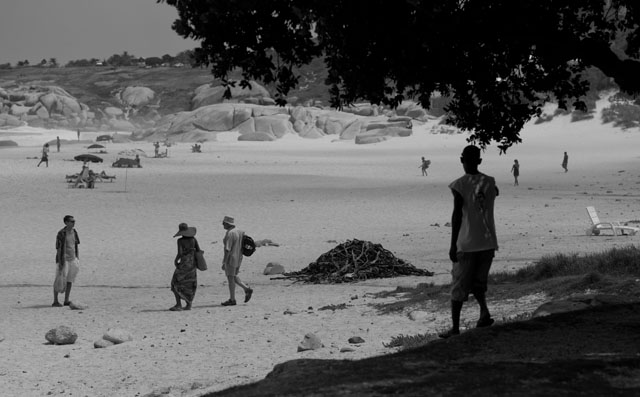
South Africa 2012. Leica M9 with Leica 90mm Summarit-M f/2.5 at 160 ISO, 1/4000 sec. © 2012-2016 Thorsten Overgaard.
They would smile and not take the Leica M camera as serious. But they took me serious, even when they didn't understand why a professional photographer would use a small camera.
Professional photographers always have big cameras. Every child knows that.
I wondered, and I decided the reason I had a higher hitrate with the small Leica M9 rather than the large Leica R9 camera was exactly the precision and seriousness.
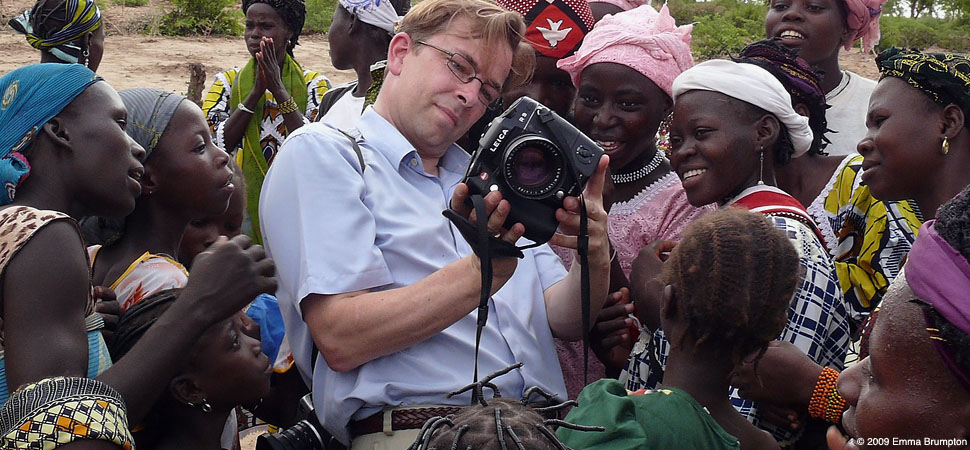
Thorsten Overgaard in Burkina Faso with the Leica R9 and DMR Digital Back, 2006. Photo by Emma Brumpton.
When I used a SLR, it was sort of setting up a camera to make a very planned photograph. When I was done with that process, I would take the Leica M9 and shoot from less planned angels, jump up on a chair, go closer and have less of an idea how the final image would look.
I played with it, and the image was rather in my mind than on the matte screen. On the Leica M you can't see a preview of the photo but only the frame. The depth of field and exposure you have to imagine.
The Leica M9 freed me up!
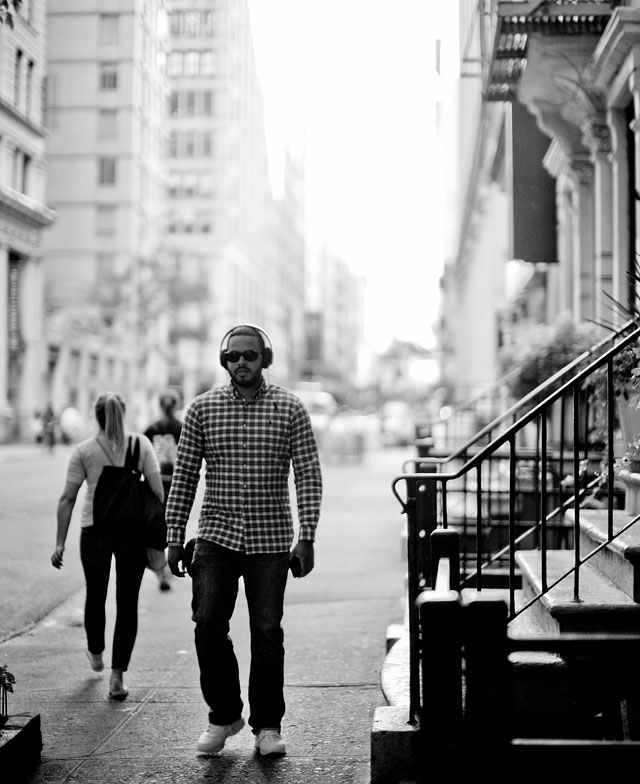
New York, September 2015. Leica M 240 with Leica 50mm Noctilux-M ASPH f/0.95. © Thorsten Overgaard.
After long considerations I have come to realize that photographs are made in the photographers mind and created with the camera by the same photographer. Not knowing exactly what you get but working with an idea of what it is going to look like is - in very short words and as a conclusion to many thoughts over the subject - a liberating improvement.
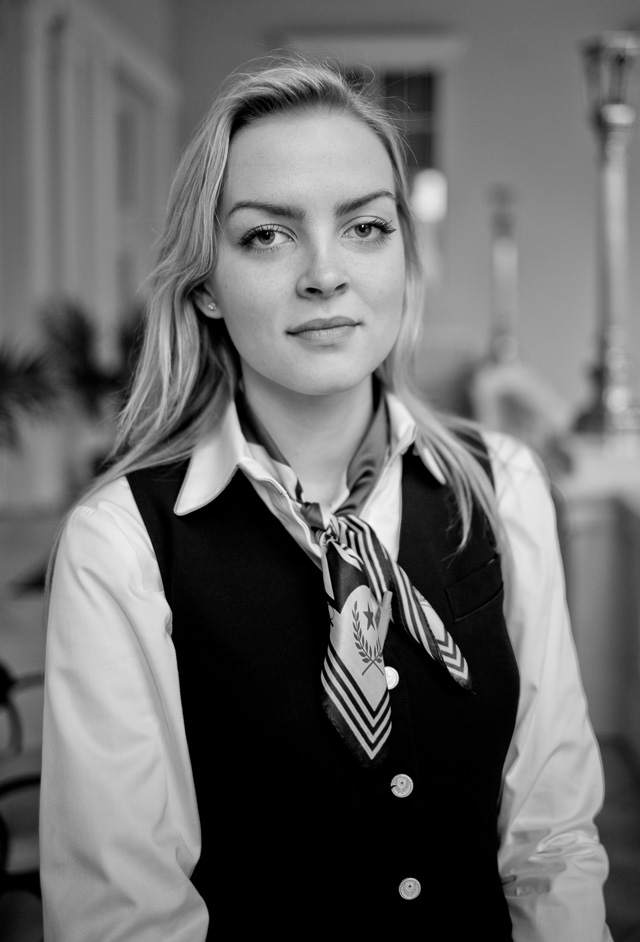
My beautiful daughter Caroline. March, 2016. Leica M 240 with Leica 28mm Summilux-M ASPH f/1.4.
In the very old days of photography - 10 or more years ago - a portrait photographer would use a medium format camera and first do a series of Polaroids. This was a slow process of loading the Polaroid back, taking the photo and then "dance around the studio" with the Polaroid, warming it up between the hands and smalltalk with the client. Then the photographer, client and assistant gathered and would wold take a detailed look at the Polaroid to check the details and all, and often two or more Polaroids were made before the camera was finally loaded with real film and the shoot would actually happen.
The idea was to get the exact photograph that was planned.

Advertisement:
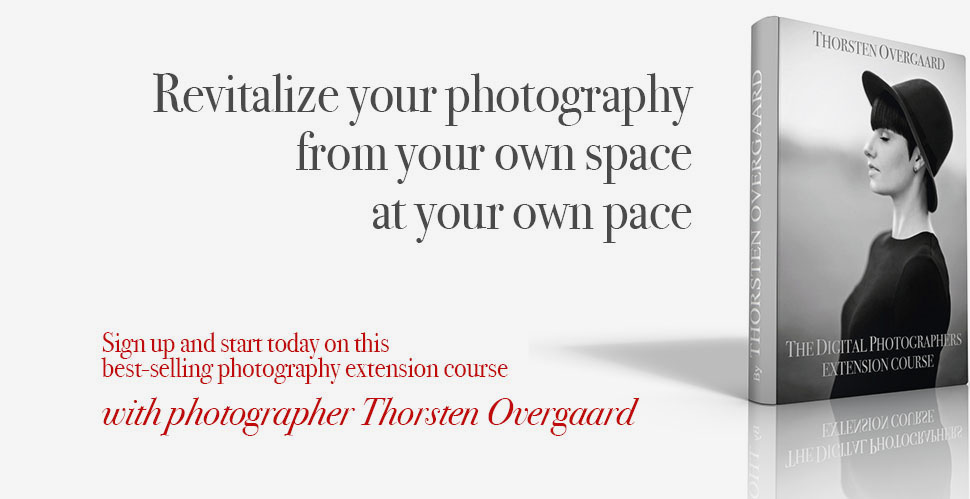

I think the well-controlled photograph is a great thing technically, but I think the less controlled photograph is where you may surpass yourself.
The great portrait is where the person looks great. The technical perfection is of less interest but is desirable to have.
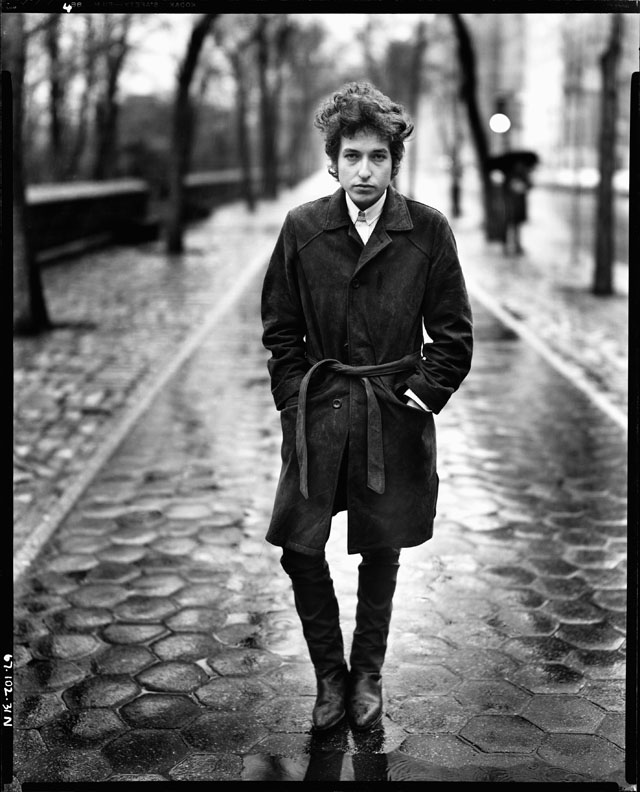
Bob Dylan was photographed by Richard Avedon in 1965. If you look, there is actually back focus. The face is not as sharp as the backhead. And compared, the level of detils in this large format image 8x10" compared is less than if it had been done with a modern digital small image format. Had Richard posted that photo on an online photgoraphy forum (the Colosseum of modern photography), some would probably have told him he didn't know how to use the camera. The image sells for about $80,000.
The test of a good portrait is if the person keep using it for themself. If it is a great photo but the person in it never uses it, it's probably not a great portrait. Just a great photograph.
Only in the sickening weird world of editorial fashion and advertising is a stiff, perfect photoshopped face and body to prefer for a natural looking person.
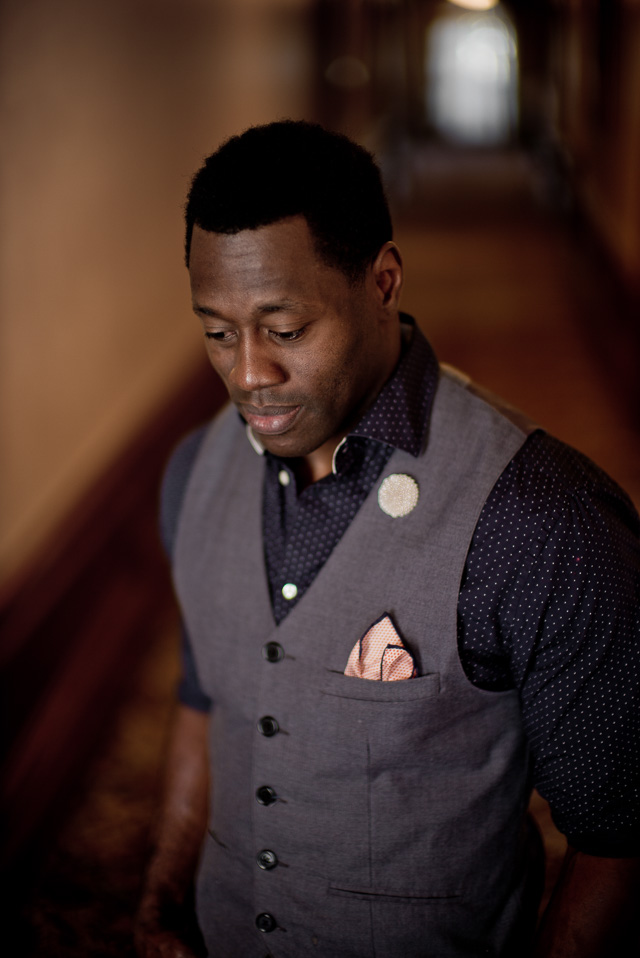
NFL veteran (no 25 of New York Jets) and television host Nick Ferguson, Los Angeles 2016. Leica M 240 with Leica 50mm Noctilux-M ASPH f/0.95. © Thorsten Overgaard.
The final step in my choice between the Leica M system and the SLR system was for me the freedom of traveling with just a small camera and one lens, instead of a trolley with lenses.
| |
 |
| |
One way of saying that a Renault Clio is a sign of self-confidence. |
| |
|
I think it takes some guts to go small. I know it did for me and that I had considerations about it. If you have a large gear, nobody can question if you are a professional. And you will never be caught unprepared. You have everything with you that could possibly be required.
If you have only a small camera you better be sure they like the pictures!
I think that professionalism is that you know that no matter what, one of the 10, 30 or 200 photos you take will fulfill the job. I'm never nervous when I photograph, I know I will get something that will work. For me that is professionalism.
You make a decision and you stick with it. And you know it will work, one way or the other.
If anything, that is what I have gained over the years. self-confidence that no matter what happens, I can solve it with one camera and one lens. Fake it till you make it.
Only on very important assignments will I make sure that I use enough different cameras and memory cards so that any equipment failure won't result in complete failure. But I don't act different or take more photos "to be sure".
It also adds to the story that I like to be underdressed. I prefer to have to create the photograph with what I got and have the game of figuring out how to make it work.
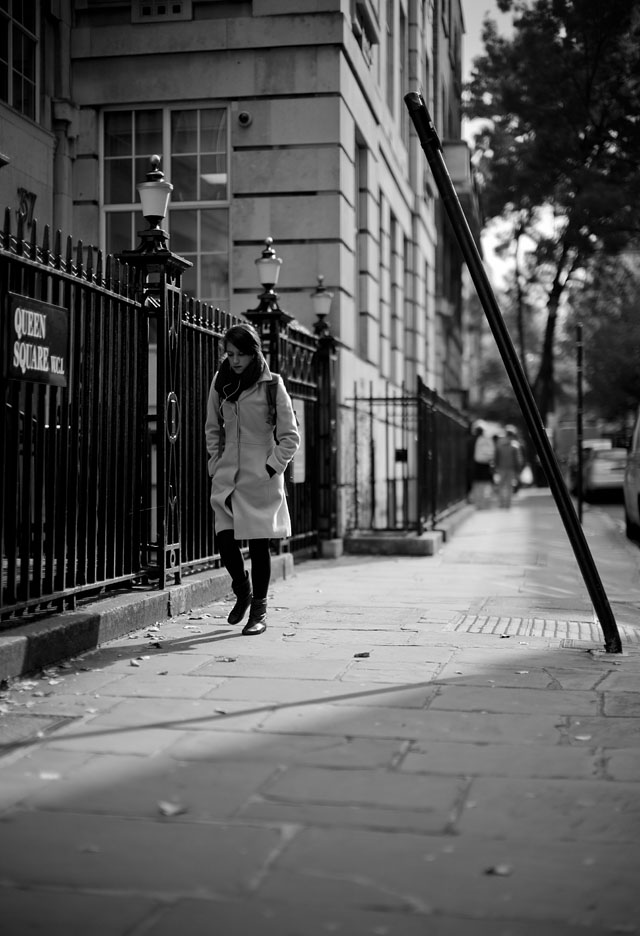
London, October 2015. Leica M 240 with Leica 50mm Noctilux-M ASPH f/0.95. © Thorsten Overgaard
| |
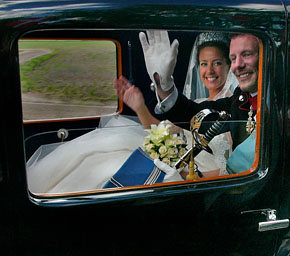 |
| |
Royal wedding with a 35mm. |
| |
|
I remember that I went to do a royal wedding with a 35mm. With 200 television cameras and everybody else using tele lenses, you really have to consider where to place yourself to get the shot. Once in a lifetime, within few seconds, will the scenery be close enough for a 35mm lens. The chance that someone steps in front or things just doesn't go as prepared is great, but so is the chance that it works you get that special look.
That's how it went for me and it worked out. When I want to improve, I try harder. I don't buy a new gadget. The photo stores are full of gadgets to improve photography, sparkle the enthusiasm and abuse your lust for investing more into your passion. But some times you should spend more time simply looking and imagining.
I moved to the Leica M in 2009 and I never looked back. I still have my Leica R9 SLR and lenses, and I some times find myself drooling over the idea of getting the Leica S digital medium format system. I also pre-ordered the Nikon D800E when it was announced, but when I saw the prototype I decided to cancel my order.
There is a lot of muscle memory and pleasure moments in "being behind a camera", which you are with a big setup. But usually when I think of all the stuff to take with me if I had the large gear again, I punch myself: "Why on earth would you start traveling with a large trolley, again?"
And that's usually the end of that discussion.
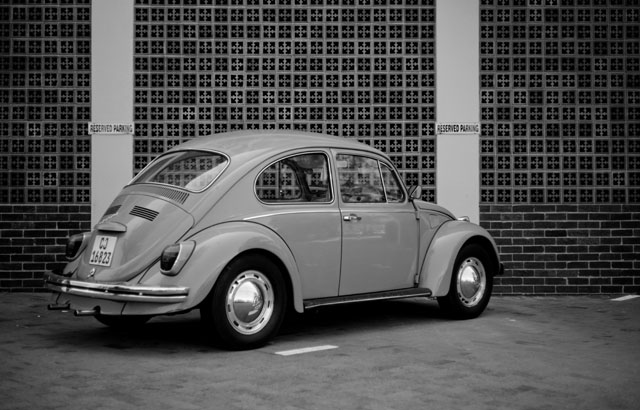
Cape Town 2012. Leica M9 with Leica 50mm Summicron-M f/2.0 at 160 ISO, 1/350 sec. © Thorsten Overgaard.
Thank you for your time. I hope you enjoyed this introduction on how to focus the Leica M and how to get the M to work for you. It will require a little patience on your part as the next articles are only being prepared now.
As usual, feel free to e-mail me with any suggestions, ideas or questions at thorsten@overgaard.dk
| |
|
|
| |
A Leica camera revisits its path
June 23, 2019:
The Leica M240 is being re-launched in what is called a "limited run of 750 cameras", as a Leica M-E 240.
It's the Leica M240, but now in a grey-silvery version and with a 2GB buffer (as known form the M-P 240 version). The genius about this, is the price of just $3,995, making it the cheapest Leica digital camera to be launched in a long time (forever, actually). The Leica M240 silver is still available, with basicalluy the same specifications (less the 2GB buffer), but for $5,995.00..!
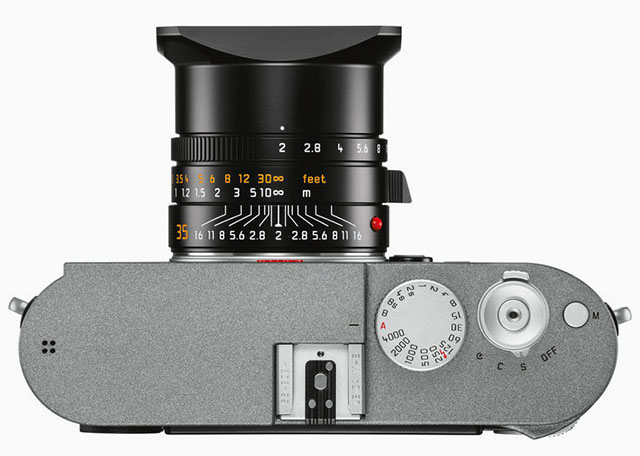
The genius about the re-launch of the Leica M-E 240 is the price of just $3,995, making it the cheapest Leica digital camera to be launched in a long time (forever, actually).
|
|
| |
|
|
| |
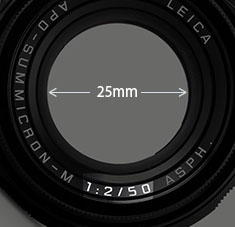 |
| |
1:2/50 the description says.
But what does it mean? |
| |
|
1: = Basically means 1 divided with. On the lens to the right, it means that the diameter of the hole throught he lens is 25mm.
We would normall call it
a 50mm f/2.0 lens. The writing of 1:2/50 is a tradition from the 1800's of specifying a lens, which reveals quite a bit about the construction:
Focal length 50mm simply means that the distance from center of focus inside the lens to the focusing plane (the sensor or film) is 50mm, and the aperture of f/2 or 1:2 means that the diameter of the hole the light comes throught is 25mm (50mm divided with 2 = 25mm).
In traditional lens design, one could usually tell from looking at the length of a lens if it was a 400mm, 100mm or 35mm. Newer designs with mirrors (in tele lenses) and more corrections (in wide lenses) can make the size of the lenses shorter or longer, but the distance from center of focus to sensor in a modern 50mm lens will still be 50mm for a 50mm and 400mm for a 400mm, and so on.
See Focal length and Aperture further down for more.
35mm
a) 35mm lens is a lens that has a viewing angle of view is 63°vertically, 54° horizontally and 38° vertically within a 35mm film frame or "full-frame" 24x36mm digital format. See Focal length further down.
b) 35mm focal length: the distance from center of focus inside the lens to the focusing plane (the sensor or film) is 35mm.
| |
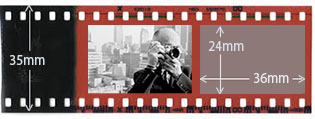 |
| |
35mm film format (also known as full-frame) |
| |
|
c) 35mm film format (also known as full-frame in digital sensors) was a standard film format that came about in 1892 where the width of the film roll was 35mm, and it's been the most used format ever since. Only a format of 24 x 36mm is used for the photo on the film roll.
35mm film format was first used in 1892 by William Dickson and Thomas Edison for moving pictures with frames of 24 x 18mm, using film supplied by George Eastman (Kodak), and this became the international standard for motion picture negative film in 1909. Later other motion picture formats came about, such as Academy Ratio (22 x 16 mm), Widescreen (21.95 x 18.6 mm), Super 35 (24.89 x 18.66 mm) and Techiscope (22 x 9.47 mm).
The inventor of the Leica camera, Oskar Barnack, built his prototype Ur-Leica in 1913 as a device to test film stock and\ motion picture lenses and had it patented. Putting 35mm film format into a small camera gave him the idea "small negative, large print" and he decided to increase the size of each frame on the 35mm film to 24x36mm (for more detail and sharpness), and then invented an enlarger to make large prints from the small negative. The length of a film, 36 pictures, is said to have become the standard because that was how far Oskar Barnack could stretch his arms (when cutting film from larger rolls to put them into film rolls for the Leica camera).
d) 35mm equivalent is often given as a standard when talking about lenses in small compact-cameras or large format cameras with other sensor/film format than the 24 x 36mm frame. Example: A camera with a 12 x 18 mm sensor has a 14mm lens on it, and even the lens is actually a 14mm, it is specified as a 28mm lens because the viewing angle that ends up on the sensor is equivalent to a 28mm lens on a 35mm of full-frame camera.
| |
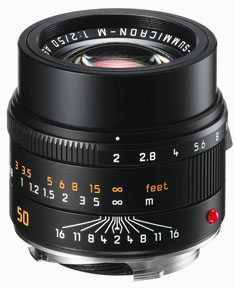 |
| |
The Leica 50mm APO-Summicron-M
ASPH f/2.0 lens |
| |
|
50mm
a) 50mm lens is a lens that has a viewing angle of view is 47° vertically, 40° horizontally and 27° vertically within a 35mm film frame.
b) 50mm means there is 50mm from the center of focus inside the lens to the focal plane (sensor or film).
c) 50mm lens is often compared to the human eye. Not because of viewing angle (how wide it sees) but because of size ratio (how it sees). The 50mm lens is the lens that comes closest to the size that the human eye see things. Whereas the human eye has a much wider angle of view [120-200°] than the 50mm lens [47°].
AF = Auto Focus. The idea is that the camera does the focusing itself (the word auto comes from Greek "self").
Aperture = The same function as the iris and pupil has in the eye. The pupil in the eye is the dark circular opening in the center of the iris of the eye, varying in size to regulate the amount of light reaching the retina (the sensor area inside the eye).
Aperture on a camera is the f/ stop on the camera that regulates how much light passes through the lens by increasing or decreasing the hole through the lens. On a f/2.0 lens the lens is fully open" at f/2.0. At f/2.8 the aperture inside the lens make the hole through the lens smaller so only half the amount of light at f/2.0 passes through. For each f/-stop (4.0 - 5.6 - 8.0 - 11 - 16) you halve the light. The aperture of the lens is basically the focal length divided with the f/-stop = size of the hole (50mm divided with f/2.0 = the hole is 25 mm in diameter).
Besides regulating the amount of light (so as to match the correct exposure), the aperture also affects the dept of field: , which is how deep the sharpness is. To get the sough-after photos with narrow depth of field where the background is blurry, the lens has to be wide open at f/2.0 or so. Stopping the lens down to f/8 or f/16 will result on more depth of field, meaning the background will start becoming in focus. To maintain narrow depth of field, one can use the ISO sensitivity and/or the shutter speed to match the correct exposure (as aperture is only one of three ways to control the exposure; the correct amount of light).
ORIGIN: Late Middle English : from Latin apertura, from apert- ‘opened,’ from aperire ‘to open’.
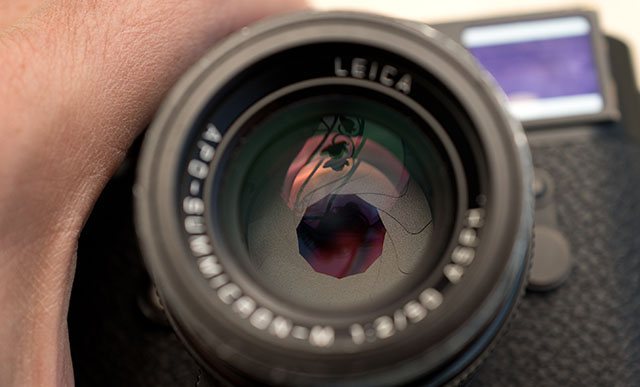
The aperture blades inside the consist of a number of blades that - as the aperture ring on the lens is rotated - narrow into a smaller and smaller hole. © Thorsten Overgaard.
| |
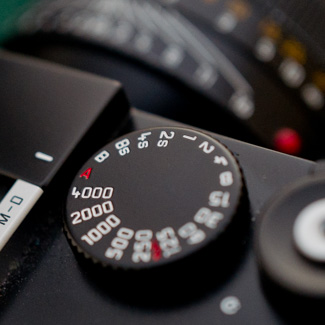 |
| |
The camera in Aperture Priority Mode |
| |
|
Aperture Priority Mode = When the shutter speed dial on top of a Leica M camera is set to A, it is short for “Aperture Priority” and allows the user to set a specific aperture value (f-number) while the camera selects a shutter speed to match it that will result in proper exposure based on the lighting conditions as measured by the camera's light meter. In other words, you set the aperture as priority (f/1.4 for example), and the camera calculates a shutter speed (1/250 of a second) that matches that. If you change the aperture to f/2.0 by changing the aperture ring on the lens, the camera will re-calculate the speed to 1/125 so as to get the same amount of light to hit the sensor (f/2.0 is half the light through the lens as f/1.4 and 1/125 if twice the amount of light on the sensor as 1/250).
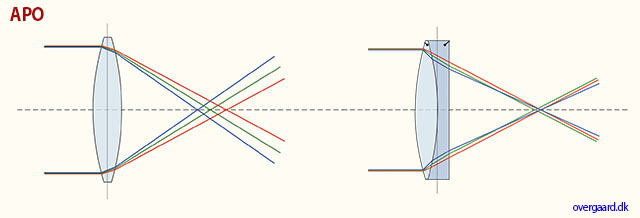
APO corrected basically means that the red, green and blue has been corrected to meet more precisely in the same spot. Clarity of colors and definition of details would be the result.
APO = in lens terminology stands for "apochromatically corrected". In most lenses, optical design concentrates the focus of blue light and green light into a single plane, but red light falls slightly into another plane of focus. In APO lenses, the design and expense has been put in to making red light focus on the same plane as blue and green. Under a microscope you would see that all light subject is now in focus, creating a sharper image overall. Many manufacturers offer APO designs, but in most of these only the very center of the lens is APO corrected. Leica prides itself on making most of the frame APO corrected.
APo-correction has traditionally been used for long tele lenses (and periscopes), but in recent years APO-correction has been applied to 50mm and wide angle lenses as well. One will notice that the colors are really bright and alive, almost more real than to the eye, in lenses like the Leica 90mm APO-Summicron-M ASPH f/2.0 and 50mm APO-Summicron-M ASPH f/2.0.
Apochromat; ORIGIN early 20th century, made of the two words; apo (Greek origin, away from) and chromatic (Latin origin, meaing relating to color).
| |
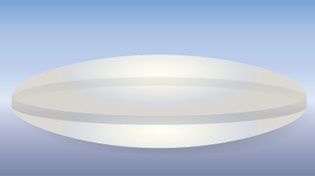
spherical (ball) |
| |
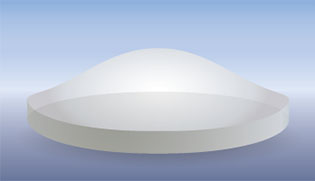
a-spherical (non-ball) |
| |
|
ASPH = (Aspherical lens) stands for "aspheric design".
Most lenses have a spherical design - that is, the radius
of curvature is constant. These are easy to manufacture by
grinding while "spinning" the glass. This design
however restricts the number of optical corrections that can
be made to the design to render the most realistic image possible.
ASPH lenses (a-spherical, meaning non-spherical), however, involve usually 1 element that does
*not* have a constant radius of curvature. These elements
can be made by 1) expensive manual grinding, 2) molded plastic,
or 3) Leica's patented "press" process, where the element
is pressed into an aspherical ("non-spherical")
shape. This design allows Leica to introduce corrections
into compact lens designs that weren't possible before. Practically,
the lens performs "better" (up to interpretation)
due to increased correction of the image, in a package not
significantly bigger than the spherical version.
There is another Aspherical lens manufacture technique: an uneven coating layer is applied to a spherical lens. The coating is thicker on the edges (or on the center, depending). Canon "Lens Work II" calls these "simulated" aspherical lenses. Simulated and Glass-Molded (GMo) asphericals show up in non-L Canon lenses, while the L lenses have actual ground aspheric elements.
A- means non, or without. From Latin, ex.
Sphere: ORIGIN Middle English : from Old French espere, from late Latin sphera, earlier sphaera, from Greek sphaira "ball".
| |
|
|
 |
| Normal spheric lens (grinded) |
|
ASPH (note the shape of the glass as result of pressing rather than grinding) |
Auto- means “self”. The idea is that when a camera has auto-(something), it does that (something) by itself.
Banding = Noise in digital images. Horizontal lines in a horizontal picture (if the camera is in portrait mode/vertical, the lines will obviously be vertical). It's simply noise; the result of uncontrolled algorithms working overtime with an image the sensor really can't see because it's very dark. (If your image has vertical lines in it, it is more likely that the sensor needs remapping).
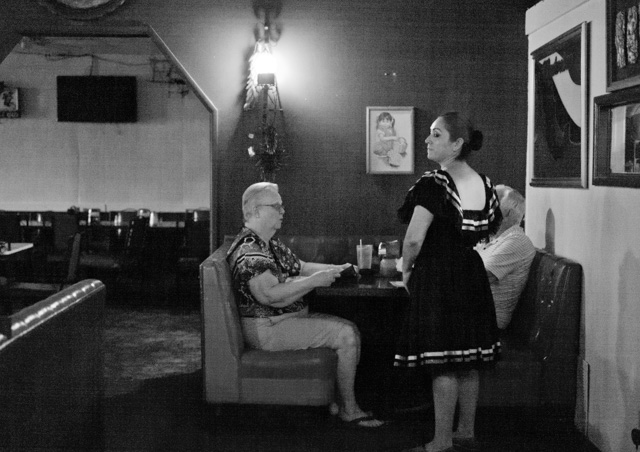
This image at 6400 ISO, underexposed and then brought up to correct exposure in Lightroom, displays banding: Horizontal lines in the image. Leica M-D 262 with Leica 50mm APO-Summicron-M ASPH f/2.0.
Base ISO = The ISO the digital sensor was born with. Even a digital sensor goes from say 50 ISO to 25,000 ISO, it only has one base ISO. Any other setting is an algorithm that figures out how the image whould look if there was 64 times more light, or half the light, etc.
When you go down from Base ISO (for example 200 to 100 ISO), you can expect a
decrease in quality. When you go up, the decrease is much less. For some sensors, you loose 2-3 stops by going down 1 step in ISO, but can go 8 steps up and only loose 1 stop in dynamic range. Basically, your ISO range should be from Base ISO and as far up as you can, before you see visible decrease in quality (mostly 3200 ISO - 6400 ISO).
Base ISO for Leica M9 is 160 ISO, for Leica M240 it is 200 ISO. For Leica M10 it is around 160 ISO. For Leica M Monochrom it is 320 ISO. For Leica Q and Leica Q2 it is around 100 ISO. For Panasonic Lumix S it is 200 ISO. For most Canon cameras the base ISO is around 100, for most Nikon cameras it is around 200 ISO.
Bokeh = The visual quality of the out-of-focus areas of a photographic image, especially as rendered by a particular lens: It's a matter of taste and usually photographers discuss a 'nice' or 'pleasant' bokeh (the out-of-focus area is always unsharp, which is why the quality discussed is if one likes the way it renders or not by a particular lens). The closer you get to something, the 'more' bokeh' you get (in that the focus becomes less for the background and foreground at close distances than at long distances). ORIGIN from Japanese 'bo-ke' which mean 'fuzzines' or 'blur.'.
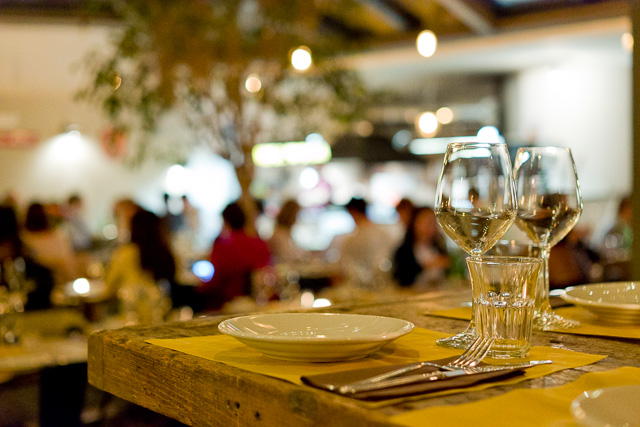 Bokeh: The visual quality of the out-of-focus areas of a photographic image. Photo at Bar del Fico in Rome. Leica TL2 with Leica 35mm Summilux-TL ASPH f/1.4. © Thorsten Overgaard. Bokeh: The visual quality of the out-of-focus areas of a photographic image. Photo at Bar del Fico in Rome. Leica TL2 with Leica 35mm Summilux-TL ASPH f/1.4. © Thorsten Overgaard.
C = Continuous shooting. When the ring by the Shutter Release on top of the camera (or in the menu of digital cameras that doesn't have such a feature on the outide of the camera) is moved from OFF to C, the camera takes series of images as long as the shutter release is pressed down. In some cameras the speed of continious shooting can be adjusted.

Camera comes from Chambre, mostly in relation to Spanish soldiers’ rooms. Obscura means 'dark', so a dark room is basically the derivation for the word camera.
Camera - is today’s short name for Camera Obscura (meaning “a dark room”). Camera means Chambre and was used only as a Latin or alien word, actually only for Spanish soldiers’ rooms, until popularized in connection with photography in 1727: “Camera Obscura”. In 1793 the slang term “camera” was used by Sterne Tr. Shandy: “Will make drawings of you in the camera” and by Foster (1878), “The eye is a camera”. Camera Obscura was described by Iraqi scientist Ibn-al-Haytham in his book, “Book of Optics” (1021) and by Leonardo da Vinci in 1500; popularized and made widely known in 1589 by Baptista Porta when he mentioned the principle in his book “Natural Magic”. Johannes Kepler mentions Camera Obscura in 1604.
Camera = chambre (room), Obscura = dark (or cover).
| |
|
|
| |
Why is it called a "camera"..?
The word Camera is today's short name for Camera Obscura (which originally means “a dark room”).
Origin of the word Obscura means "dark" or "covered", and the word Camera means Chambre and was used originally only as a Latin or alien word, actually only for Spanish soldiers' rooms, until popularized in connection with photography in 1727: “Camera Obscura”.
In 1793 the slang term “camera” was used by Sterne Tr. Shandy: “Will make drawings of you in the camera” and by Foster (1878), “The eye is a camera”.
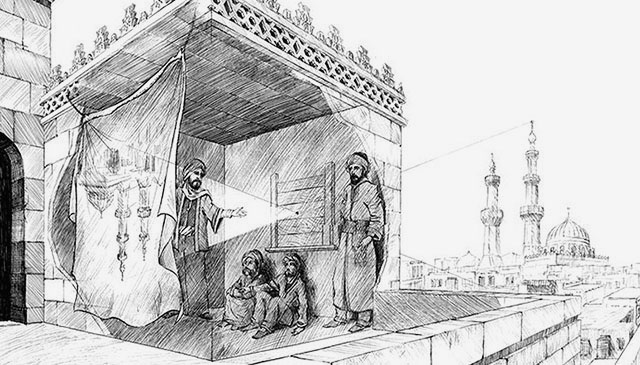
Ibn-al-Haytham mentioned Camera Obscura in his "Book of Optics" in 1021.
The concept of Camera Obscura was described by Iraqi scientist Ibn-al-Haytham in his book, “Book of Optics” (1021) and by Leonardo da Vinci in 1500; popularized and made widely known in 1589 by Baptista Porta when he mentioned the principle in his book “Natural Magic”. Johannes Kepler mentions Camera Obscura in 1604.
Camera = chambre (room), Obscura = dark (or cover). |
|
| |
|
|
CCD sensor (as used in Leica M8, M9, Leica S) = (Charged Coupling Devices) - The first digital cameras used CCD to turn images from analog light signals into digital pixels. They're made through a special manufacturing process that allows the conversion to take place in the chip without distortion. This creates high quality sensors that produce excellent images. But, because they require special manufacturing, they are more expensive than their newer CMOS counter parts.
CLA
An acronym for "(C)lean, (L)ubricate & (A)djust", whereby the item is merely re-lubricated, fine-adjusted and calibrated rather than repaired. "I just got my equipment back from CLA at Leica"
CMOS sensor (as used in Leica CL, Leica T/TL/TL2, Leica M10, Leica M 240, Leica M Monochrom Typ 246, Leica S Typ 007, Leica SL, Leica Q, Leica Q2, Leica M10, Leica X, Leica D-Lux, etc.) = (Complimentary Metal Oxide Semiconductor) chips use transistors at each pixel to move the charge through traditional wires. This offers flexibility because each pixel is treated individually. Traditional manufacturing processes are used to make CMOS. It's the same as creating microchips. Because they're easier to produce, CMOS sensors are cheaper than CCD sensors. CMOS allow Live View and use less energy than CCD.
Collapsible - Usually refers to a collapsible lens such as the Leica 50mm Elmarit-M f/2.8 Collapsible, or Leica 90mm Macro Elmar-M f4.0 Collapsible, etc. A collapsible lens is one that can collaps into a compact lens when not in use.
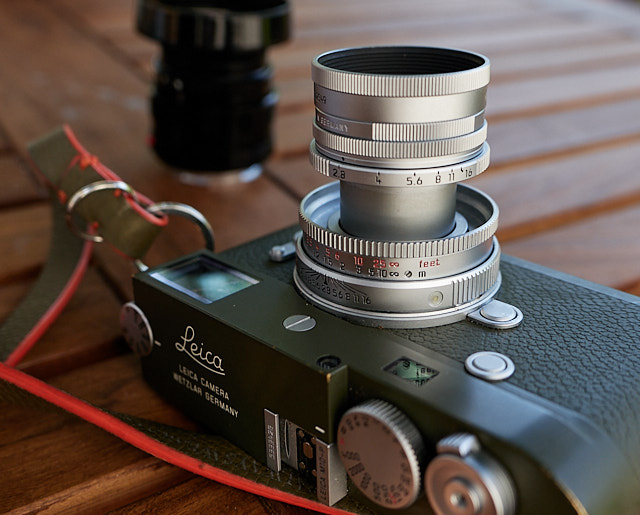
The Leica 50mm Elmar-M f/2.8 Collapsible on a Leica M10-P Safari. Here extruded for use; it can collapse into the camera so as to be more compact when not in use. © Thorsten Overgaard.
Contrast - The degree of difference between tones in a picture. Latin contra- ‘against’ + stare ‘stand.’
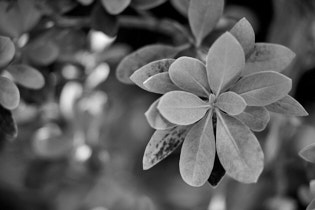 |
|
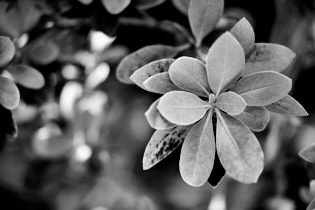 |
| Normal to low contrast |
|
High contrast |
| |
|
|
D-Lux (Digital Lux) = A series of compact digital cameras by Leica Camera AG developed with Panasonic since 2003. See my article "Compact Digital Leica Cameras" and my Leica D-Lux 7 review. Lux comes from Latin and means Light.
| |
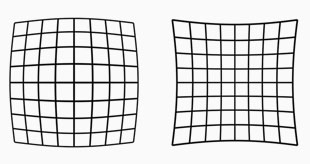 |
| |
Lens distortion looks like this. The lines are not straight. Our eye uses distortion correction. Lens designers can design lenses so they have very little distortion, or they can make less complicated lens designs and "fix" the distortion in software. |
| |
|
Distortion = In photo optics/lenses: When straight lines in a scene don't remain straight because of optical aberration.
Lens designers can correct for distortion to a degree so the whole image field is perfect corrected and all lines remain straight. In modern lens design many designs rely on Software Distortion Correction (SDC).
The eye adjusts for distortion so we always see vertical and horizontal lines straight when we look at things. Even when you get new prescription glasses (if you use such), you will often experience distortion in your new glasses. After a few days they eyes have adjusted for the glasses and the distortion you saw to begin with is now gone. Software Distortion Correction (SDC) is far behind what the human eye can perform of adjustments. (Also see my definition on Perspective for more on the eye and optics)
DNG = Digital Negative, an open standard developed by Adobe. It is a single file that contains the raw image data from the sensor of the camera as well as date, time, GPS, focal length, settings, etc.
The alternative is a RAW file + XMP file where the RAW file contains the image information and the XMP contains the rest of information about where, how and when the picture was taken, as well as editing data when the photo is edited in Lightroom or Capture One.
A Camera Raw profile (that is specific for that camera) in the computer helps the software program, for example Adobe Lightroom, to translate the RAW data into the image. Camera producers provide a Camera profile with their camera, and Adobe makes their own 'refined' Adobe Raw camera profile for all new cameras.
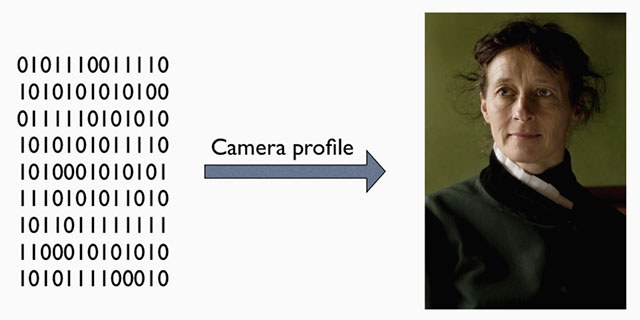
A raw file (or DNG) is simply the full recording of digital data (1's and 0's) from the sensor. In the computer, the sensor data is translated into the exact colors, via a camera profile.
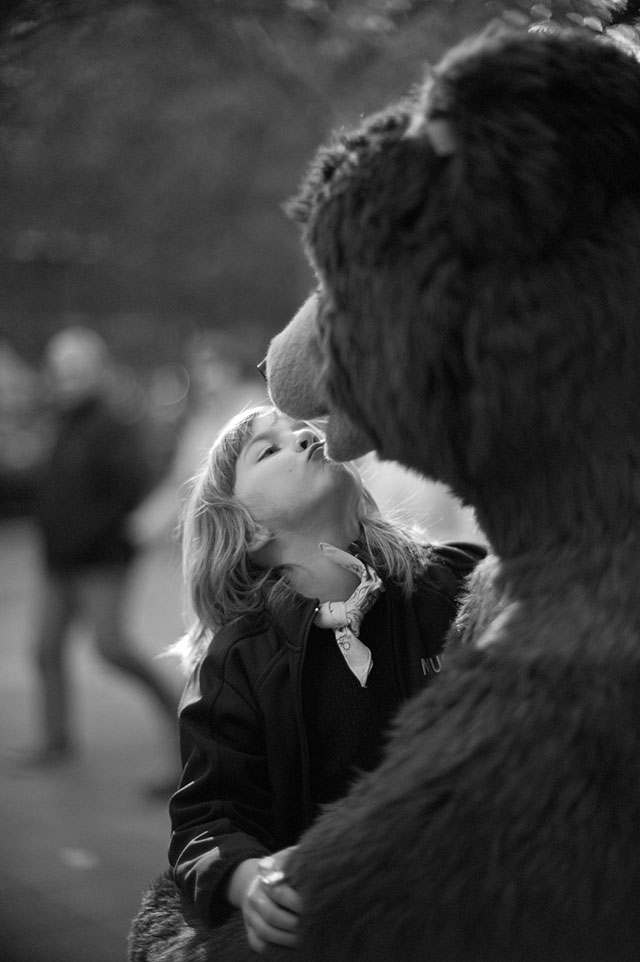
Narrow Dept Of Field in use: The face is in focus, the hand in front is slightly out of focus, the background is much out of focus and blurry, reduced to an atmosphere. Leica 50mm Noctilux f/1.0 at f/1.0 and 2.5 meters distance to subject in focus. © Thorsten Overgaard.
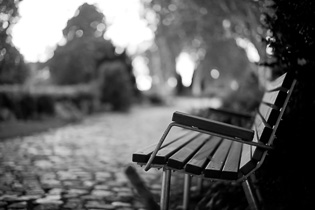 |
|
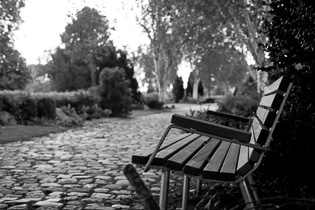 |
| 50mm f/1.4 lens at f/1.4. |
|
50mm f/1.4 lens at f/5.6 |
| |
|
|
| |
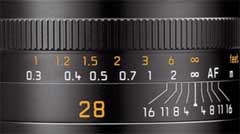 |
| |
The lines on this 28mm lens indicates the DOF. Here the focus is on infinity, and if the lens is stopped down to f/1.6, objects from 1.8 meter to ininity will be 'acceptable sharp'. |
| |
|
DOF = Depth of Field (or Depth of Focus), an expression for how deep the focus is, or (more often use to express) how narrow the area of focus is. This is how much of the image, measured in depth or ditance, will be in focus or "acceptable sharp".
The appearance of the DOF is determined by:
1) aperture (the smaller the aperture hole is, the deeper is the depth of field, and opposite, the wider open a lens you se, the more narrow will the DOF be) and
2) distance to the subject (the farther away, the larger area is sharp; the closer the subject in focus is, the more narrow the DOF gets)..
The DOF scale measurement on top of the Leica lenses shows lines for each f-stop that indicates from which distance to which distance the image will be sharp. Shallow DOF is a generally used term in photography that refer to lenses with very narrow focus tolerance, like f/1.4 and f/0.95 lenses, which can be used to do selective focus; making irrelevant subjects in the foreground and background blurry so only the subjects of essence are in focus and catches the viewers eye).
in modern cameras like the Leica SL2, the camera has a DOF scale inside the viewfinder. As DOF is the same for all lens brands and designs, only depending on focal length, distance and aperture f-stop, the camera can calculate it and show a 'digital DOF scale" in the viewfinder.
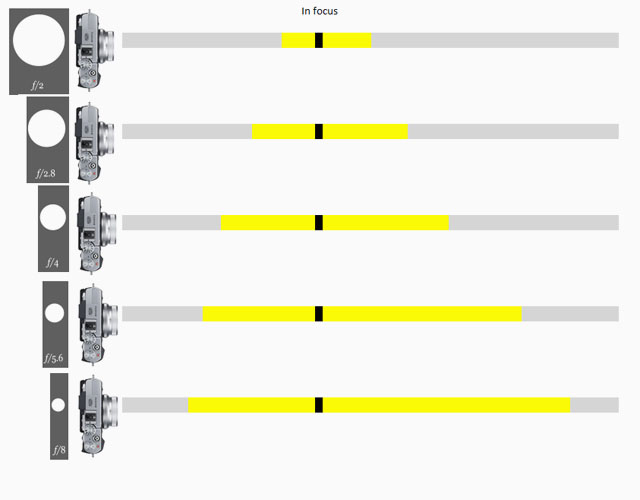
Depth Of Field scale from Fujifilm, same lens with different aperture settings from f/2.0 to f/8.0.
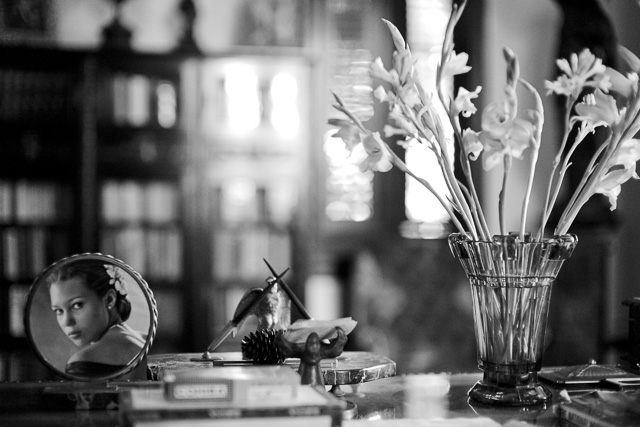
Depth of Field: Focus is on the flowers and the photograph on the desk and the foreground and background is blurred as the depth of field is narrow. If one stop down the aperture of the lens from f/1.4 to f/5.6, more will be in focus. If one stop down the lens to f/16 even more (if not all) will be in forcus. Another rule: The closer you go to a subject (the less focusing range), the more narrow the Depth of Field will be. © Thorsten Overgaard.
Dynamic range. The grade of ‘contrast range’ (or number of tones) a film or sensor, or simply a photograph, possess between bright and dark tones. The human eye is said to have a dynamic range of 10-14 ‘stops’ (but because we scan area by area and compile a concept of the overall scene, they eye is often thought to have a much higher dynamic range), Film used to have 7-13 ‘stops’ and some modern sensors have up to 15-17 ‘stops’.
E - Diameter in Leica filters and screw diameter, as in E46 which means that the filter diameter is 49mm for this lens. In general language, one would see Ø46 used, as Ø is the general symbol for diameter.
Elmar = Refers to the maximum lens aperture - here f3.5 . Historically derived from the original 1925 50mm f3.5 Elmax lens, which was an acronym of (E)rnst (L)ieca and Professor (Max) Berek, designer of the original lenses. Later that year the 50mm f3.5 Elmar superceded the Elmax, which was discontinued due to its complexity and high cost of manufacture.
Elmarit = Refers to the maximum lens aperture - here f2.8 . The name is obviously derived from the earlier (and slower) "Elmar" designation. Not every f/2.8 lens is called an "Elmarit" though, the most obvious current exception being the 50mm f2.8 Elmar-M collapsible lens which for nostalgia and marketing reasons has kept the original 1930's Elmar name (the 50mm f3.5 collapsible Elmar, manufactured 1930-59, was one of Leica's most famous and popular lenses). Vario-Elmarit (and Vario-Summicron, etc) is Leica Camera AG's name for zoom lenses.
Elmax
Elmax lens named after = Ernst Leitz + Max Berak. Ernst Leitz was the founder of Ernst Leitz Optical Industry which later became Leica. Professor Dr. Max Berak was employed at Leica in 1912 and was the architech of the first Leica lens which Ernst Leitz asked him to design for the "Barnack's camera" (the 1913-prototype named after Oscar Barnack who invented it). The lens was a f/3.5 50mm and was known as the Leitz Anstigmat and later the Elmax.
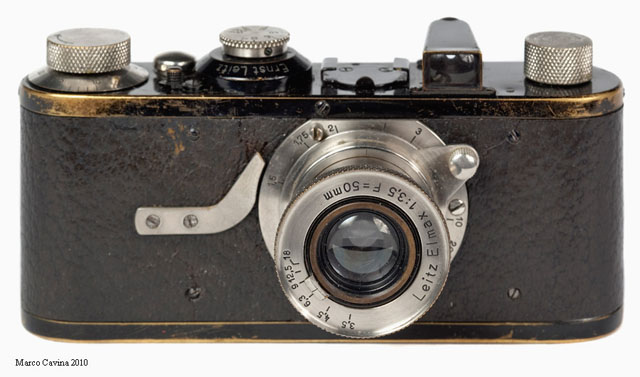
The Leitz Elmax 50mm f/3,5 (1925-1961) on the Leica A camera (1925) camera. Photo by Marco Cavina.
EVF = Electronic ViewFinder. A viewfinder where you look at a small screen through optics/prisms. The advantage is that you see what the sensor sees.
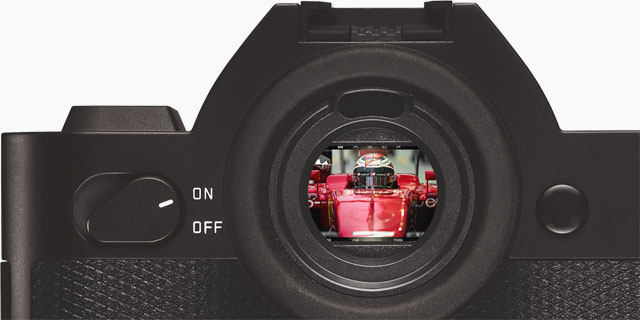
The EVF (Electronic Viewfinder) on the Leica SL 601.
EXIF =Exchangeable Image File, a file generated in camera and enclosed in the image file that contains recording information on the image such as shutter speed, exposure compensation, what metering system was used, aperture setting, ISO setting, date and time the image was taken, whitebalance, which lens was used, camera model and serial number. Some images may even store GPS information so you can see where the image were taken. The data from the EXIF file continues to follow any later editions of the image and can be read in photo editing software such as Capture One and Lightroom, as well as Photoshop (go to the menu File > File Info). There is also software available that can read EXIF data from any file, like Exifdata.com.
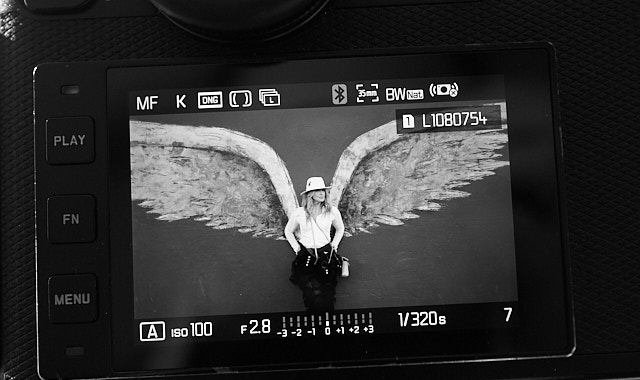
The EXIF data is all the information about shutter speed, metering method, ISO, etc. - and then some more that you don't see on the screen (such as camera model, serial number, lens used, etc).
Exposure Bracketing = The possibility to set the camera to automatically record a series of images where the exposure is above and below what the camera measures. The idea is that at least one of the images will be correctly exposed.
f/ (f-stop, also known as aperture).
f- (focal length). Often given in mm, for example 90mm. In the past they were often given in cm or inch, for example 9.5 cm or 3.2 inch.
f-stop = the ratio of the focal length (for example 50mm) of a camera lens to the diameter of the aperture being used for a particular shot. (E.g., f/8, indicating that the focal length is eight times the diameter of the aperture hole: 50mm/8 = 6,25 mm); or the other way around, the hole is the focal length divided with 8).
ORIGIN early 20th cent.: from f (denoting the focal length) and number.
One f-stop is a doubling or halving of the light going through the lens to the film, by adjusting the aperture riing. Adjusting the f-setting from f 1.4 to f.2.0 is halving the light that goes through the lens. Most Leica lenses has half f-stops to enable the photographer to adjust the light more precicely.
Filters = Glass filters you put in front of the lens. A much used filter is the claer UV filter that is supposed to protects the front of the lens. Other filters are color filters that add effects to black and white photography by changing the color balance. Other filters are ND (Neutral Density) filters that reduce the amount of light coming through (used for for example video recordings as video is usuallu filmed at 1/50th second shutter speed and thus most lenses are too bright wide open. Or they are used for long exposure photography in order to record for example stars movements over the sky. Other filters are filters that create star effects, or blur the view, and almost any effect you can think of.
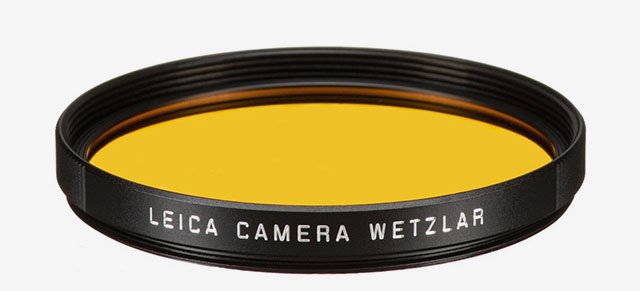
A traditional Yellow filter in 49mm diameter to screw onto the front of the lens. The yellow filter is used for black and white photography where it slightly darkens skies, helps to cut through haze, and improves overall contrast. Yellows and reds within the scene are also lightened.
Flare = Burst of light. Internal reflections between (and within) lens elements inside a lens. Mostly, flare has a characteristic "space travel" look to it, making it cool. Particularly in older lenses with less or no coating of the glass surfaces to suppress this, it can be a really cool effect. In newer lens designs, the coatings and overall design try to suppress flare and any reflections to a degree, so that there is seldom any flare to be picked up (moving the lens to pick up a strong sunbeam), but instead a "milking out" (or "ghosting") of a circular area of the frame; meaning simply overexposed without any flare-looking flares.
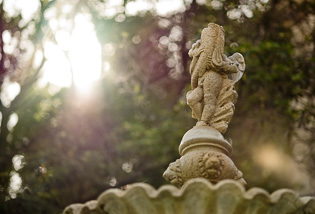 |
|
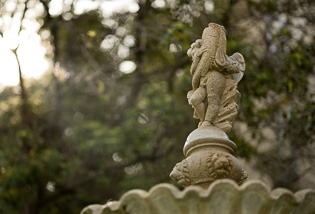 |
Sunlight creating (fairly supressed) flare in the bottom right quadrant of the image of a modern lens. |
|
The camera moved slightly to avoid the flare. |
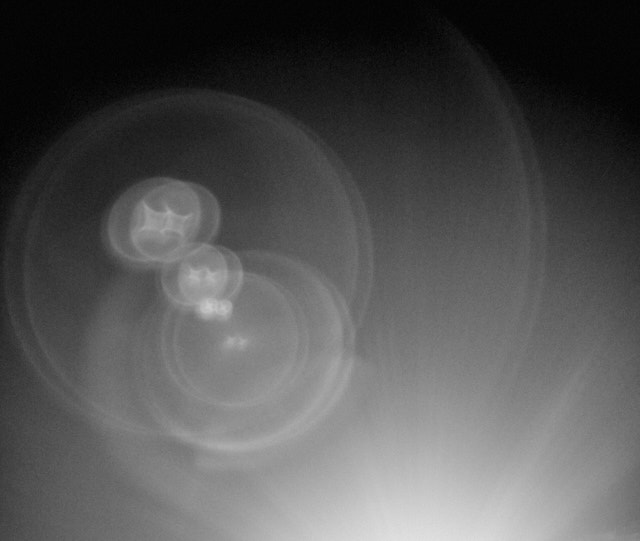
Older lenses with less coating, or without coating, are known to create flare that can look like this (Leica 50mm Summicron-M f/2.0 II Rigid model from the 1960's). © Thorsten Overgaard.
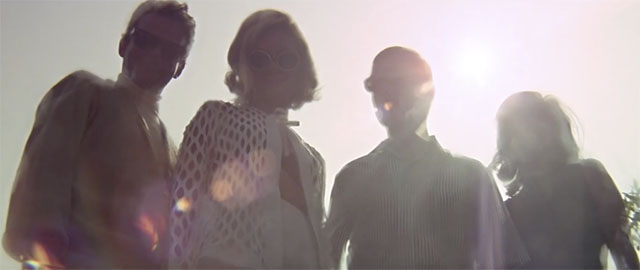
Lens flare in the movie, The Graduate (1967).
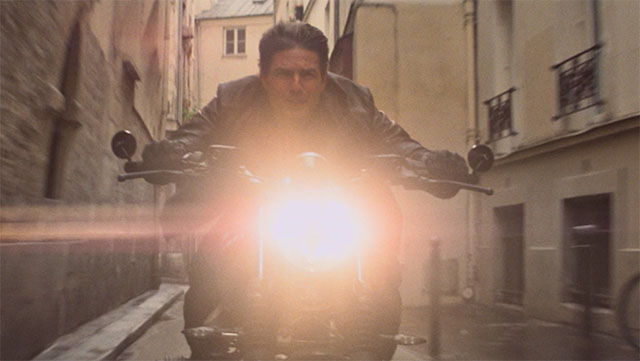
Lens flare in Mission Impossible Fallout (2019)
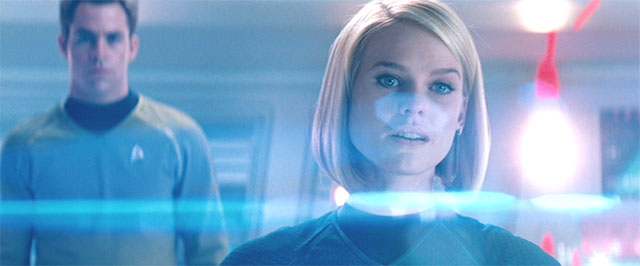
Lens Flare in Star Trek (2013). JJ Abrams famously said, "I know there's too much lens flare ... I just love it so much. But I think admitting you're an addict is the first step towards recovery (ha ha)"
|
FLE = See "Floating Elements"
Flickering in the EVF is very normal and will apear often without the vertical lines you see in the EVF will be in the picture.
| |
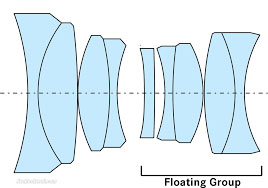 |
| |
Floating elements (a group of lenses or can also be s aingle lens element). . |
Floating Elements (FLE) = Near focus correction in a lens by having a single lens or a group of lenses floating independently of the other lenses. Most lenses are born with poor performance at their closest focusing distance. Center sharpness may be good, but aberrations and corner softness increase when you’re shooting closeups. Floating elements are lens elements outside of the primary focus group that change position when the lens is focused on a close object, correcting aberrations and improving close up performance.
Floating Elements originally was coined by Canon in the 1960's and quickly became the general term for this feature. Other brands came up with new names for the same thing, Minolta called it Floating Focusing, Nikon used the term Close-Range Correction (CRC), Leica call it FLE/Floating Elements.
Floating elements are for close-focus improvement of image quality and not for reducing "focus shift". Floating elements by themselves cannot reduce focus shift, but by reducing the impact of focus distance on performance, they give the designers more freedom in other areas - which could include minimising focus shift.
(As a side-note, when a lens "rattler when moved, it is not the floating elements "floating around" but can be the IS (Image Stabilization) elements for elense that has that, AF elements for auto focus lenses, or the aperture cage that rattles (as in the case of the Leica 35mm Summilux-M f/1.4 FLE - if you stop down the Summilux to f/16, the sound is usually not there).
| |
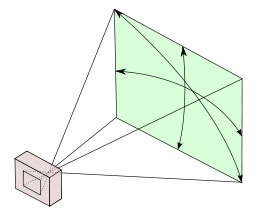 |
| |
A 28 mm lens has a 74° viewing angle |
| |
|
Focal length = Originally focal length referred to the distance from the sensor (or film in older days) to the center of focus inside the lens (28mm, 50mm, 400mm, etc). Today one call it effective focal length (EFL) as a 400mm lens is not nessesarily 400mm long due to optical constructions that can make it shorter. The 35-420mm zoom on the Leica V-Lux 1 is for example only ca. 135 mm long. Nobody uses that measurement, except those who construct lenses! For users of lenses, focal length refers to how wide the lens sees. The viewing angle, which is often given in for example 90° viewing angle for a 21mm lens, 74° viewing angle for a 28mm lens, 6° viewing angle for a 400mm lens, etc.
Each human eye individually has anywhere from a 120° to 200° angle of view, but focus only in the center.
Focus, in - Sharp and clear in appearance. Focus - “The burning point (of a lens or mirror)”. In Latin the word focus meant fireplace or hearth. The word was probably first employed outside of its Latin literal use as “the burning point of a lens or mirror” in optics, and then came to mean any central point. The German astronomer Johannes Kepler first recorded the word in this sense in 1604.
Focus shift = That the focus of a lens shifts as the aperture changes. For example, if one focus a 50mm lens at f/2.0 and then stop the aperture down to f/8, the focus may change, especially noticeable in close focusing. Modern lenses with floating elements (FLE) where the floating elements adjust for image quality in close-focusing may also help avoid focus shift.
Four Thirds - Also known as "4/3" - The Four Thirds System is a standard created by Olympus and Kodak for digital SLR camera design and development.
The system provides a standard which, with digital cameras and lenses available from multiple manufacturers, allows for the interchange of lenses and bodies from different manufacturers. Companies developing 4:3 cameras and/or lenses are Fuji, Kodak, Leica, Olympus, Panasonic, Sanyo, Sigma. See www.4-3system.com
A further development in this was Micro Four Thirds Systems.
Frame lines = the lines inside a viwfinder that indicates the edger of the frame. In a Leica M, the viewfinder always is as wide view as 24-28mm. A mechanical contach on the lens (triggers the camreas frame selector) so the viewfinder shows the frame line of that lens. In the Leica M, the frame lines comes in sets, so there are alwaus twop sets of frame lines shown at any time (see illustration below).
(This is different than in most cameras where you only see what the lens captures: SLR cameras was the evolution in 1940's where the image from the lens was displayed directly onto a matte screen inside the camera via a mirror.
Later mirrorless cameras, the viewfinder shows the exact picture that the sensor sees through the lens).
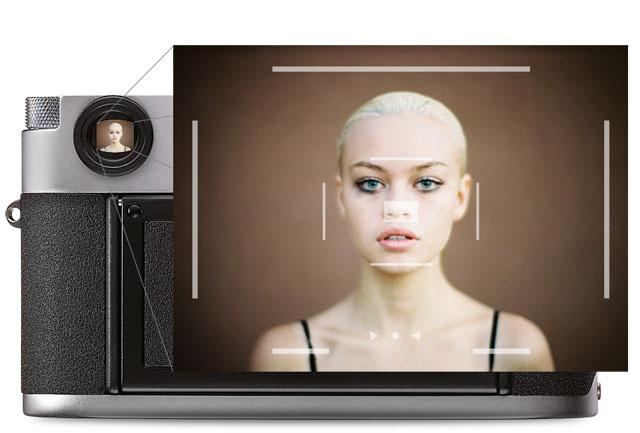
Frame lines of the Leica M, here showing the set of 35mm and 90mm framelines.
| |
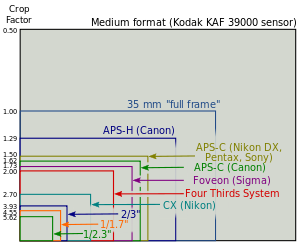 |
| |
Full Frame is "king of photography" |
| |
|
Full Frame (FF) = The size of the sensor is 24 x 36mm which is the format Oskar Barnack and Leica Camera AG invented with the first Leica that was introduced in 1925. Many other formats invented since, such as APS, APS-C and all usually refer to Full Frame ratio, by which it means what size they have compared to Full Frame. The "full frame" technically deifinition thouhg is a sensor that camtures the full frame in one go (as the early sensors as in Leica S1 scanned the image/senor over a period of time).
The 24 x 36mm Full Frame format is so "king of photography" that it has continued to be the ideal for all cameras. Besides this, there exists Large Format cameras such as 4x5" (100 x 125 mm) and Medium Format 6x6 (60 x 60mm amongst other sizes in that area).
Ghosting = Secondary light or image from internal reflections between (and within) lens elements inside a lens. The reflected light may not always be in focus, so overall it looks like a "milked out" image. A subject in focus has brightened patches in front of it that come from reflections inside the lens. the most elementary look of ghosting is when you look in a rear-view mirror in a car at night and you see doubles of the headlights behind you (a strong one and a weaker one), because the headlights are reflected in a layer of clear glass on top of the mirror glass.
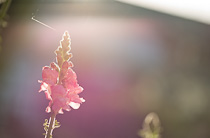 |
|
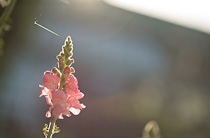 |
|
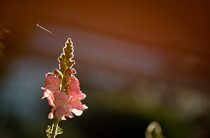 |
| Degrees of ghosting from strong sunlight entering from outside the frame. To the right the outside light has been shielded with a shade. |
ISO = Light sensitivity of the camera sensor is given in ISO (International Organization for Standardization). It's a standard that was used in film and is now used in all digital cameras also. The base ISO for the Leica TL2 sensor is around 100-150 which means that this is what the sensor "sees". All other levels are computer algorithms calculating the effect as if the sensor could "see" more (hence noise at higher ISO levels).
ISO goes in steps of doubling: When the ISO is raised from 100 ISO to 200 ISO, the camera only need half the amount of light to make the same picture. For each step in ISO to 400, 800, 1600, 3200, etc. the light sensitivity is doubled for the sensor (and the camera sensor only need half the light of the previous ISO to record the same image).
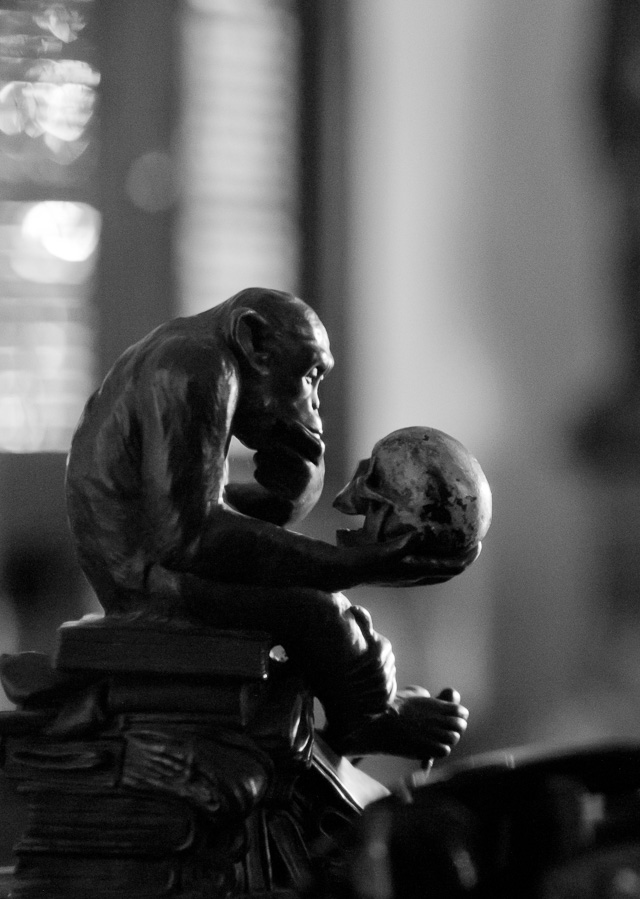
6400 ISO indoor photo. With modern cameras the ISO can go to 3200, 6400, 12,800 and even higher without loss of dynamic range and without digital noise. Leica M10 with Leica 50mm Noctilux-M ASPH f/0.95. © 2017 Thorsten Overgaard.
JPEG = A standard for picture format made in the 1990's by Joint Photographic Experts Group). Mostly referred to as JPG as in L1003455.JPG which would be the name for a JPG file from the camera.
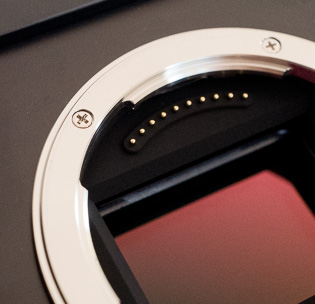
Leica L-mount bayonet. |
L-mount = Lens bayonet mount introduced by Leica for the Leica T in 2014 and used for Leica TL, Leica CL and Leica SL. Since 2019 the L-mount has also been shared with Panasonic, Sigma and others who produce cameras and lenses that are compatible with Leica L cameras and lenses lenses, and vice versa.
The L-mount has a diameter of 51.6 millimeter which is big enough for any design we could wish to design, and at the same time compact enough for the L-mount to be used on compact cameras such as Leica TL and Leica CL with APS-C sensor sizes. Leica chief lens designer Peter Karbe spent years calculating this ideal size, large enouhg for any design, yet as compact as possible. Read my article "Small Camera, Large Print" (2019) with interview with lens designer Peter Karbe for more.
After Leica introduced this new bayonet mount in 2014, Nikon (Z-mount 55mm), Fuji (G-mount 65mm) and Canon (RF-mount 54mm) followed with similar new bayonet mounts, but with bigger diameter, making them less able to produce compact lenses.
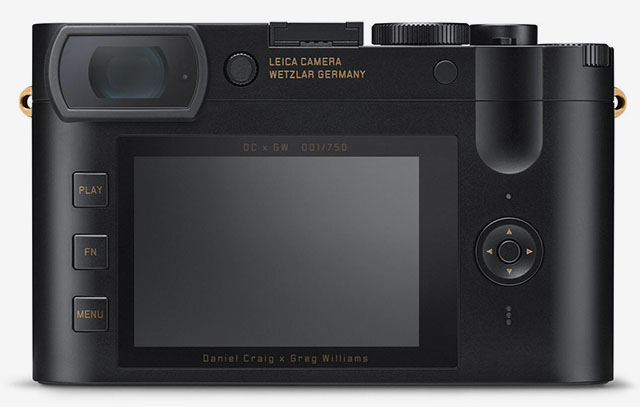
A screen on a camera is often referred to as "LCD Screen" for no particular reason (illustration is the back of the Leica Q2 special limited "James Bond/Daniel Craig & Greg Williams" version (2021).
LCD = Screen. LCD itself means liquid crystal display, which is slightly irrelevant (what it is made of) as the expression is mostly used to simply mean "screen".
Leica = A compound word derived from " (Lei)tz" and "(ca)mera". Apparently they were originally going to use "LECA", but another camera company already used a similar name in France, so they inserted the 'i' to prevent any confusion.
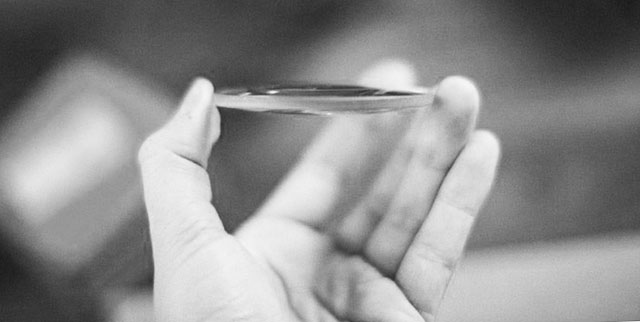
The word lens derives from lentil, because of the similar shape.
Lens - A piece of glass or similarly transparent material (like water or plastic) that has a shape so that it can direct light rays. The word “Lens” is used both for single piece of glass as well as a camera lens with several lenses that works together. From ‘lentil’ because similar in shape.
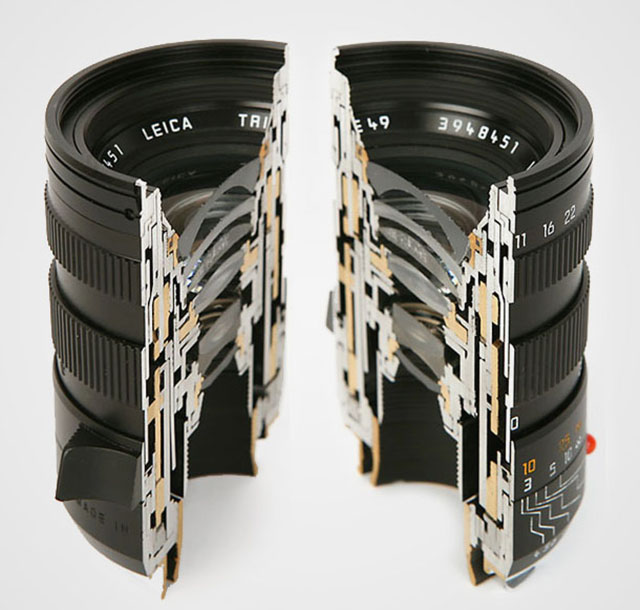
A camera lens consists of several shaped lens elements of glass. The lenses can also be made of simple cheap plastic as in "kit lenses" (sold with a camera as a kit to make a workable cheap package), but it is mostly very exotic glass (that can be heavy or light in weight, very hard or very soft in surface (esay to scratch or very resistant) with each optical glass recipe made to develop very specific qualities in how the glass and final lens treats light. As a general rule, high quality glass is soft, which is why some lenses has as their front and back element, a non-optical lens element that is there to protect the actual optical glass from scratches. As a side noite, Leica made their own glass laboraty, The Leitz Glass Laboratory, from 1949-1989, which deveopled 35 new glass types and took out more than 2,000 patents of glass recipes from more than 50,000 experimental melts of glass. These designs, or recipes, are still used today by the lens designers to obtain very specific optical results. Other lens manufacturers in the world of course have had their glass laboratories, and today one will find an interchange of glass patents amongst production facilities that service Leica, Nikon,, Fuji and so on with optical lens elements.
Lens hood = (also called a Lens shade or Ventilated Shade). A tube or ring attached to the front of a camera lens to prevent unwanted light from reaching the lens and sensor. In the past where lenses were not coated to prevent internal reflections inside the lens, the lens hood was often essential. These days where lenses are coated, the shade serves just as much as decoration and protection (bumper) as well.
ORIGIN Old English hod; related to Dutch hoed, German Hut 'hat,' also to hat.
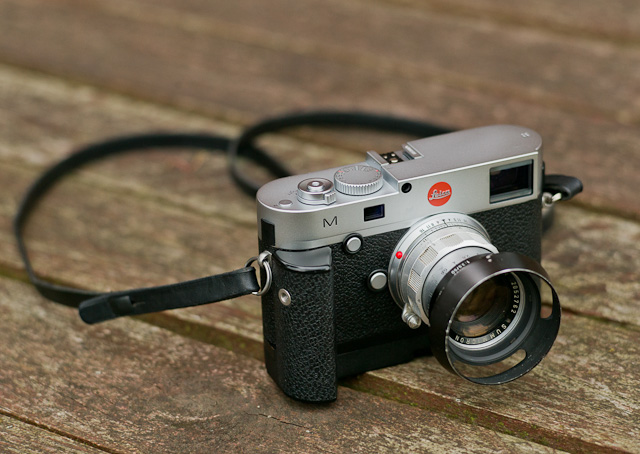
Lens hood or Lens shade or ventilated shade. In the picture is a ventilated shade with clip-on mount to a 50mm f/2.0 lens. Ventilated means it has openings that allow for view from the viewfinder.
Lens names of Leica distinguish which widest aperture the lens has:
| Noctilux |
f/0.95 - f/1.25 |
| Nocticron |
f/ 1.2 (Leica-designed Panasonic lens) |
| Summilux |
f/ 1.4 - f/1.7 |
| Summicron |
f/2.0 |
| Summarit |
f/2.4 - 2.5 |
| Hektor |
f/1.9 - f/6.3 (used 1930-1960 for screw mount lenses only) |
| Elmarit |
f/2.8 |
| Elmar |
f/2.8 - f/4.5 |
| Elmax |
f/3.5 (only used 1921-1925 for the 50mm Elmax f/3.5) |
| Telyt |
f/2.8 - f/6.8 (used for tele lenses) |
Light = Tiny particles called photons that behaves like both waves and particles. Light makes objects visible by reflecting off of them, and in photography that reflecting off of subjects is what creates textures, shapes, colors and luminance. Light in its natural form (emanating from the sun) also gives life to plants and living things, and makes (most) people happier. So far, nobody has been able to determine exactly what light is. The word photography means “writing with light” (photo = light, -graphy = writing). Read more about light in my book Finding the Magic of Light.
Live View = This is the ability to see the image the sensor see, live, via the screen on the back of the camera, or via an electronic viewfinder (EVF).
LMT - Leica Thread-Mount: Also known as M39, is the screw mounted lenses for Leica cameras. It’s a simple as that; you screw on the lens, and back in 1932, the possibility to change the lens was the big news hwen introduced by Leica on the Leica III. The M39 system was updated with the M Bayonet from 1954 for the Leica M3. The M bayonet is a quick way to change lenses and is the current mount for Leica M digital rangefinders.
M (as in "M3", "M6", "M7" etc.)
A) The M originally stands for "Messsucher", which is German "Meßsucher" for "Rangefinder". The "3" in M3 was chosen because of the three bright line finders for the 50, 90 and 135 mm lenses. Later the numbers of the M cameras were more or less chosen to follow each other.
M-body evolution in chronologic order:
M3 - MP - M2 - M1 - MD - MDA - M4 - M5 - CL - MD-2 - M4-2 - M4-P - M6 - M6 TTL - M7 - MP - M8 - M8.2 - M9 - M9-P - MM (black and white sensor) - ME (Type 220) - Leica M (Type 240) - Leica M-P 240 - Leica M 246 Monochrom - Leica M-A (type 127, film camera) - Leica M 262 - Leica M-D 262 (without a screen) - Leica M10 - Leica M10-P, Leica M10 Monochrom, Leica M10-R.
B) M also refer to M-mount as the M bayonet that couple the Leica M lenses to the Leica M camera. Before the M bayonet the coupling between the camera and lens was screwmount.
C)
M nowadays refer to the Leica M line of cameras rather than the "Messsucher".
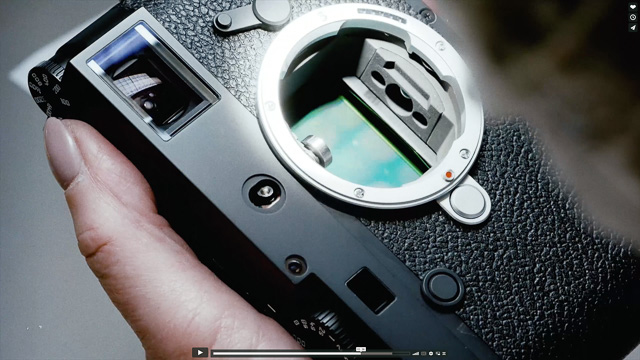
The Leica M bayonet on the Leica M10.
- M-mount: The Leica M-mount is a bayonet that was introduced with the Leica M3 camera in 1954 and has been used on all subsequent Leica M cameras, as well as on the Epson R-D1, Konica Hexar RF, Minolta CLE, Ricoh GXR, Rollei 35RF, Voigtländer Bessa, and Zeiss Ikon cameras (2019).
Compared to the previous screw mount (M39), the M
mount requires a quick turn of the lens, and ithe lens is mounted. The patent for the M-bayonet ("Bajonettvorrichtung für die lösbare Verbindung zweier Kamerateile") was registered by Ernst Leitz GmbH 10 February 1950 (patent number DE853384). Hugo Wehrenfennig was credited with the invention.
M9
Leica M9 is a model name for the Leica M9 that was introduced on September 9, 2009 (as the first full-frame digital Leica M). It was the latest model designation using the M and a number. From their next model, Leica Camera AG introduced a new model system so each camera would simply be a Leica M but then with a model designation like Typ 240, Typ 246, Typ M-D 262 and so on. The idea was inspired from Apple who name their computers for example MacBook Pro and then it has a sub- model number designation which model it is (and which would define speed of processor, etc).
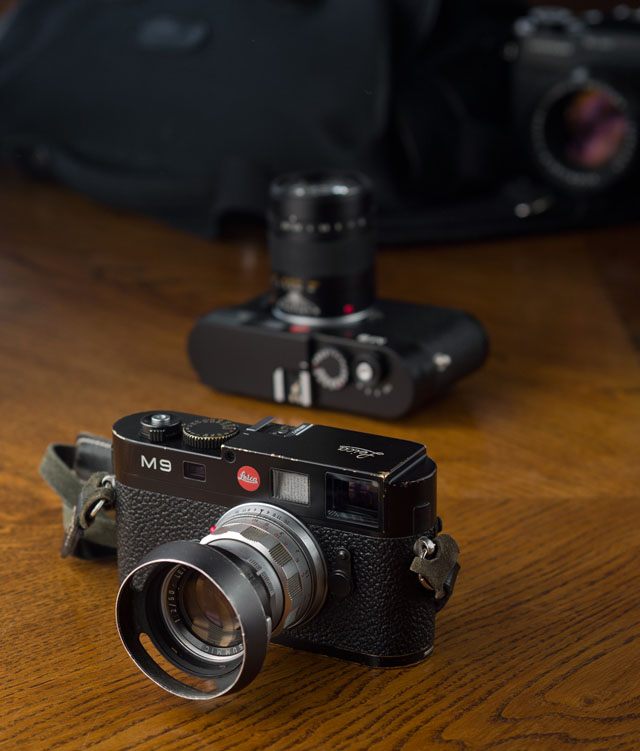
Leica M9 digital rangefinder (2009). © Thorsten Overgaard.
MACRO = Macro lens. The Leica 60mm APO-Elmarit-Macro-R ASPH f/2.8 is a 60mm lens for portraits, landscapes, etc. as well as a near focus macro lens. The Leica Q lens can be turned to Macro which enables you to go close so as to enlarge smaller subjects. The Leica M cameras becomes Macro when you add a Macro ring "Oufro" or "Leica Macro M Adapter" that increases the lens' distance to the sensor. The word macro comes from Greek makros ‘long, large.’
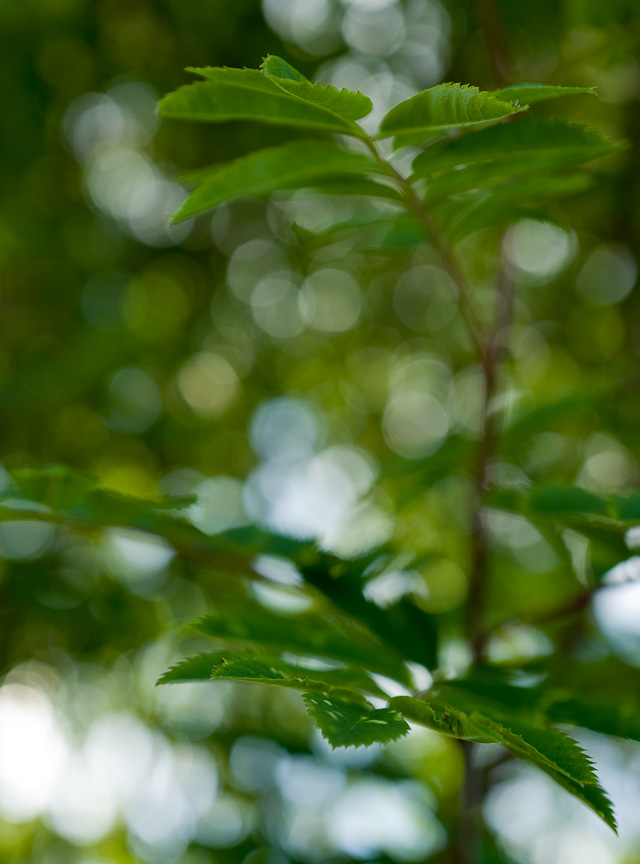
The word macro comes from Greek makros ‘long, large.’ The Leica 60mm APO-Elmarit-Macro ASPH f/2.8 is both a 60mm lens for portraits, landscapes, etc. as well as a near focus macro. © Thorsten Overgaard.
Mandler, Dr. Walter (1922 - 2005)
Legendary Leica lens designer and CEO of Ernst Leitz Canada (ELCAN) 1952-1985. Read more in Leica History.
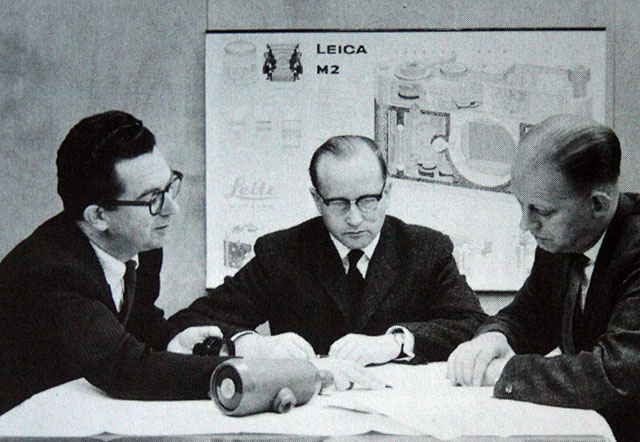
Dr. Walter Mandler (center) at the Ernst Leitz Camera factory.
Megapixel (or MP) - Millions of pixels. See pixel further down. How many units of RGB is recorded by a given sensor by taking height x widt. A Leica M10 delivers a 5952 x 3968 pixel file = 23,617,536 piexls. On a screen the resolution you choose determines the size of the image. Say you have a 5000 pixel wide file and your screen is set for 8000 pixels wide. Then the image will fill only the 5000 pixels fo the 8000 and the rest will be empty, If you then change the screen resolution to 5000 wide, the image would be able to fill out the whole screen.
Meßsucher = (rangefinder or distance finder) = Mess = range, sucher = finder. It is always correctly written with the "ß". There are technically not three "s", rather the "ß" and one "s" because it is a word constructed by the combining of two precise words.
MF (Manual Focus) for lenses that are focused by hands, as opposed to Auto Focus.
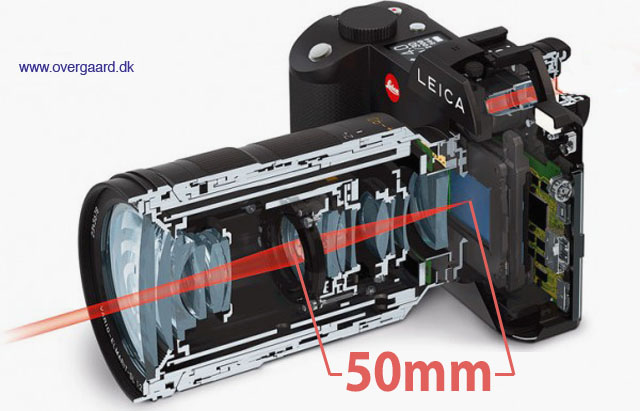
Focal length is determined by the distance from focus inside the lens to sensor surface to, and is given in milliemeters (mm). © Thorsten Overgaard.
mm = millimeter(s), as in a 50mm lens. (Earlier in lens history lenses focal length was given in cm = centimeters; as in a 5 cm lens). For anyone used to centimeters and millimeters, it’s no wonder. But if you grew up with inches, feet and yards, you may have had a hard time grasping what a 50mm lens was. But as lenses were designed first in Europe, the metric system with centimeters and millimeters was used to describe lenses.
(Leica and others made lenses for a while with either meter scale or feet scale; but then eventually started including meter and feet on all the lenses (two scales, usually distinguished with different colors). However, the lens' focal length remained always 50mm, 75mm and so on).
The reason a 50mm lens is a 50mm lens is that there is 50mm from the focus plane (the film or sensor surface) to the center of focus inside the lens. When photography was a young subject, it was engineers who made it all, and the users were expected to understand. The engineers were so into the making of the lenses, that it apparently never dawned upon them that today’s users would think of a 21mm lens as a wide angle lens rather than a lens where there is 21mm from the sensor to the center of focus inside the optics.
MP
a) Stands for Mechanical Perfection, as in the Leica M-P.
b) Megapixels (millions of pixels).
c) Megaphotosites (millions of photosites).
ND
Neutral Density filters are grey filters function as 'sunglasses' for lenses. They simply block the light so that a lens can work at for example f/0.95 or f/2.0 in sunshine.
If a camera is set to 200 ISO and the maximum shutter speed is 1/4.000, this will usually result that the lens has to be at f/2.8 or smaller aperture in sunshine. Else the image will over-exposed. So in order til stay within the maximum shutter speed of 1/4.000 and still use a lightstrong lens wide open, one mount a ND-filter that reduce the light with 3 stops (8X) or 6 stops (64x).
For video ND-filters are used quite a lot (as the shutter speed for video is 1/60), and ND-filters are also used to reduce the light for really long multi-exposures at night (stop-motion video and stills).
ND-filters also exist as variable ND-filters so one can adjust the amount of light going through from for example 1 stop (2X) to 6 stops (64X).
ND-filters also exist as graduated ND-filters where the top of the filter is dark and then gradually tone over in no filter (so as to reduce the skylight in a landscape for example).
The ND filters are called Neutral because it is a neutral filter. It doesn't change colors, only the amount of light.
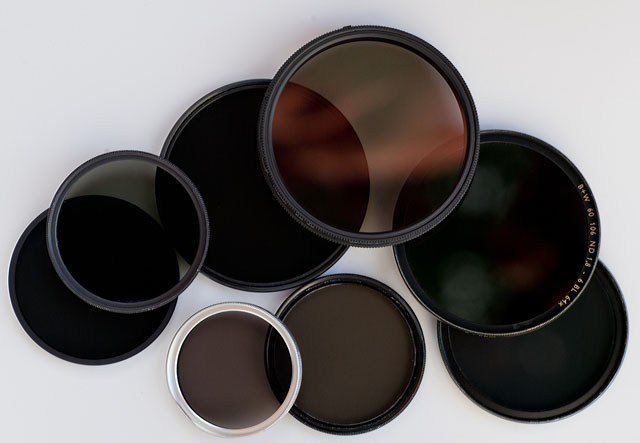
ND-filters / gray-filters.
Noctilux = Also known as "King of the Night" because "Nocti" means Night and "Lux" means Light. The f/1.0 lenes from Leica are named "Noctilux". The first Leica Noctilux lens was the 50mm Noctilux f/1.2 which shortly after it's introduction was improved to the 50mm Noctilux f/1.0. In the current model the f-stop has been improved further to f/0.95.
"Noctilux" refers to the maximum lens aperture - here f1.0 . "Nocti" for nocturnal (occurring or happening at night; ORIGIN late 15th cent.: from late Latin nocturnalis, from Latin nocturnus ‘of the night,’ from nox, noct- ‘night.), "lux" for light. The Leica Noctilux 50mm f1.0 is famous for enabling the photographer to take photos even there is only candleligts to lit the scene. See the article "Leica Noctilux - King of the Night"
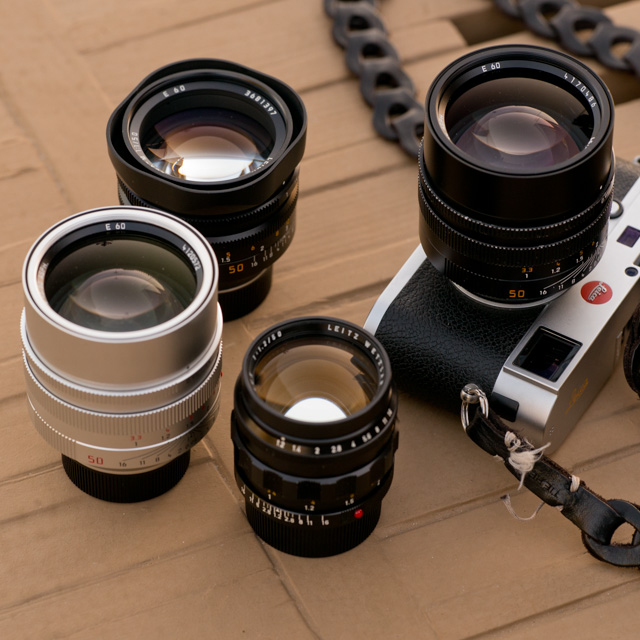
The Noctilux "King of the Night" lens. From left the f/0.95 in silver (same on the camera, in black), the f/1.0 in the back and the rare and expensive first model, the f/1.2 in the front.
No.
Number, on this site Leica catalog numbers or order numbers. Some the numbers changed depending on the number of cams in the lens: The Elmarit-R f2.8/135mm started life as No. 11 111, however when fitted with 2 cams for the SL became No. 11 211, yet another No. for the 3 cams lens and a fourth number for 3 cam only at the end of its life. Number changes also applied to M lenses depending on whether they were screw-thread, bayonet or for M3 with “spectacles”. Thus the No. in the Thorsten Overgaard Leica Lens Compendium list is a guideline but not a comlete list of existing catalog numbers.
Optic = Eye or vision. From French optique or medieval Latin opticus, from Greek optikos, from optos ‘seen.’
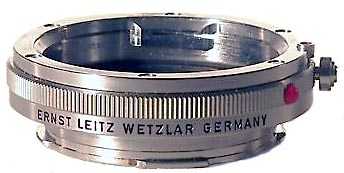
Oufro (model 16469Y)
An original Leitz Extension Ring (produced 1959-1983 as part no. 16469). Used with Oubio for all the longer (125mm+) Visoflex lenses and without OUBIO for 35/50mm. OUFRO can be stacked for greater magnification and will work on the Leica M Type 240 as macro for all lenses (including the Noctilux, 90mm APO-Summicron and even 21mm lenses).
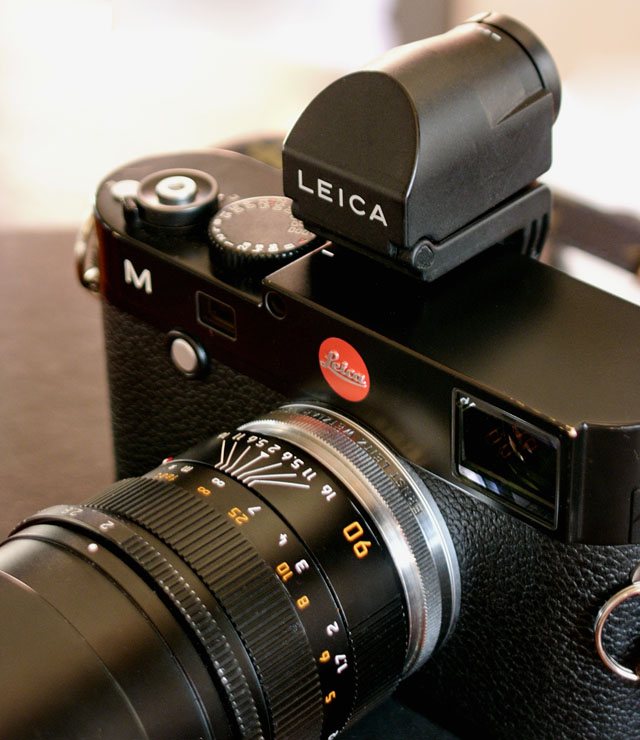 The OUFTO on Leica M Type 240 with Leica 90mm APO-Summicron-M ASPH f/2.0. The OUFTO on Leica M Type 240 with Leica 90mm APO-Summicron-M ASPH f/2.0.
Perspective = The way objects appear to the eye; their relative position and distance. Also, selective focus (foreground and background out of focus) can change the perception of perspective (also see Three-dimensional). A wide angle "widens" the perspective and makes objects further away appear smaller than they are to the eye; and objects closer, relatively larger than they are to the eye. A tele lens will "flatten" the perspective and often objects further away will appear relatively larger than close objects than they are in real life. A 50mm lens is the one closest to the perspective and enlargement ratio of the human eye.
The word Perspective comes from the latin word for optics (perspicere, per- ‘through’ + specere ‘to look’), and so-called Renaissance painting is simply painting done within the framework of optics and the linear perspective it presents.
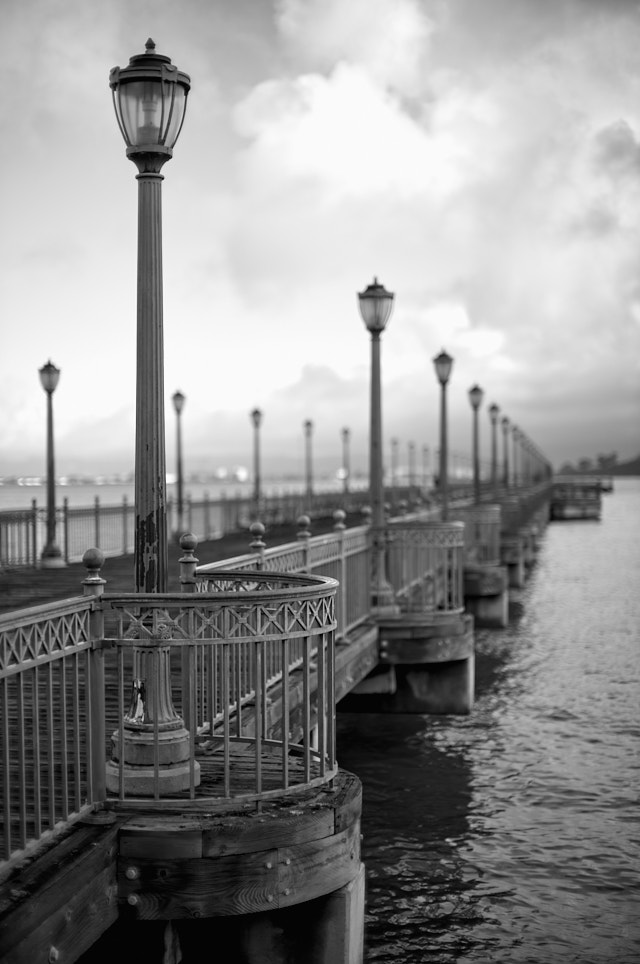
Perspective is relative position and distance. The objects nearby are larger than objects far away. This is how the eye and the mind calculate distance. The eye and the camera automatically captures perspective. In darwing and painting one would see "stupid" two-dimensional drawings 500 years B.C where elements were thrown into the mix without considering that a an object far away must be smaller than if close to the viewer. The word "perspective" comes from "to look through (optics)". Pier 7 in San Francisco by Thorsten Overgaard. Leica M11 with Leica 50mm Noctilux-M ASPH f/0.95.
| |
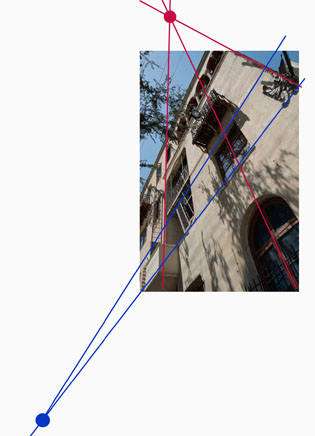 |
| |
Vanishing points are the points where lines meet. This is how you make perspective in paintings and drawings (and some times make movie sets or theatre stages appear more three-dimensional than they are) |
| |
|
Painters works with vanishing points, which is where the lines meet, so as to create an illusion of perspective and three-dimensional effect on a two-dimensional painting or drawing.
The human eye corrects for perspective to an extreme degree. We always see vertical lines vertical and horisontal lines horisontal: The eye has a angle of view equivalent to an 8mm wide angle lens, a size ratio equivalent to a 50mm lens and we focus on relatively small area of the viewing field - one at the time. Three things happens that are worth paying attention to:
1) We compile areas of our view that we focus on, to one conceptual image that "we see". Ansel Adams, the great American landscape photographer pointed out that a large camera used for landscape photography capture every detail in focus and sharp so you can view it in detail after; but the eye does not see everything in focus when you try to compose the landscape photography, the eye scans only one part at a time and stitch the idea together. This makes composing or prevision of a landscape photography challenging.
2) We compile areas of our view that we individually adjust the exposure of. A camera adjust the exposure of the whole image frame to one exposure. That's why what looks like a nice picture to the eye of houses in sunshine with a blue sky above, becomes a photograph of darker buildings with a bright white sky: The camera simply can't take one picture that compare to what we "compiled" with our eyes, adjusting for each type of light.
3) Objects (on a table, for example) in the bottom of our viewing field will appear 100% perspective corrected - to a degree that it is impossible to correct in optics, with or without software correction. A wide angle lens, even with little distortion, will exaggerate the proportions of the closet part so it - to the eye - looks wrong.
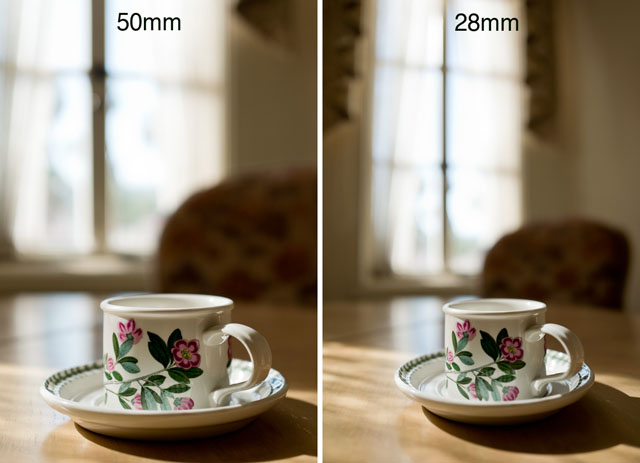
Perspective distortion: Comparing these two photographs you can see how the cup stretches in the 28mm wide angle photograph compared to the 50mm photograph. Both actually has a little stretch because both the cup is in the edge of the frame in both photographs. © Thorsten Overgaard.
Perspective correction - In software like Adobe Lightroom and Capture One Pro there is often a feature to correct perspective (and distortion) like seen below. You can change perspective this way, or at least make believe: If you correct a tall building on teh vertical lines, you will notice that the height of the windows doesn't match the perspective. If the building is with straight lines, the windows should all be of the same size. But a tall building seen from below and corrected with software will have taller windows (closer to camera) in the bottom than in the top (further away from the camera originally).
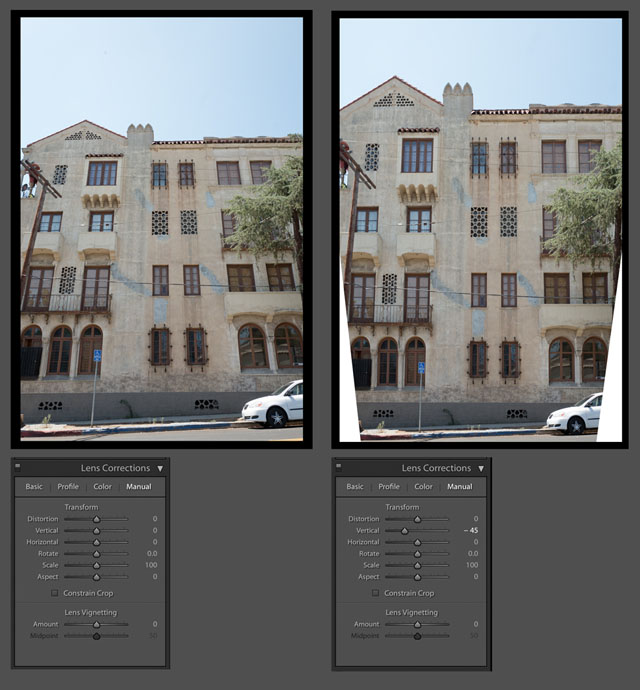
Perspective correction in Adobe Lightroom. © 2017 Thorsten Overgaard.
| |
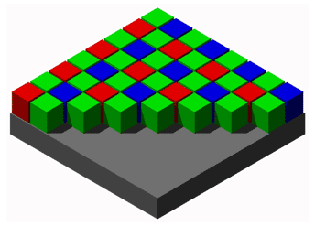 |
| |
A graphic illustration of the typical Bayer Color Filter Array on an RGB sensor. It's called a Bayer filter because Bryce Bayer of Eastman Kodak invented the technology of filtering incoming light into RGB and distribute it into the the photosites that each read just one color (R/G/G/B). |
| |
|
Photosite - The unit in a digital camera sensor that records intensity of either red, green or blue. Unlike the output of a sensor, measured in pixels (and where each pixel contains RGB), the photosite records only one color each, and it's intensity (how bright it is). A photosite can not distinguish colors, which is why there is a Color Filter Array (basically a prism) above them to filter the colors and send information to the photosite if 's a R, G og B color. See illustration below. In a monochrome sensor (as in the Leica M Monochrom and the Phase One Achromatic), all photosites are recording intensity of light only as there is no concern which color it is, and there is no color filter.
The ratio of photosites to pixels is not a given. Each block of 4 contiguous photosites contains one photosite sensitive to low wavelengths (blue), one photosite sensitive to high wavelengths (red), and two identical photosites sensitive to medium wavelengths (green). So four photosites would be the minimum to create one 'full-color' pixel. Apart from that, depends on the sensor specifications, which is different from brand to brand. Sometimes four photosites (two Green, one Red and one Blue) makes up one pixel, at other times it's more photosites to one pixel; and there is also pixels sampled from photosites across (sort of overlapping patterns).
Pixel - Made up word from Pix (picture) and el (element). A pixel is the smallest full-color (RGB) element in a digital imaging device. The physical size of a pixel depends on how you've set the resolution for the display screen. The color and tonal intensity of a pixel are variable, meaning that each pixel contains RGB. This is different from a camera sensor's small eyes (photosite) that are an intensity of either red, green or blue. You could say that the digital sensor's photosite (where each unit collects just one color; red, green or blue) is the input technology, whereas the pixels on a screen (where each pixel contains red, green and blue) is the output device. So while sensors are measured in megapixels (mega = million), it's their output unit of pixels, and not the input unit of photosites that is measured and stated. See illustration below.
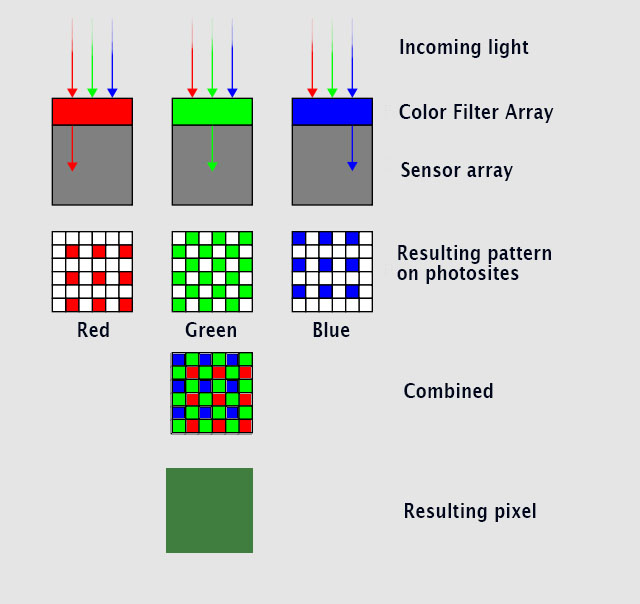
Here's an illustration of how light goes through a color filter that enables the underlying photosites to each record if it';s an R, G or B color - combined - makes up one pixel containing RGB. © Thorsten Overgaard.
R = Resolution, in the name Leica M10-R camera model (2020).
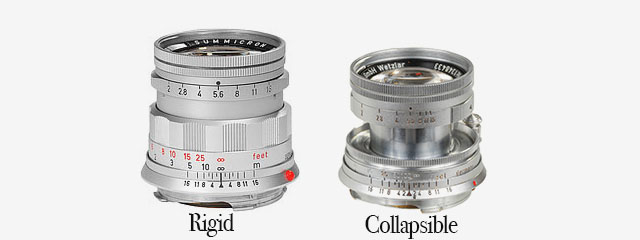
Rigid - Refers usually to the Leica 50mm Summicron-M f/2.0 "Rigid" of 1956.
It is called "Rigid" because, unlike the 50mm Collapsible, this one is not able to be changed.
Rigid means stiff, uable to be forced out of shape. Not able to be changed. From Latin rigere, "be stiff".
The name is a little confusion nowadays as all or most lenses are rigid today, but back in 1925-1956, many lenses were collapsible so the camera was compact when not in use. Just like compact cameras today often has a lens that extrudes when the camera is turned on, and collaps into the camera body when the camera is turned off.
RF
(R)ange (F)inder - the mechano-optical mechanism which allows M Leicas to focus.
Alternative meaning - RF is also shorthand for Hexar RF , Konica's motorised "M-lens-compatible" rangefinder camera released in 2000.
S = Single image. When the ring by the shutter release on top of the camera (or in the menu of a digital camera in case it does not have this ring on the ourside) is moved from OFF to S, the camera takes only one photo at the time (Single). The other possibility is Continuous where the camera takes pictures continiously as long as the shutter release button is helt down. (see above).
Saturation: How colorful, intense or pure the color is. Less saturation would be less colorful, more saturation would be more colorful. In today’s photography, de-saturating a photo on the computer will gradually make it less and less colorful; and full de-saturation would make it into a black and white photo.
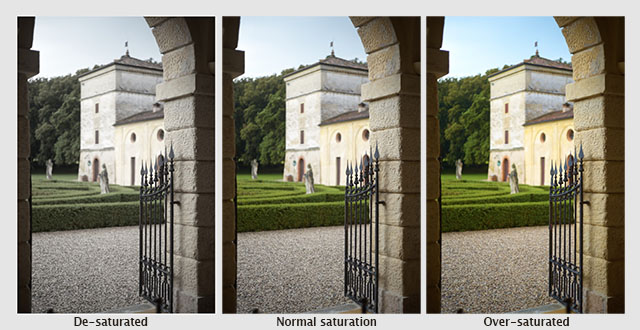
A photo from Verona, Italy de-saturated, normal saturated and over-saturated. © Thorsten Overgaard.
Sensor = A device that detects a physical property (like light) and records it. A camera sensor is a plane plate with thousands of small “eyes” with (photosites) a lens in front of each (CFA, Color Filter Array), which each individually records the amount of red, green and blue light rays that comes through the lens. Together, Red, Green and Blue form all colors of the spectrum, which becomes a pixel. Sensor comes from Latin sens- ‘perceived’.
Sharpness - See “Focus”
Shutter speed dial - The dial on top of the Leica M where you can set the shutter speed manually. It can also be set to A which stands for Aperture Priority (where the camera suggests a shutter speed; or when you move the dial away from A, the camera will show arrows in the viewfinder, suggesting which direction to change the Aperture to, to get the correct exposure).
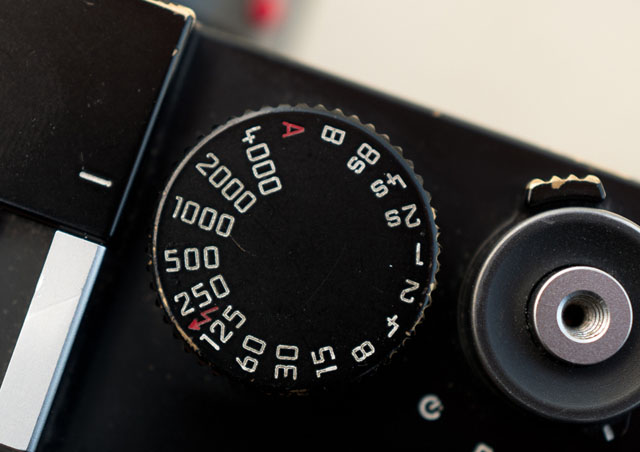
Shutter speed dial set to 1/1000 of a second.
| |
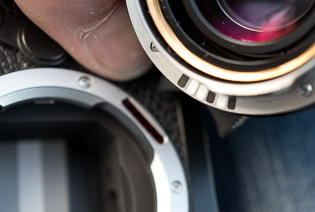 |
| |
The 6-bit code on the flange of the lens is read by the sensor on the Leica M bayonet of all digital Leica M cameras since 2006. © Thorsten Overgaard. |
| |
|
Six-bit code (6-bit code) - An engraving on the flange of M-lenses that makes it possible for digital M-cameras to recognize the lens that has been mounted. The camera can include information on the attached lens and its focal length in EXIF data and make digital corrections for lens-specific flaws, such as color-cast or vignetting. Six-bit coding was introduced for all M-lenses sold since 2006, but many older lenses can be retrofitted with the code at Leica Camera AG in Wetzlar.
SL = Abbreviation for Single-Lens as in the Leica SL that is a camera without reflex (mirror).
SLR = Abbreviation for Single-Lens Reflex; the lens that forms the image on the film/sensor also provides the image in the viewfinder via a mirror. Newer camera models has aen EVF (Electronic Viewfinder) that displays in the viewfinder what the sensor sees in real-time.
| |
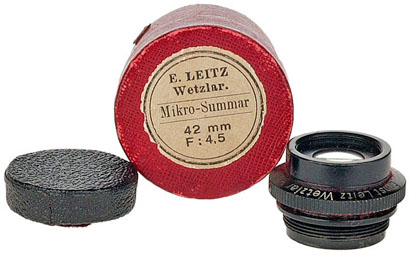 |
| |
Leitz Wetzlar Mikro-Summar 42mm f/4.5 lens anno 1910 might be the first lens carrying the name Summar. |
Summar - (or a story of name development)
The 1933 lens 50mm f2.0 Summar: It started out as Summar(f2.0), then the Summitar (f2.0 in 1939), then the Summarex(f1.5 in 1948), then the Summaron(35mm f.2.8 in 1948, then later f2.0, f3.5 and f5.6 lenses), then the Summarit (f1.5 in 1949 and used again for the 40mm f2.4 on the Leica Minilux in 1995, then again for the 35mm, 50mm, 75mm and 90mm Summarit f2.5 in 2007) then the Summicron(f2.0 in 1953 for the collabsible 50mm) and finally the Summilux(50mm f1.4 in 1959).
ORIGIN of Summar is unknown.
Summarex
The great thing about being a lens designer is that you get to name the lens. Dr. Max Berek who worked for Leitz from 1912 till his death in 1949 named lenses after his two favorite dogs. One was Sumamrex named after his dog Rex, the other Hektor named after his dog Hektor.
Summarit
Refers to the maximum lens aperture - here f/1.5.
Summicron = Refers to the maximum lens aperture - here f/2.0 . There are many guesses how this name came about, a popular one being that the "summi" came from "summit" (summit means the highest point of a hill or mountain; the highest attainable level of achievement) while the "cron" came from "chroma" (ie. for colour). Not so: The name (Summi)cron was used because the lens used Crown glass for the first time, which Leitz bought from Chance Brothers in England. The first batch of lenses were named Summikron (Crown = Krone in Deutsch). The Summi(cron) is a development from the orignal Summar (the 50mm f2.0 lens anno 1933). Vario-Summicron, Vario-Elmarit is Leica Camera AG's name for zoom lenses, for example the Vario-Summicron f/2.0 as the one that is on the Leica Digilux 2.
Summilux = Refers to the maximum lens aperture - here f/1.4 , "-lux" added for "light" (ie. the enhanced light gathering abilities). In Leica terminology a Summilux is always a f/1.4 lens and a Summicron is a f/2.0 lens.
Telyt
Lens nomenclature - short-hand for " telephoto " (tele- is a combining form, meaning to or at a distance) and used in names of instruments for operating over long distances : telemeter. The name has been used for a number of tele lenses from Leica.
ORIGIN: from Greek t?le- ‘far off.’
Three-dimensional = Having the three dimensions of height, width and depth. In photography and lens design, three-dimensional effect is also the perception of even small micro-details; the texture of skin can appear flat and dead or three-dimensional and alive. Also, selective focus (foreground and background out of focus) can change the perception of depth. Also see Perspective.
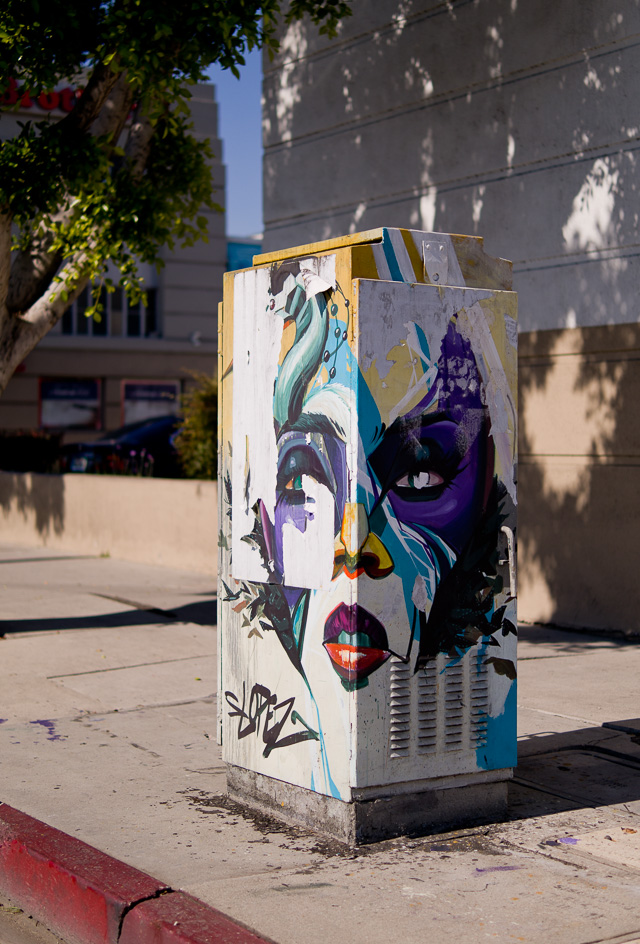
Three-dimensional = Having the three dimensions of height, width and depth. Melrose Avenue in Los Angeles. Leica TL2 with Leica 35mm Summilux-TL ASPH f/1.4. © 2017 Thorsten Overgaard.
Leica T is the compact camera developed by Leica Camera in 2014 as a touch-screen operated camera that can take the Leica L mount lenses made for this camera and the Leica SL and Leica CL. This camera series was names Leica TL later. See my article Compact Leica Cameras for more.
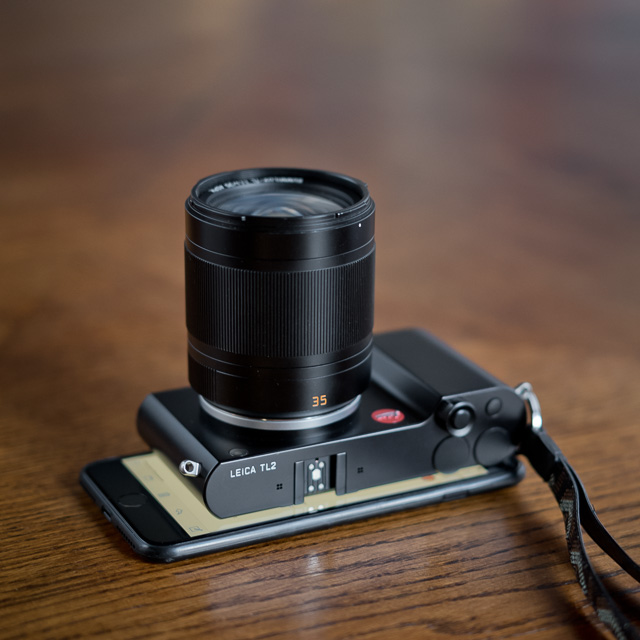
The Leica TL2 (2017) with a 35mm Summilux-L f/1.4 lens, compared with the Apple iPhone 7 Plus. © Thorsten Overgaard.
TTL
(T)hrough (T)he (L)ens light metering, usually WRT the flash metering capabilities built into the R6.2, R8, R9, M7 & M6TTL cameras.
V-Lux is a series of compact SLR-like digital cameras by Leica Camera AG developed with Panasonic since 2006, starting with the Leica V-Lux 1 (2006), V-Lux 2 (2010), V-Lux 3 (2011), V-Lux 4 (2012), V-Lux Typ 114 (2014), V-Lux 5 (2018). See my article "Compact Digital Leica Cameras".
To add confusion, Leica also made a Leica V-Lux 20 in 2010, V-Lux 30 in 2011 and a Leica V-Lux 40 in 2012 that was a temporarily renaming of the Leica C-Lux series.
Vario- is the Leica Camera AG name for zoom lenses. Vario-Elmarit, Vario-Elmar and Vario-Summicron and so on.
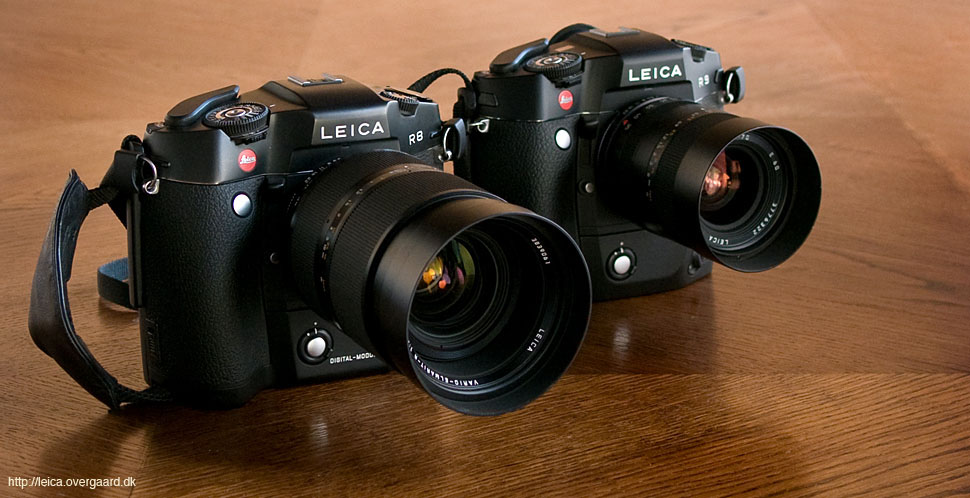
The Leica 35-70mm Vario-Elmarit-R f/2.8 ASPH (left) and the Leica 35-70mm Vario-Elmar-R ASPH f/4.0 (right)
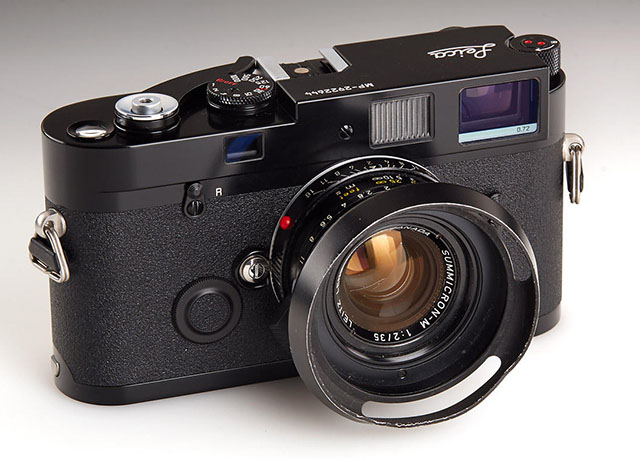
Ventilated shade on a 35mm of Elliott Erwitt's Leica MP camera.
Ventilated Shade - A shade is a hood in front of a lens that provides shade from light going straight onto the lens from outside what you are photographing, which could cause internal reflections like flare, which would make the picture less contrasty.
The ventilated shade has holes so it doesn't obstructs the view from the viewfinder. In many of today’s mirrorless cameras where there is no viewfinder looking ver the lens, so there is no actual need for a ventilated shade; but they are considered classic or vintage looking and are still in high demand. It makes no difference for the purpose of the shade (to create shadow) if it is ventilated or not.
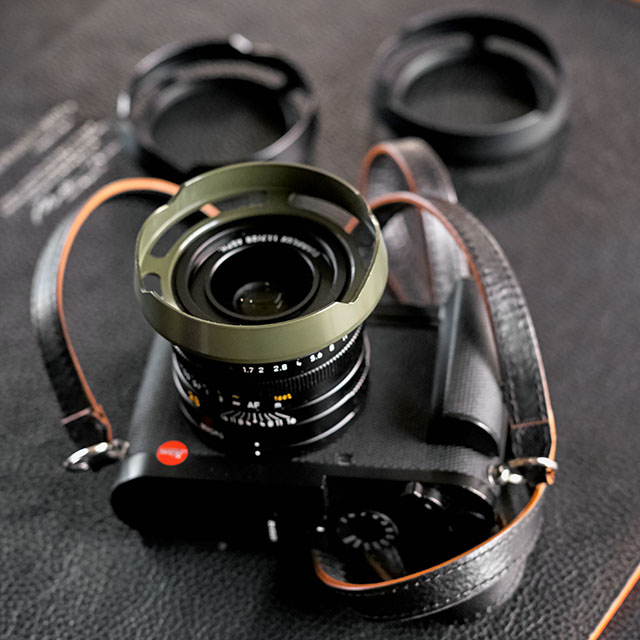
Ventilated Shade for the Leica Q. I make ventilated shades for most lenses and sell them from here.
Viewfinder a device on a camera showing the field of view of the lens. Also known as the German word "Messucher" (or Meßsucher).
1) A built-in viewfinder in a camera that simply show the frame you get when you look through the viewfinder.
2) A rangefinder viewfinder which is also used to focus the lens. In Leica M cameras two pictures has to meet and lay 'on top of each other' for the picture to be in focus.
3) An external viewfinder, usually on top of the camera in the flash shoe, so as to show the field of view of lenses vider than what the built-in viewfinder can show (15mm, 21mm, 24mm, 28mm etc viewfinders exist)
4) Very simple "aiming-devices" on top of a camera that is simply a metal frame without any optics. Just a frame, as for example very old cameras (the original Leica), or when using cameras in diving where you can't look through the camera.
5) A Electronic Viewfinder (EVF) that shows what the sensor sees "live".
WB = Short for White Balance:
White Balance = (often referred to as WB) in camera menus. See my aticle "Adjusting the White Balance in Photoraphy" for explanation, illustrations and examples.
WLAN = German short for WiFi. In camera menus, Leica may refer to WLAN, which is simply German for WiFi, (and for some reason they refuse to believe that the rest of the world doesn't call it for WLAN like they do). WLAN stands for wireless local area network.
X1 - The Leica X1 was released in September 2009, the Leica X2 in 2012, and Leica X Typ 113 was released in September 2014, all with a fixed 23mm f/1.7 lens. Leica X Vario Typ 107 and Leica X-E Typ 102 was released later. A Leica X-U underwater edition was released in 2026. See my article Compact Leica Cameras for more.
XML = Stands for extensible markup language, which is a way enclose information to a document about how to format it, and more.
XMP = Stands for extensible markup platform (also known as XMP sidecar) and is a standard developed by Adobe and standardized by the International Organization for Standardization ISO. XMP is a 'sidecar' to an image that contains the EXIF data (camera settings) as well as other data about the image recording and editing that would norally be in proprietary formats (only readable by certain software). XMP in short is a container enclosed with the image as a 'sidecar' that contains all available information (EXIF data about settings, IPTC data (who took the photo, copyright info, image captions, etc), but most noteable, the XMP allow you to include information about the editing that was performed to the raw or DNG file, so that when you open the image file in another editing software, the raw data, as well as information about the crop, exposure compensation and other editing you did to the photo, is included).
In Adobe Lightroom Classic, one should make sure to select that editing information is written to the XMP file of each image (go to Lightroom > Catalog Settings > Metadata and then click "Automatically write changes into XMP").
Zone System -A system of 11 greytones. Ansel Adams worked out the Zone System in the 1940's with Fred Archer. It may look as simply a grey scale (and it is) but it's the use that has troubled many. If you use a normal external light meter, it will give you the exact amount of light and you can expose your photograph based on that and it will be correct. 
What Ansel Adams basically did was that he studied (by measuring with a spot meter), what the exact grey tones were of the sky, the clouds, the sand, the water, the skin and so on at different times of the day.
You could say that he built up a conceptual understanding of how different materials of different colors and reflective surface would look in black and white at different times of day (or different light conditions). He also realized that a tone changes for the human eye depending on it's size and in which context of other tones it is seen.
In short, you could say that the Zone System is know how something would look in black and white when looking at a scenery. Some who have struggled with the Zone System have done so because they think it is a rule. It is not.
| How Ansel Adams made New Mexico look: |
|
How most people see New Mexico: |
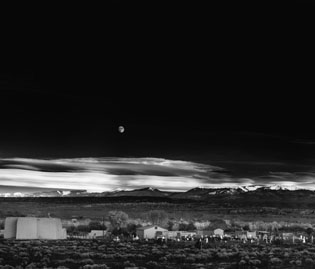 |
|
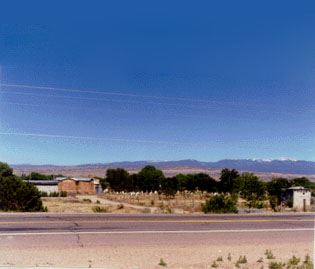 |
| The artistic use of the Zone System. |
Ansel Adams developed the Zone System to understand light for himself, but also as a fundament for teaching the light, exposure and making the final photograph. How will it look if you do the usual, and what will it look like if you manipulate it. But most interstingly; how do you work with light, cameras and photographic materials to achieve the look you envision.
The Zone System is meant as a basis on which to create your own aesthetic style and communication. Photography is painting with light. The greyscale is our palette. Ideally we should have a conceptual understanding of the tones and be able to use them intuitive. That was his vision for us all.
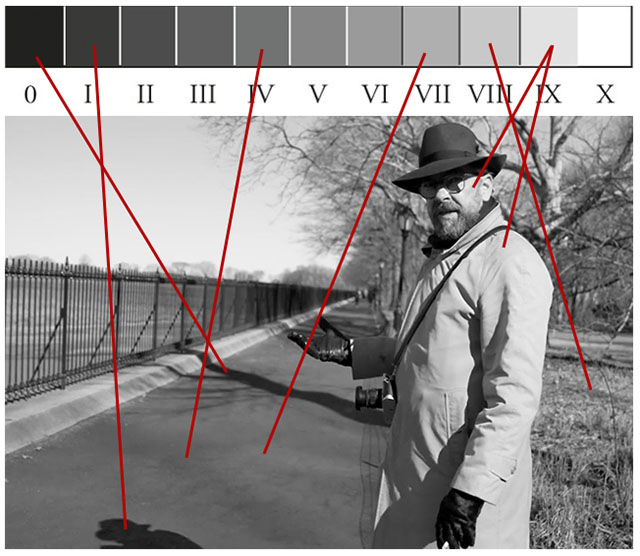
Thorsten Overgaard in New York, explaining the Zone System in his "Street Photography Masterclass".
Ø - Diameter. As in Ø49 for example which means that the filter diameter is 49mm for this lens (or if a filter is Ø49, it is 49mm in diameter and fits that Ø49 lens). Leica uses E to express their filters sizes, as in E49 for a 49mm filter size.

|
![]()
